Was Serena's odd Wimbledon a sign of final fade or fuel for resurgence?

This story appears in the Aug. 25, 2014, issue of Sports Illustrated. Subscribe to the magazine here.
Is this the endgame? Or just another comeback in a career rife with returns, the lull before one final storm of glares and shrieks and pitiless winning? Only a fool dares to guess. Because after 17 years, 17 Grand Slam singles titles, 17,000 “Come on!”s, all we truly know about Serena Williams is that we never know what’s next. The one consolation is that she may well be as mystified as you.
America’s last tennis great, after all, contains multitudes. She has spoken for years about her atomized personalities -- Summer the English letter-writing lass, Psycho Serena, mean party girl Megan and “nuts” Taquanda, who has been on leave since her epic 2009 tirade against a lineswoman at Flushing Meadows. She has done so jokingly, but then, playing this month in Montreal, Williams raved one day that she felt fit and “ready to go the long haul” for the rest of the hard-court season, dismissed her U.S. Open chances the next (“really just looking forward to next year, to be honest”) and then two days later took umbrage when questioned about her mind-set heading into next week’s circus in New York City.
“Are you asking me that?” she said last week, eyes flashing. “You know, I’m more geared up for the U.S. Open. I’m doing everything I can physically, mentally, to make sure that I’m winning that tournament or I’m going to probably be upset.”
Classic Photos of Serena Williams
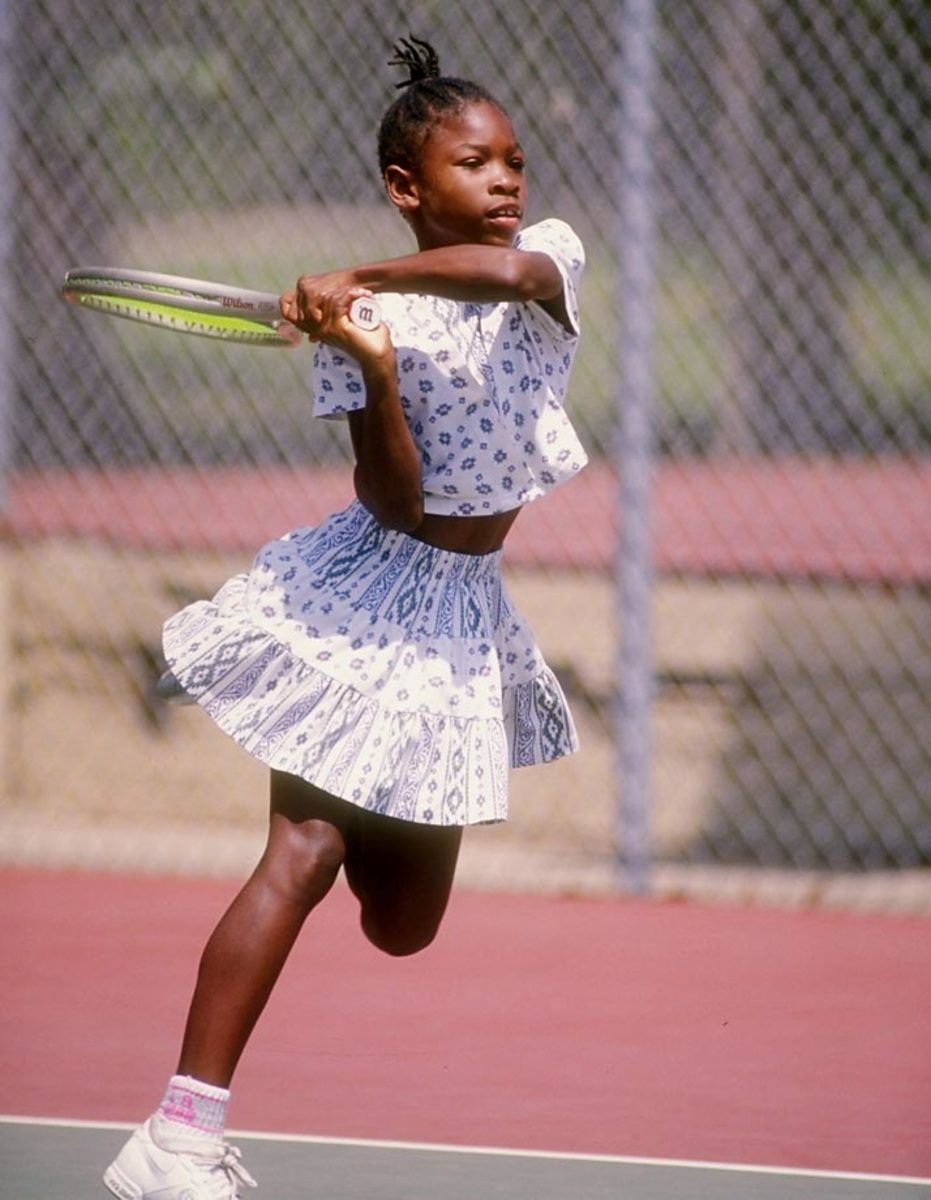
From her humble beginnings, Serena Williams has climbed to the top of the tennis world. Here are some rare photos of the woman Billie Jean King says is the best player in tennis history.
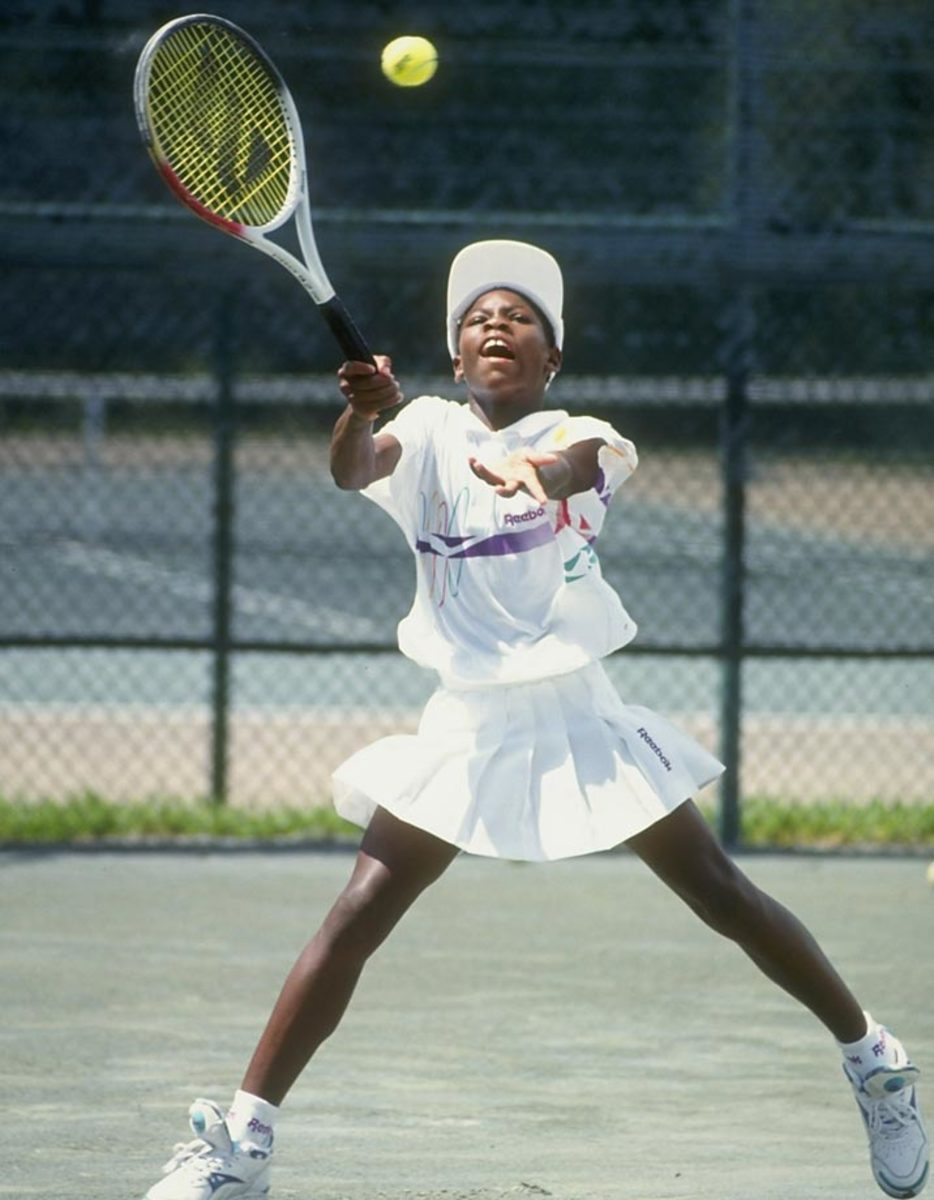
Serena Williams playing tennis in Florida in 1992.
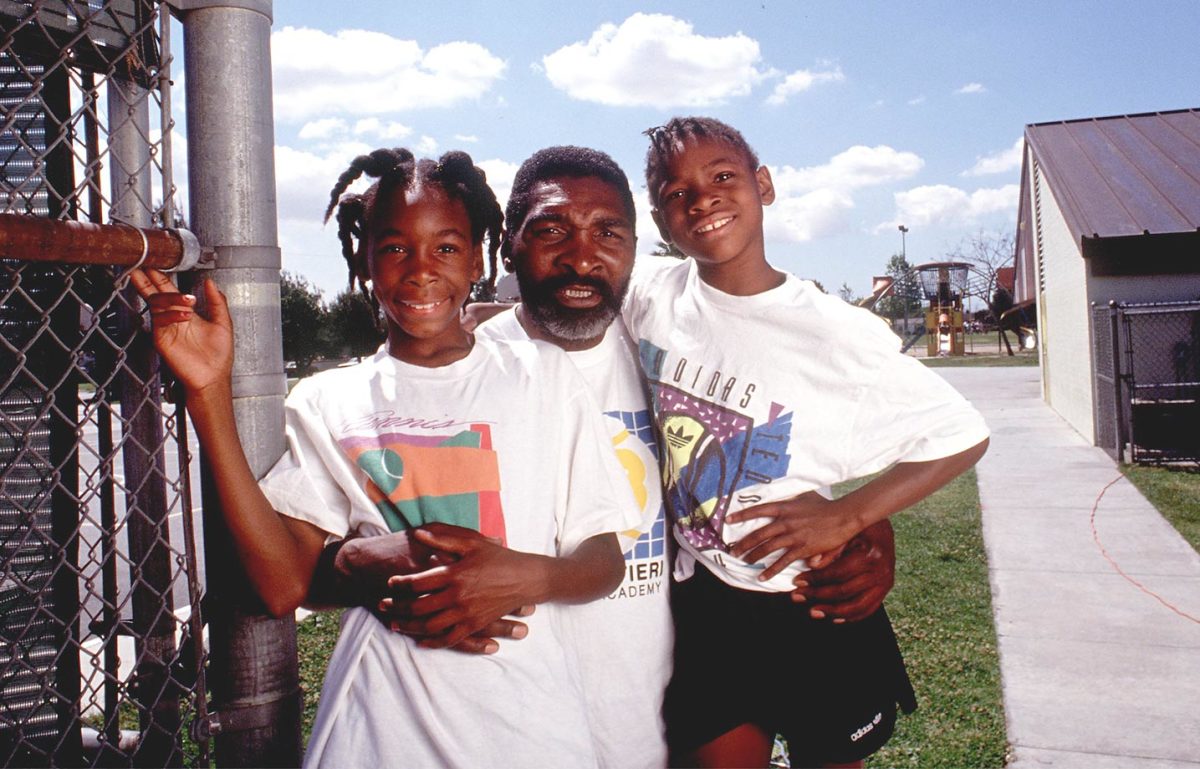
Growing up in Compton, Calif., Serena worked tirelessly with Venus and their father to hone her skills.
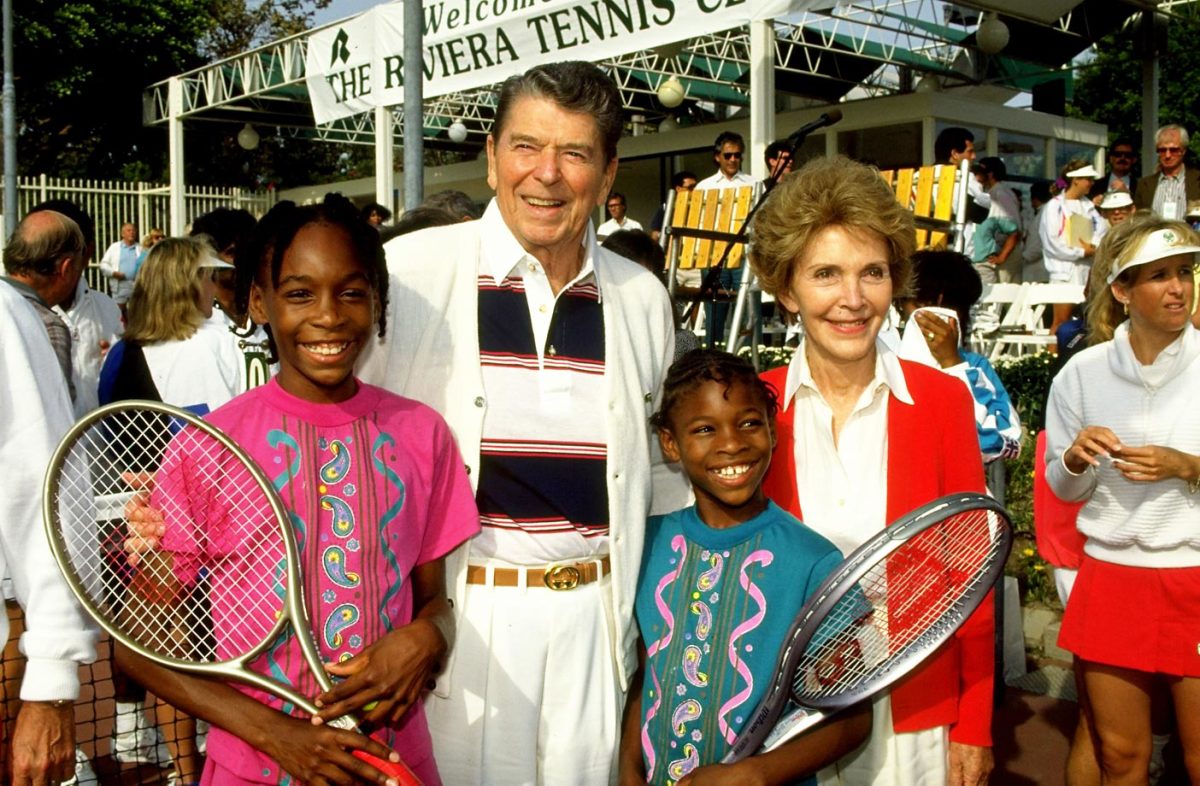
Their California roots got Serena and Venus a photo op with President Ronald Reagan and wife, Nancy.
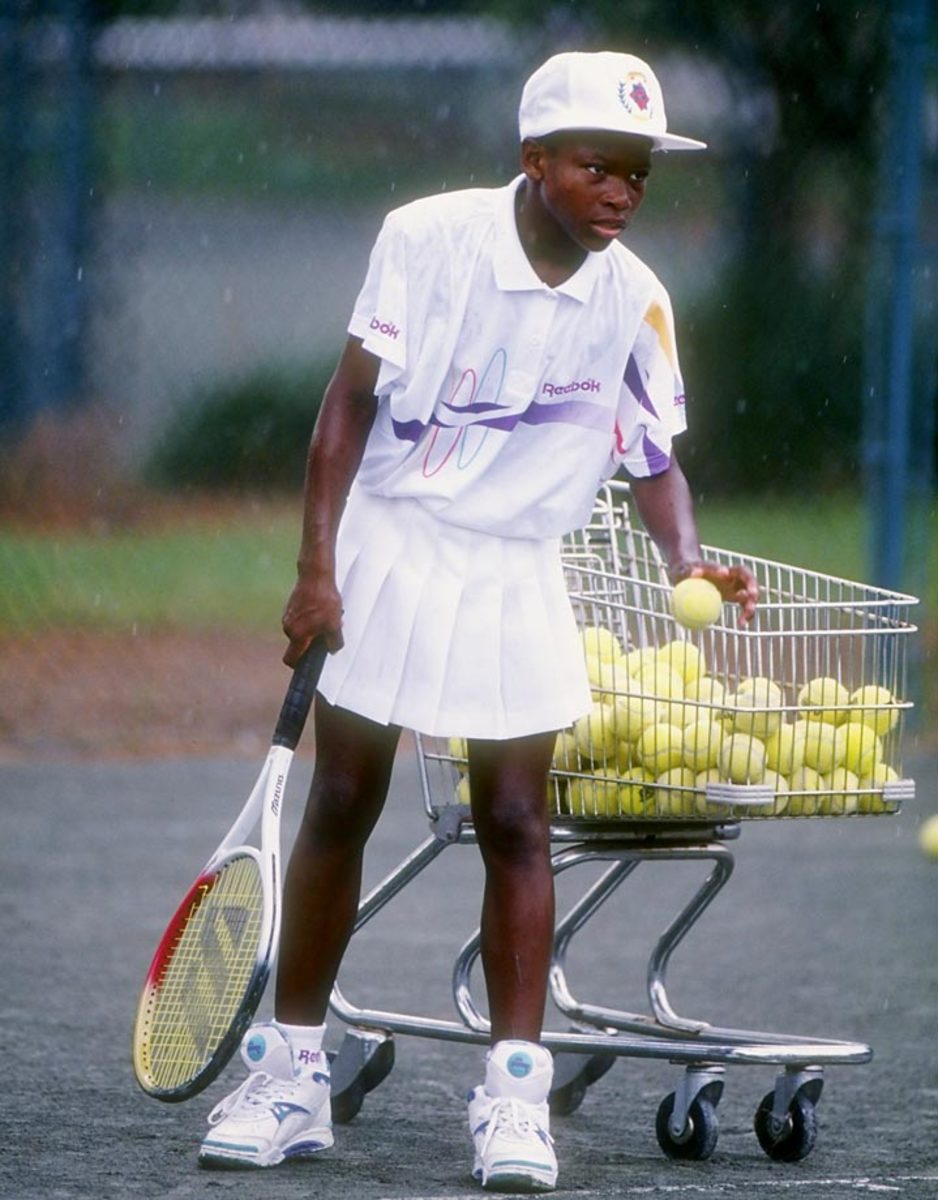
All five of the Williams sisters were exposed to tennis at an early age, but Serena and Venus seemed to display the most interest and strongest prospects.
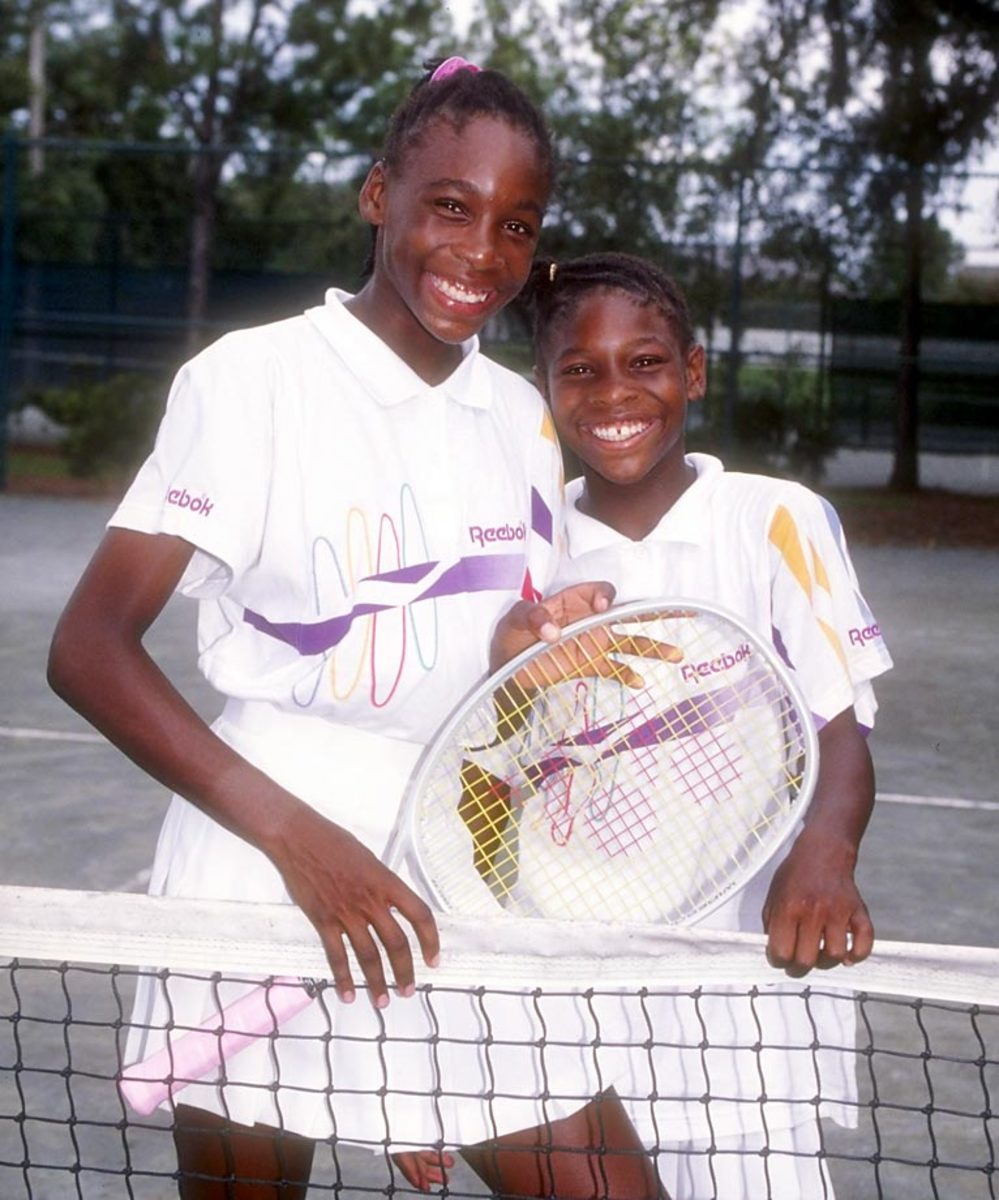
In 1992, Serena, then 10, and Venus, then 12, stunned the tennis world when they each won their single divisions in the Southern California Junior Sectional Championships.
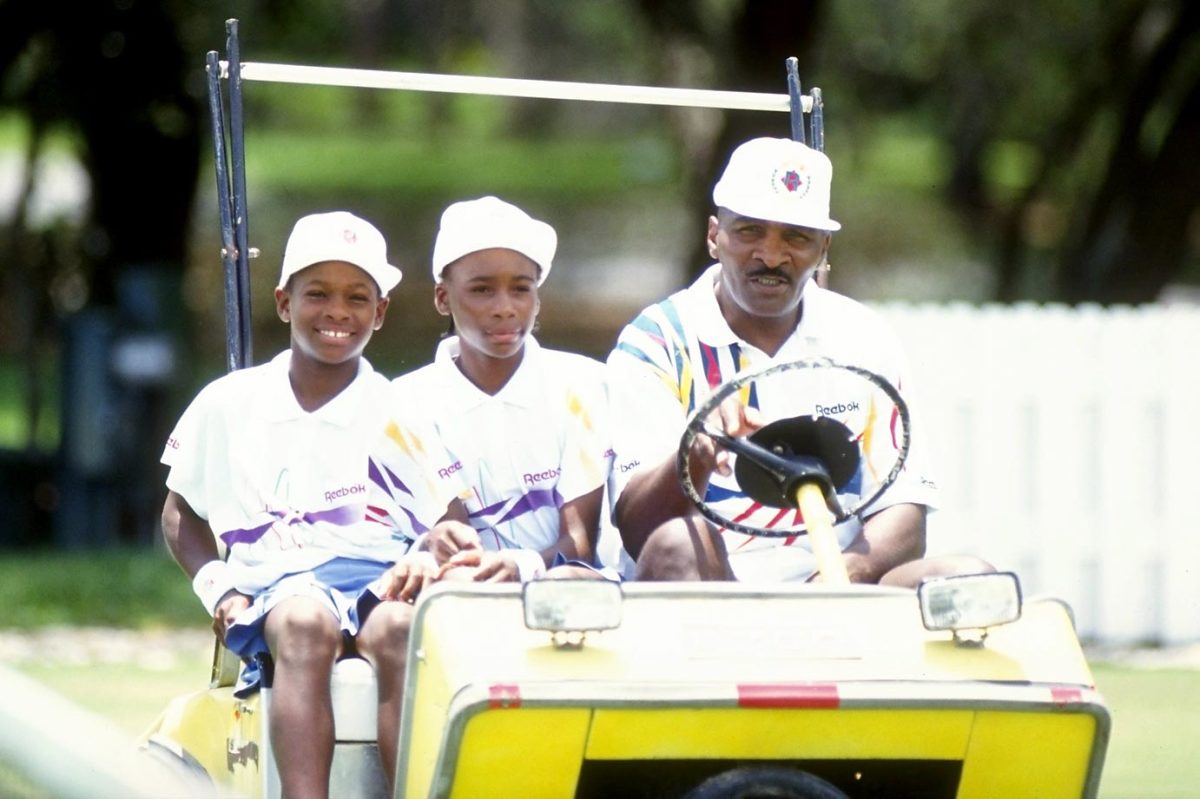
After several years living in Compton, Richard Williams relocated the family to Palm Beach Gardens, Fla., to enroll Serena and Venus in Rick Macci's renown tennis academy.
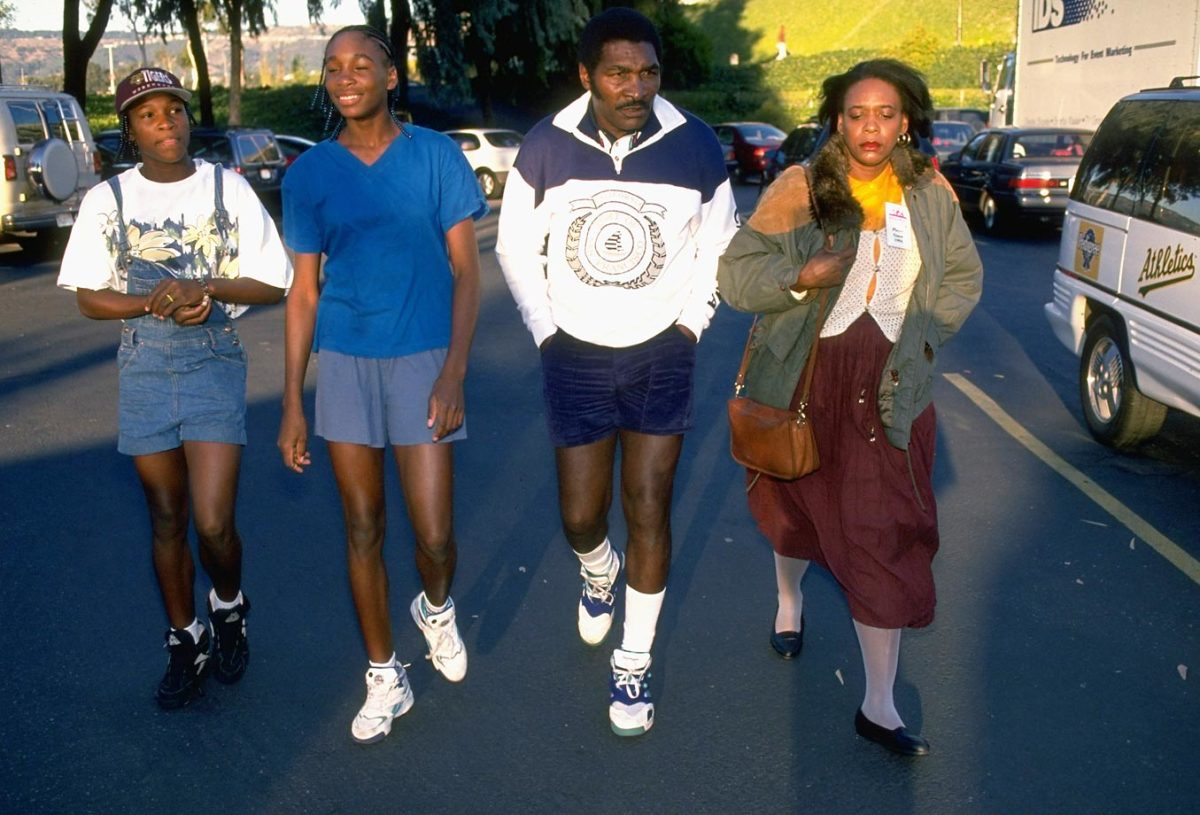
Serena was on hand for Venus's pro debut at Oakland-Alameda County Coliseum Arena in October 1994. The family, including mom Oracene, are pictured here before that event.
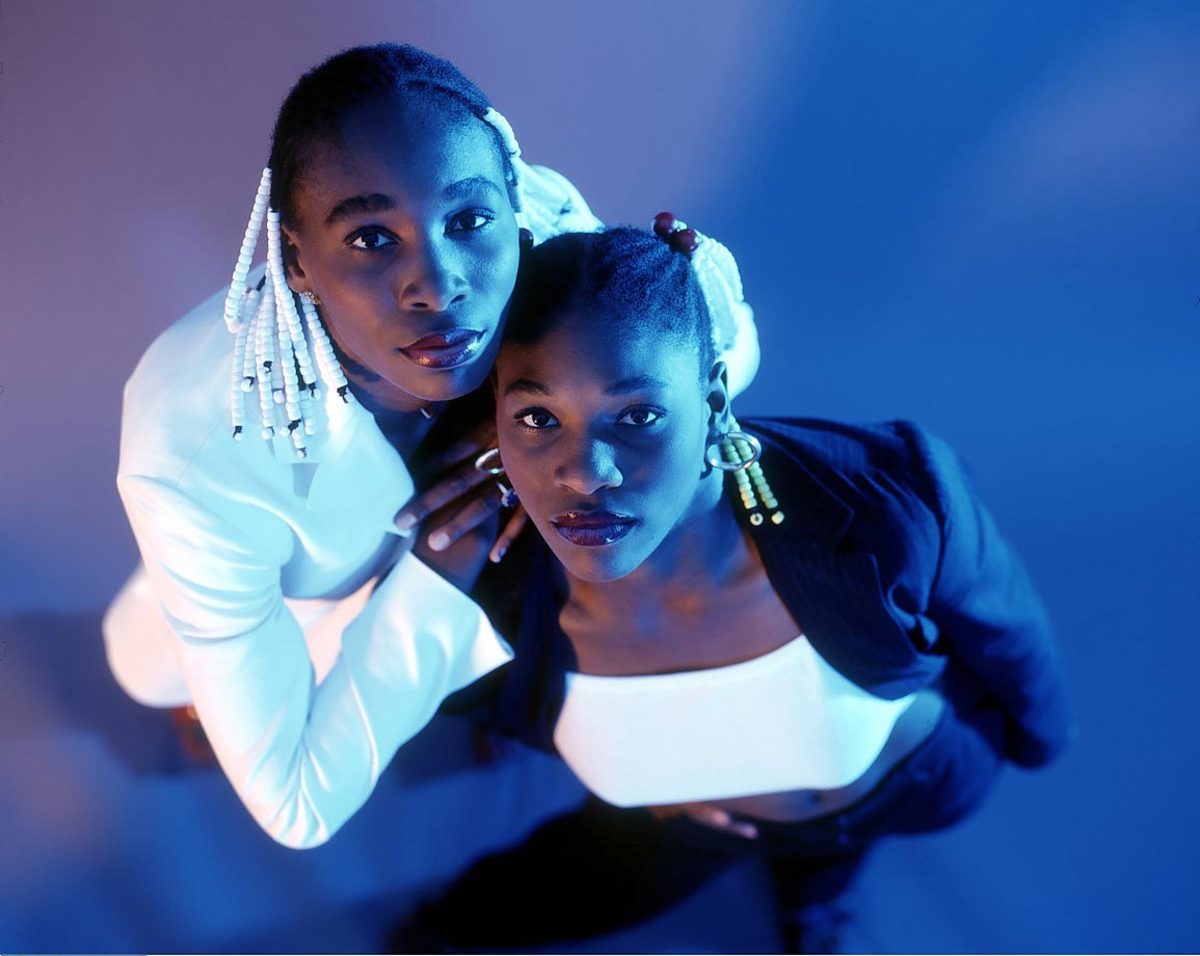
Serena was in Venus's shadow for several years, but has matured into the more accomplished player.
Serena Williams
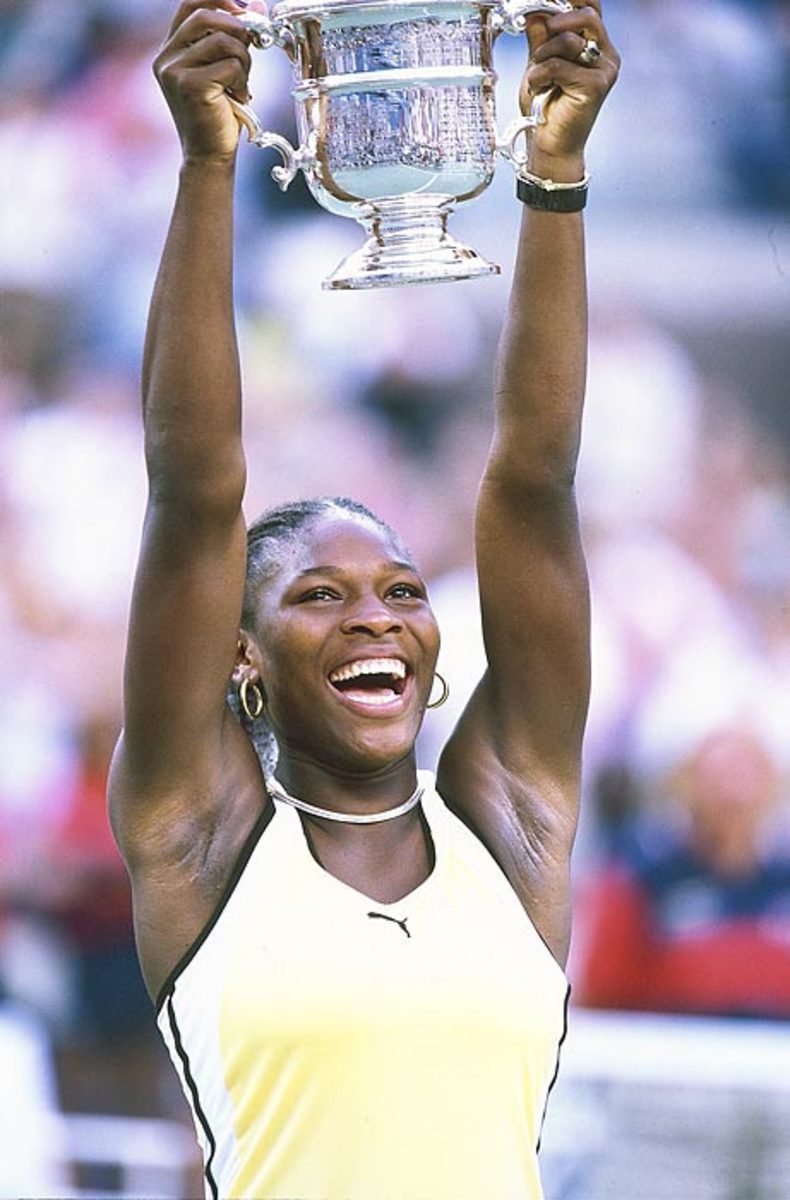
At 17, Serena became the first African-American woman since Althea Gibson to win a Grand Slam title.
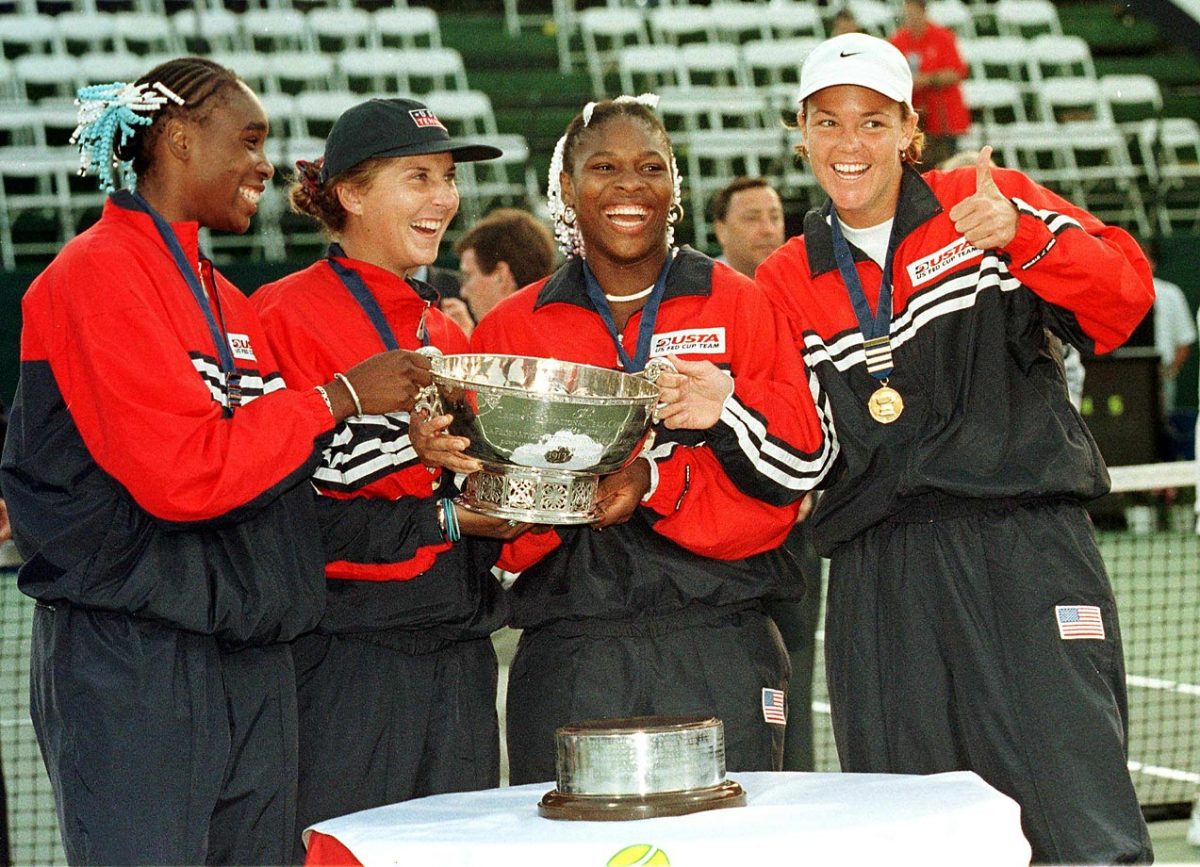
Venus and Serena, pictured here with Lindsay Davenport and Monica Seles, helped lead the U.S. in its 4-1 Federation Cup victory against Russia in 1999.
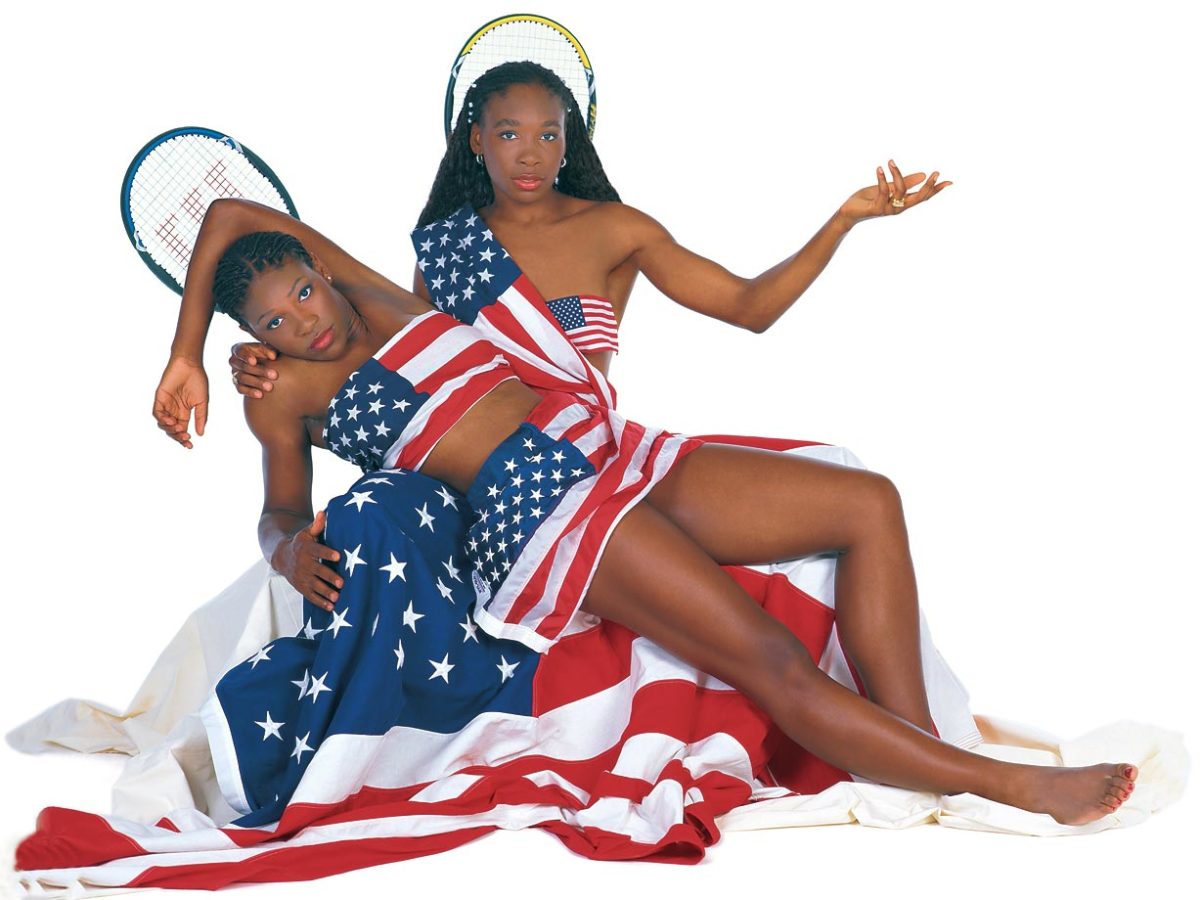
The sisters got in touch with their patriotic side during a 2000 photo shoot for SI. Serena has won four Olympic medals while representing the U.S., three in doubles and the other in singles.
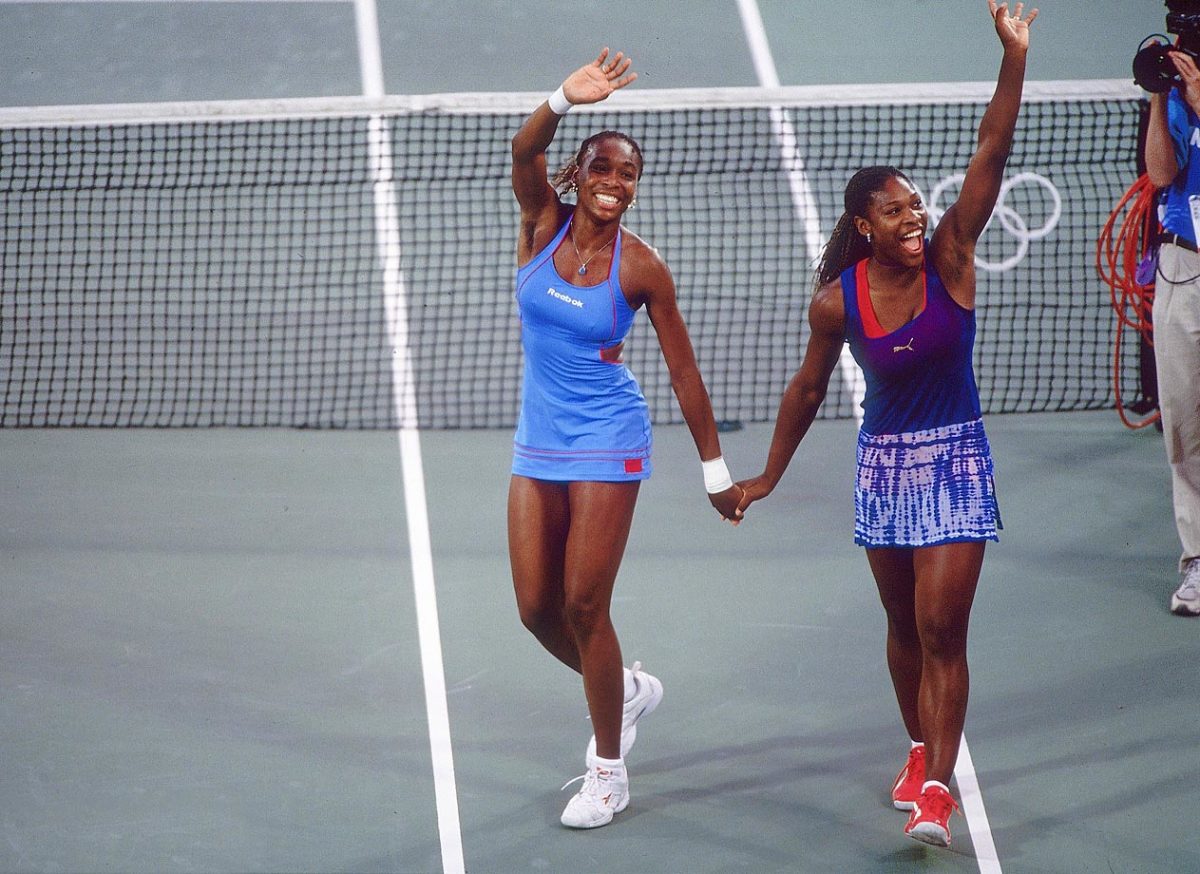
Despite their undeniable skills and stockpile of titles, the Williams sisters have been accused of slacking off when pitted against each other in competition. Venus and Serena have vehemently denied those claims. Serena leads the head-to-head series 14-11 through August 2014.
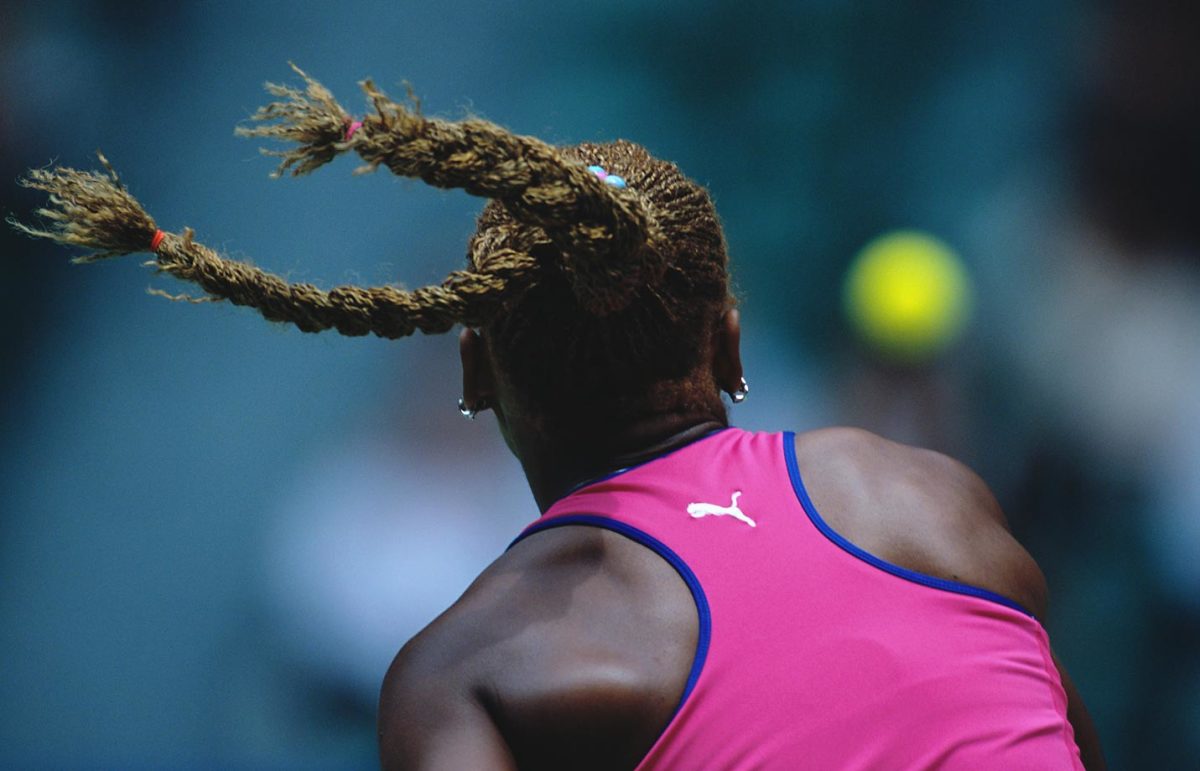
Serena lost in hair-raising fashion in the quarterfinals of the first three majors in 2001, but made the final of the U.S. Open, which she lost to Venus.
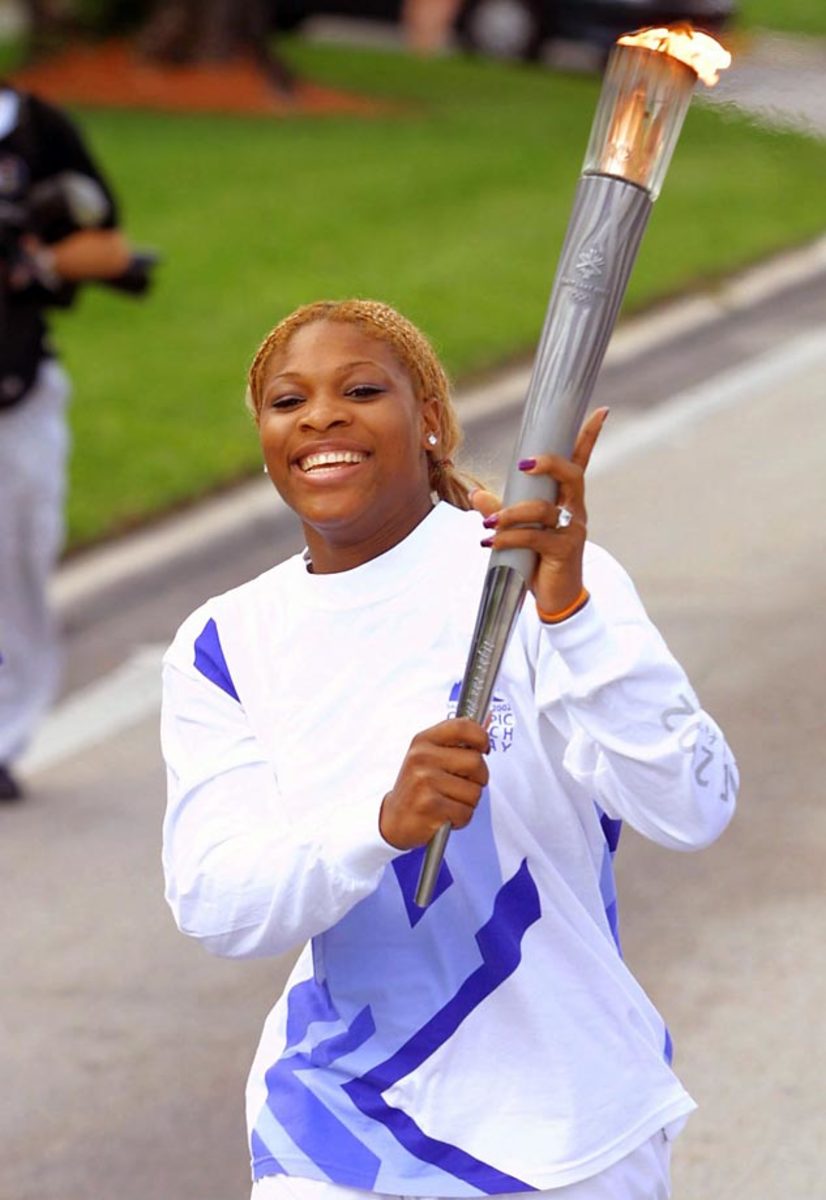
Serena capped off a busy 2001 by carrying the Olympic torch in the leadup to the 2002 Games in Salt Lake City.
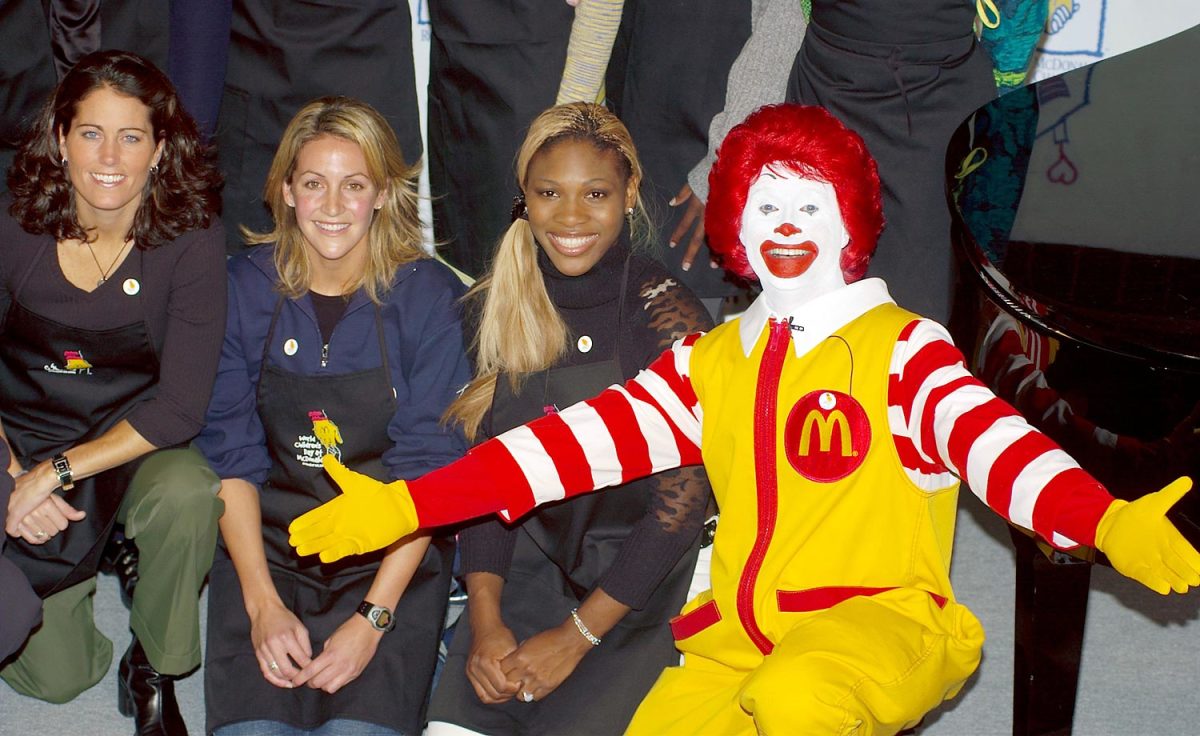
Julie Foudy, Summer Sanders and Serena appeared with Ronald McDonald at the World Children's Day Event in New York City in November 2002.
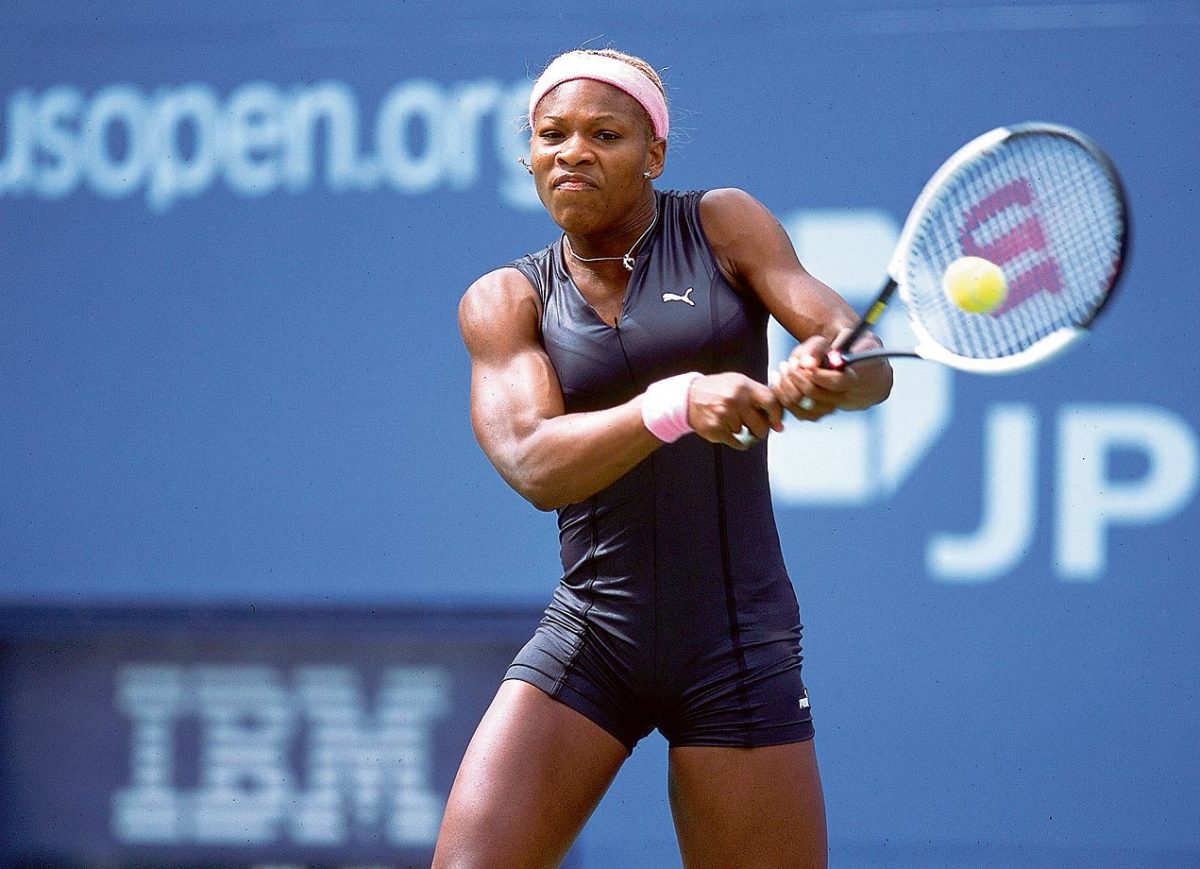
Serena created a stir when she competed in this cat suit at the 2002 U.S. Open.
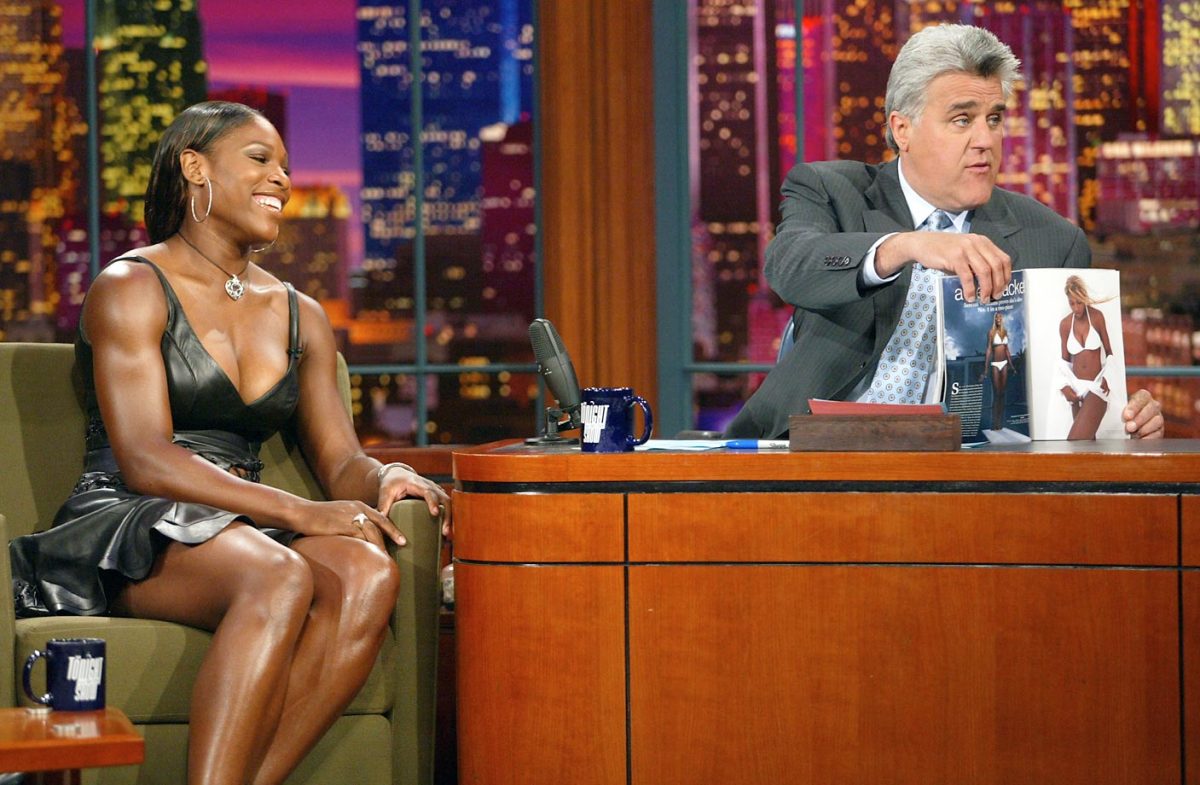
Serena's appearance on the Tonight Show with Jay Leno coincided with her inclusion in the SI Swimsuit issue.
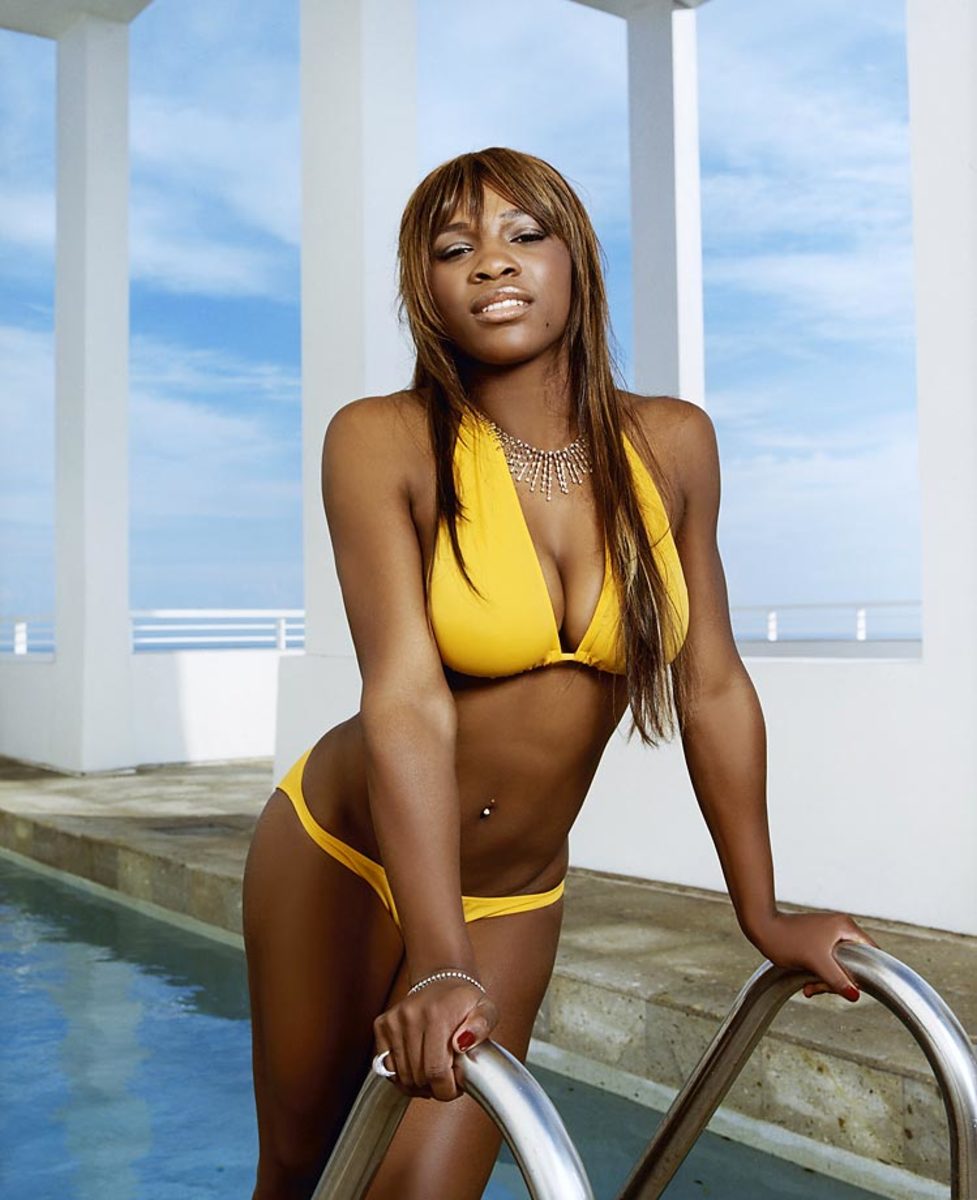
Serena's swimsuit poses didn't stop with SI. Here she poses during a December shoot.
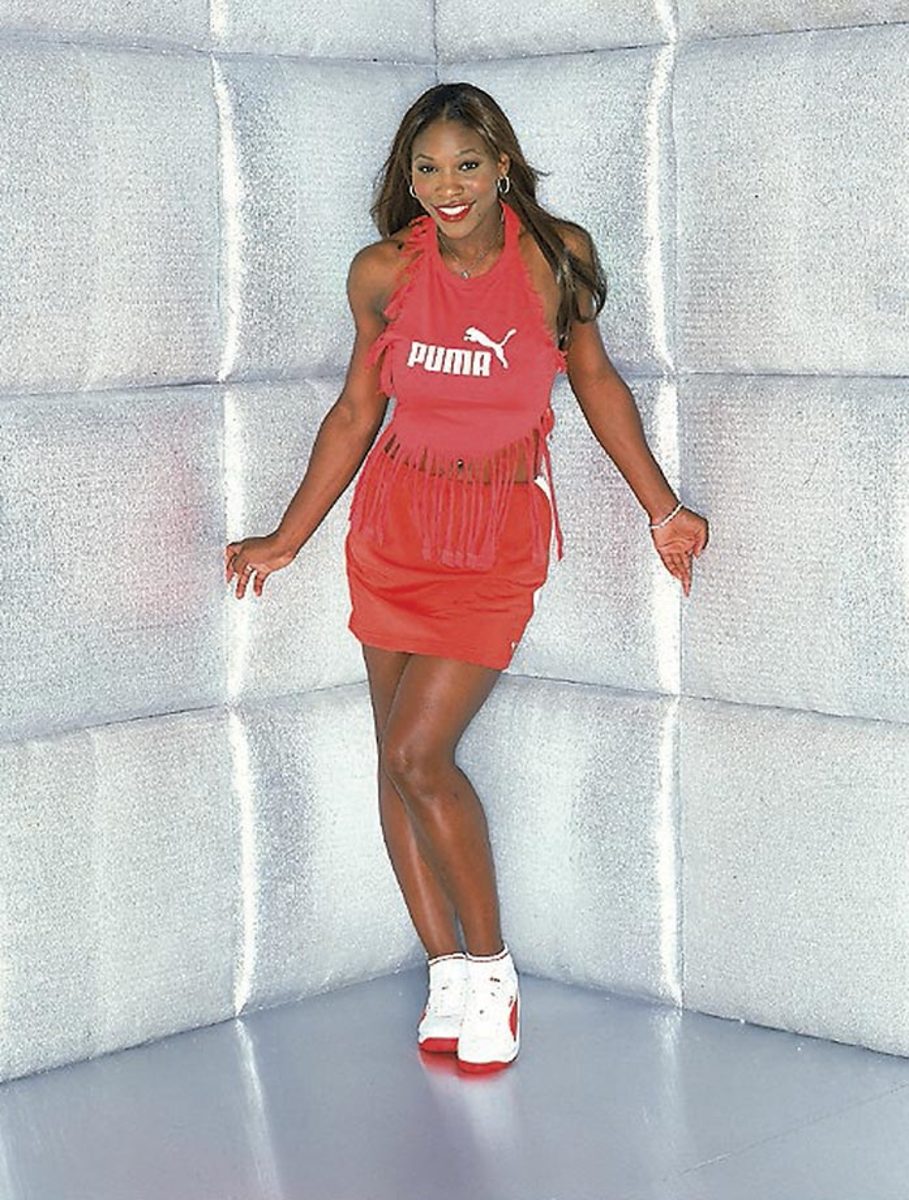
Serena had a clothing line with Puma in the early years, but signed with Nike in 2004.
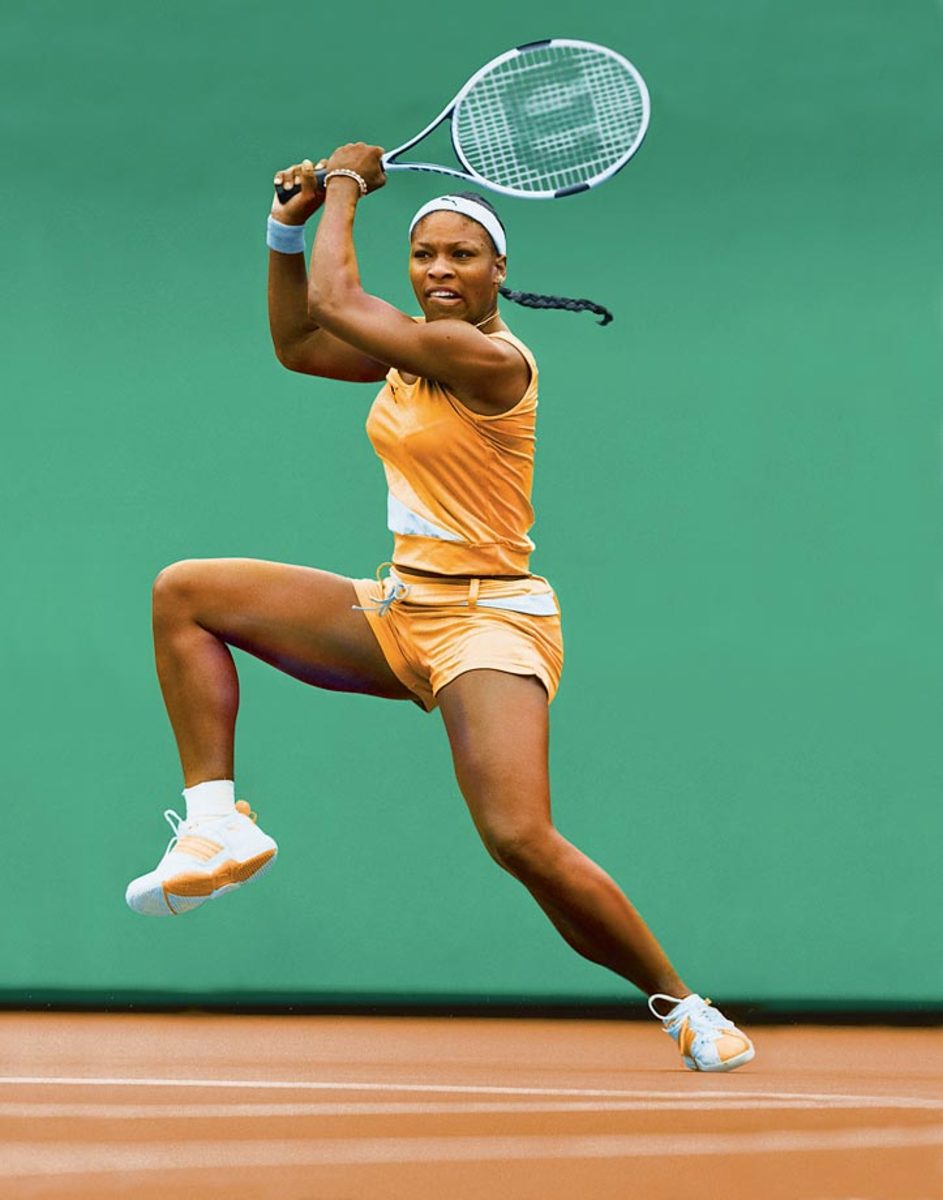
Serena in action at Fairmont Stadium in Arizona, where she had won the State Farm Classic the year before.
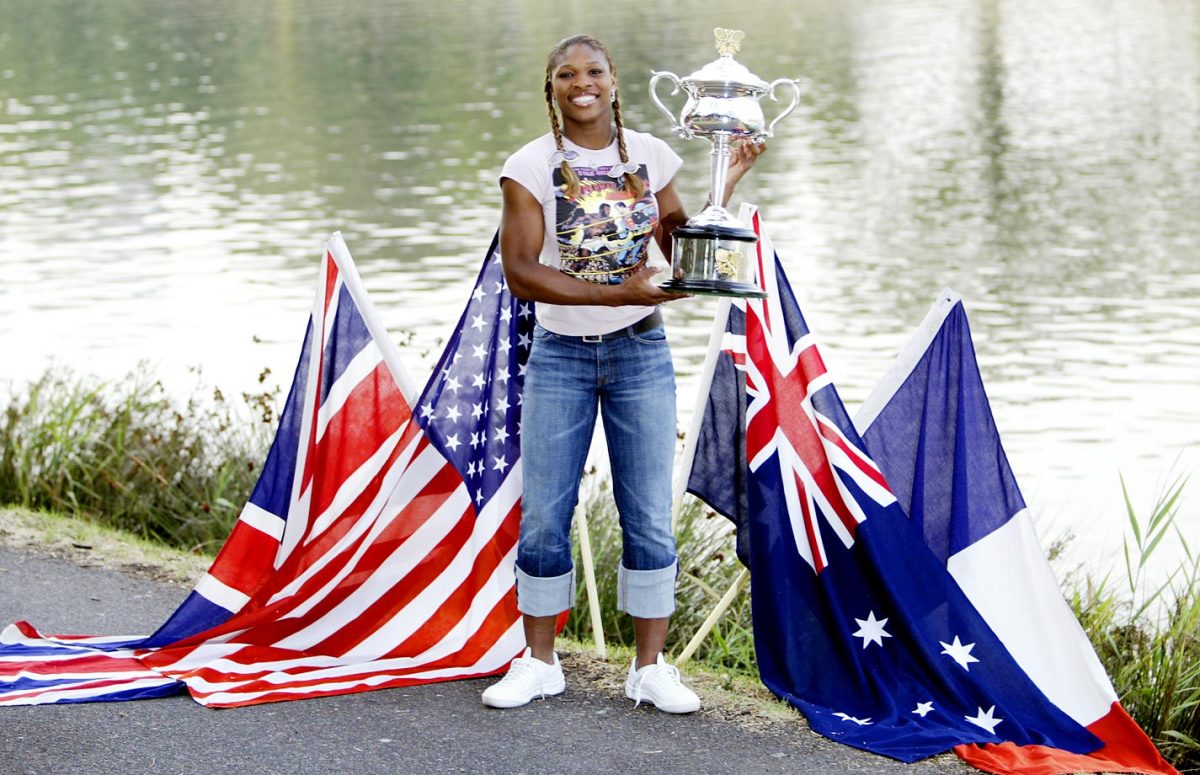
Serena's victory over Venus in the 2003 Australian Open made her the fifth woman to hold all four Grand Slam singles titles simultaneously. The media dubbed it the Serena Slam.
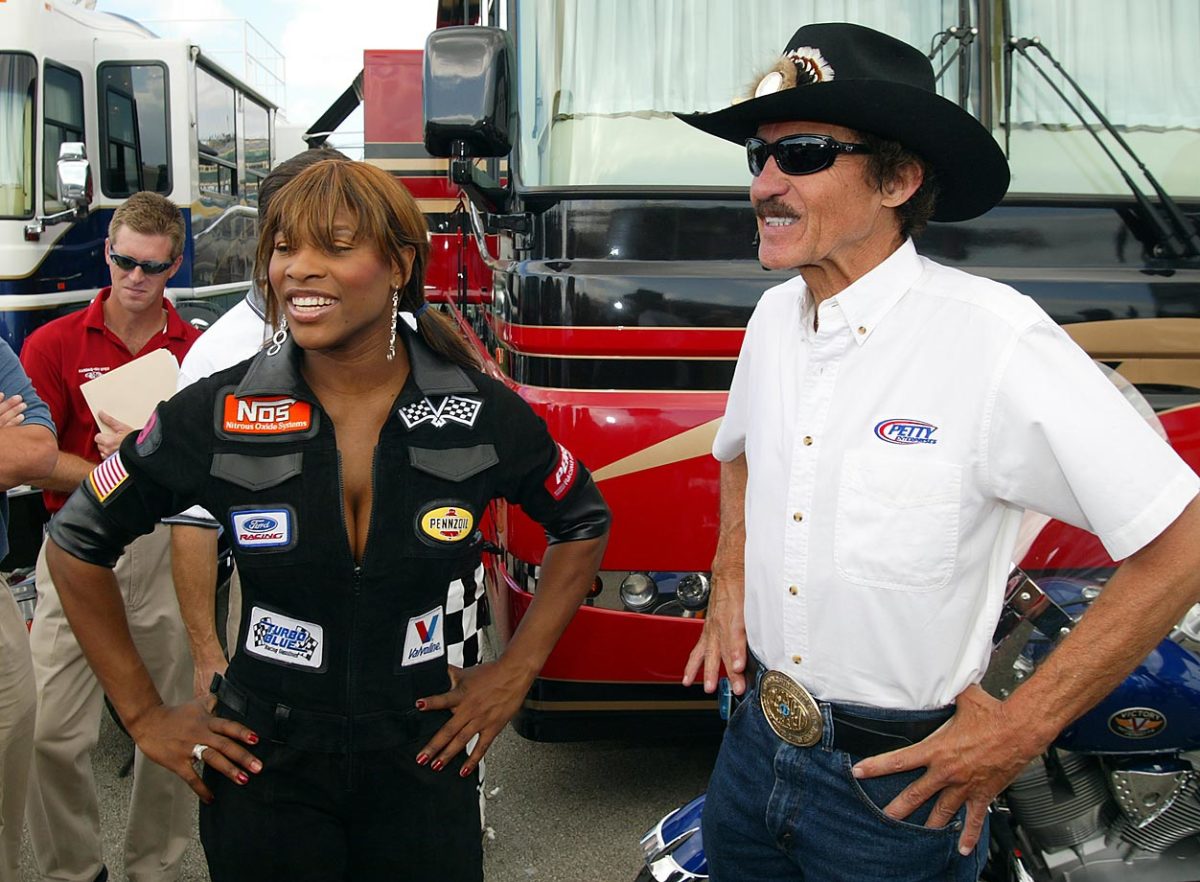
Seven-time NASCAR champion Richard Petty showed Serena around the garage area when she attended the Ford 400 in Homestead, Fla.
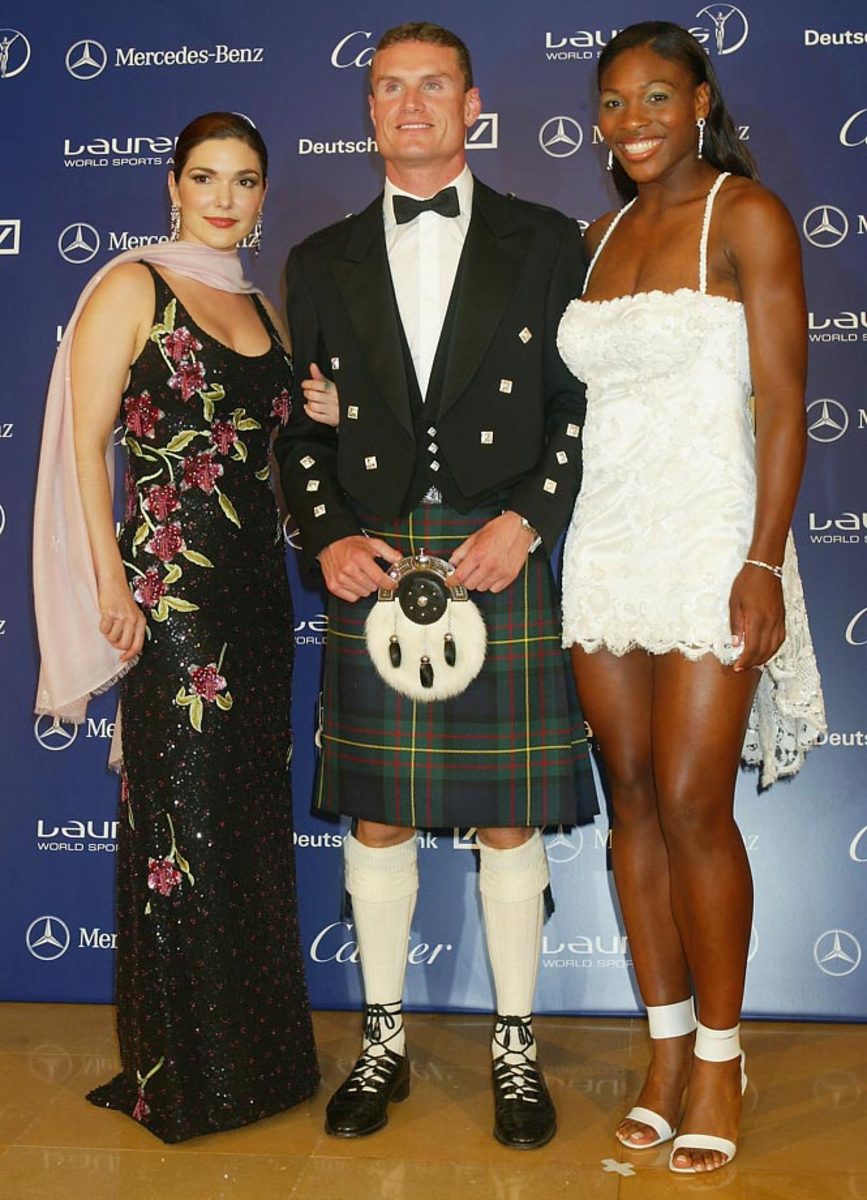
Pictured with Laura Harring and David Coulthard, Serena helped present the 2003 Comeback of the Year Award to soccer phenom Ronaldo at the Laureus World Sports awards.
Serena Williams

Serena turned heads again at the 2004 U.S. Open, when she took to the court in this outfit. Officials told her to ditch the knee-high boots.
Serena Williams

Serena's 2005 Australian outfit wasn't quite as flamboyant, but reinforced that she does have a fashion sense about her.
Serena Williams

Seen here playing with her two dogs, Bambi and Jackie, Serena struggled through 2005 as a variety of injuries caused her to have her first non-Top 10 finish since 1998.
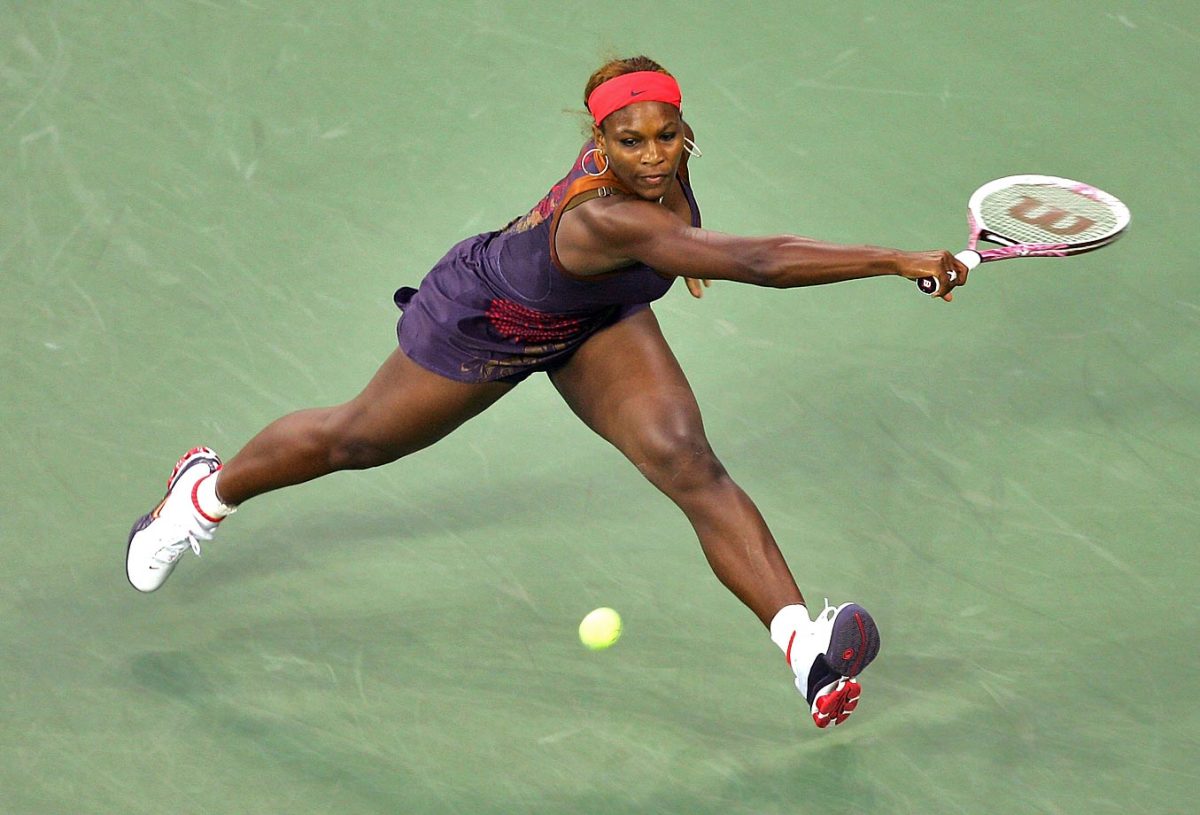
Recovering from a knee injury, Serena didn't win a single tournament in 2006 and finished the year ranked 95th in the world.
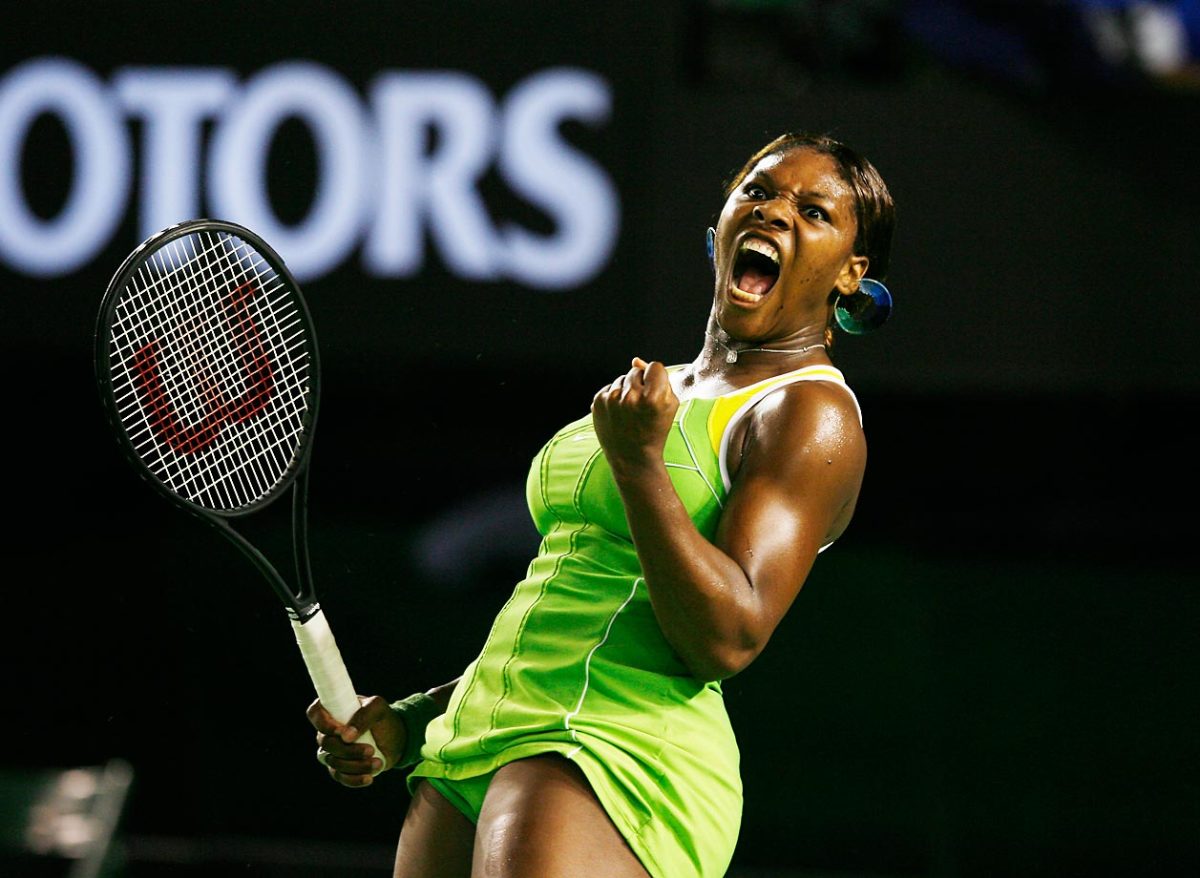
Serena celebrates a point during the 2007 Australian Open finals against Maria Sharapova. Williams, who was unseeded because of her World No. 81 ranking, continued on to beat Sharapova and win the tournament.
Serena Williams

Serena made it to the quarterfinals of Wimbledon in 2007, where she lost to world No. 1 Justine Henin.
Serena Williams

Serena unveiled her trench coat look at Wimbledon in 2008.
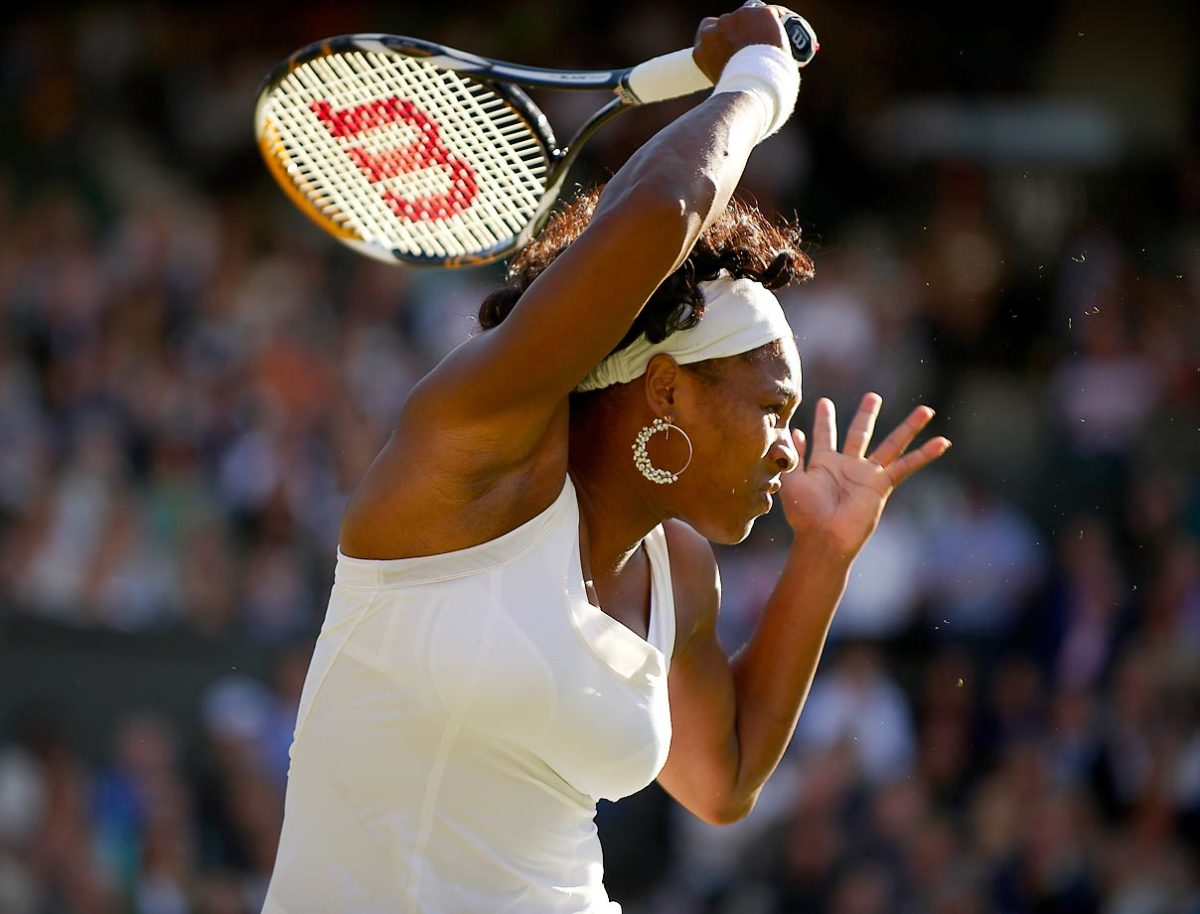
Serena lost 7-5, 6-4 to Venus in the finals at Wimbledon in 2008.
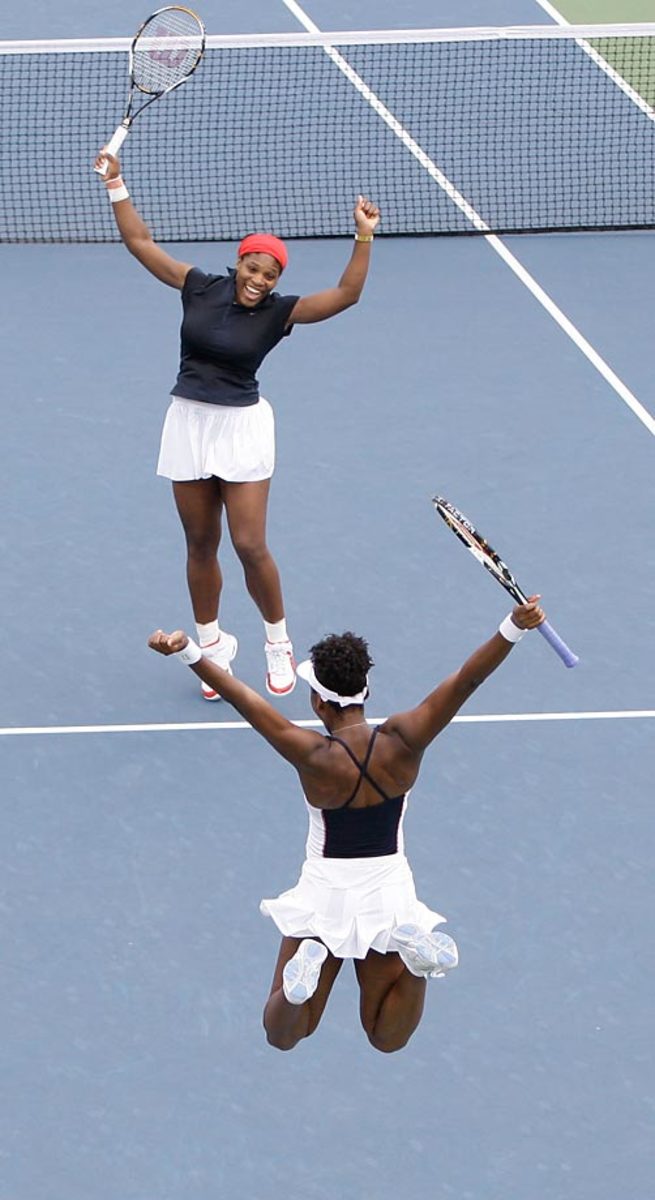
Serena and Venus rejoice after they beat Anabel Medina Garrigues and Virginia Ruano Pascual of Spain during the gold medal match at the Beijing Olympics.
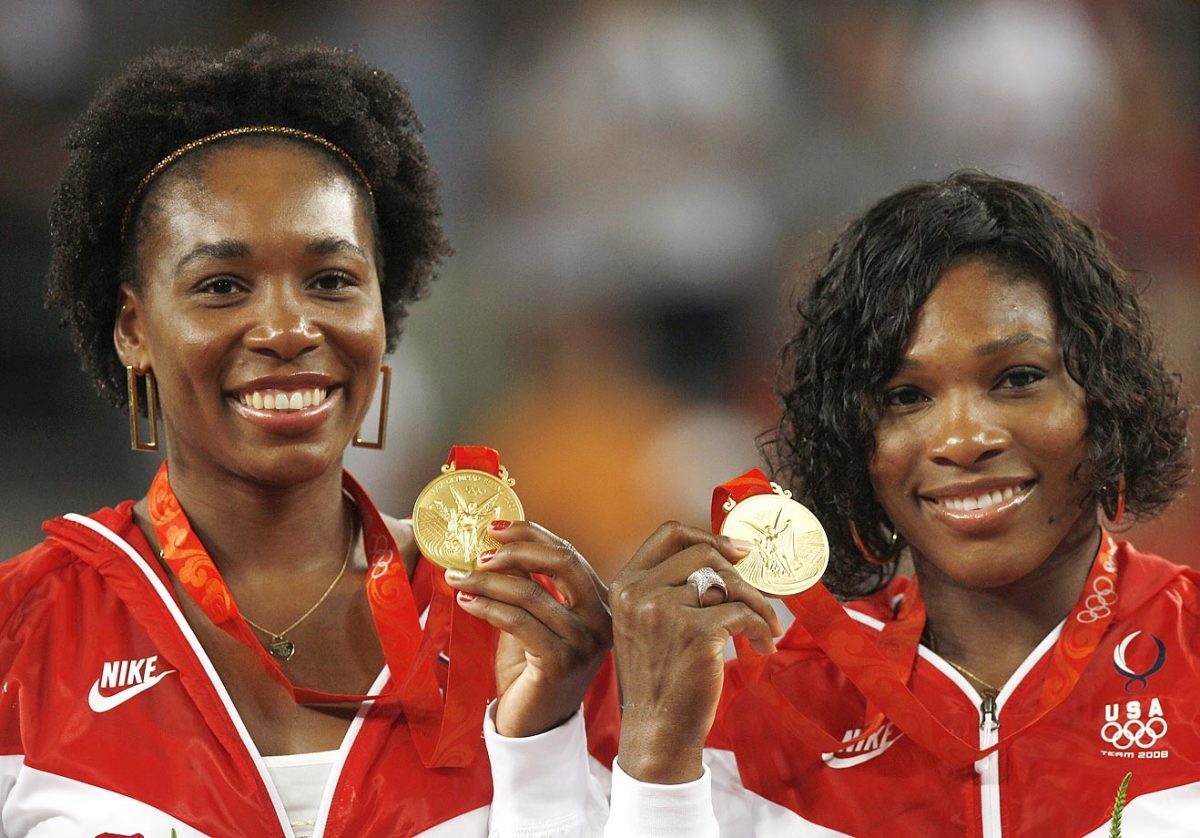
The victory was their second consecutive gold medal in doubles.
Serena Williams

Serena reacts after defeating Jelena Jankovic to win the 2008 U.S. Open title.
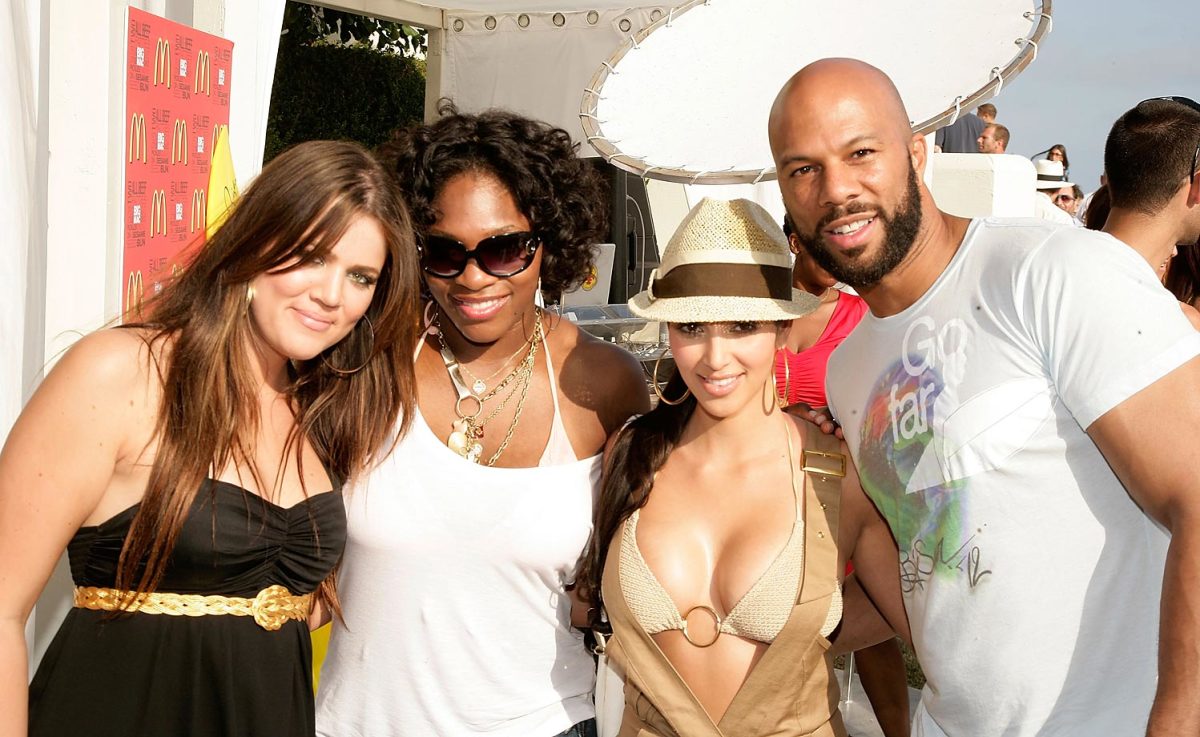
Serena poses with Kim and Khloe Kardashian and rapper Common, whom she once dated.
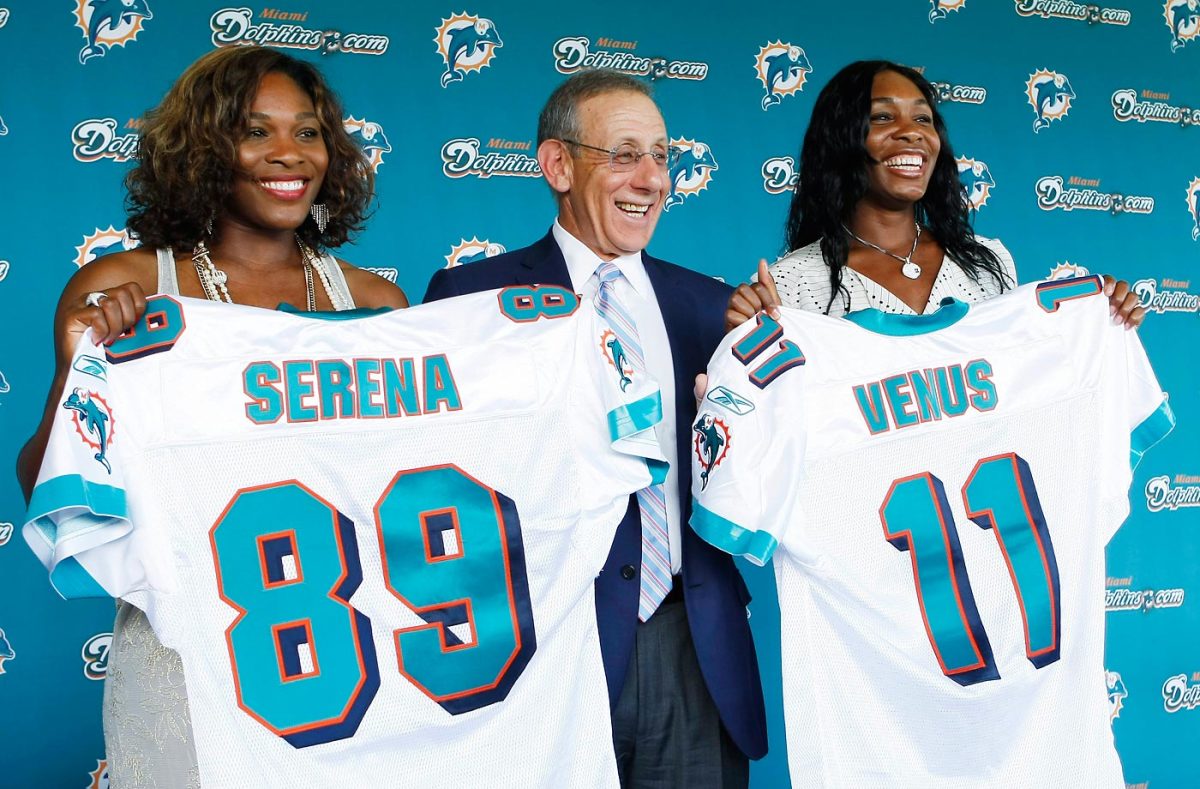
Miami Dolphins owner Stephen Ross with Serena and Venus after it was announced they had become minority owners of the NFL football team.
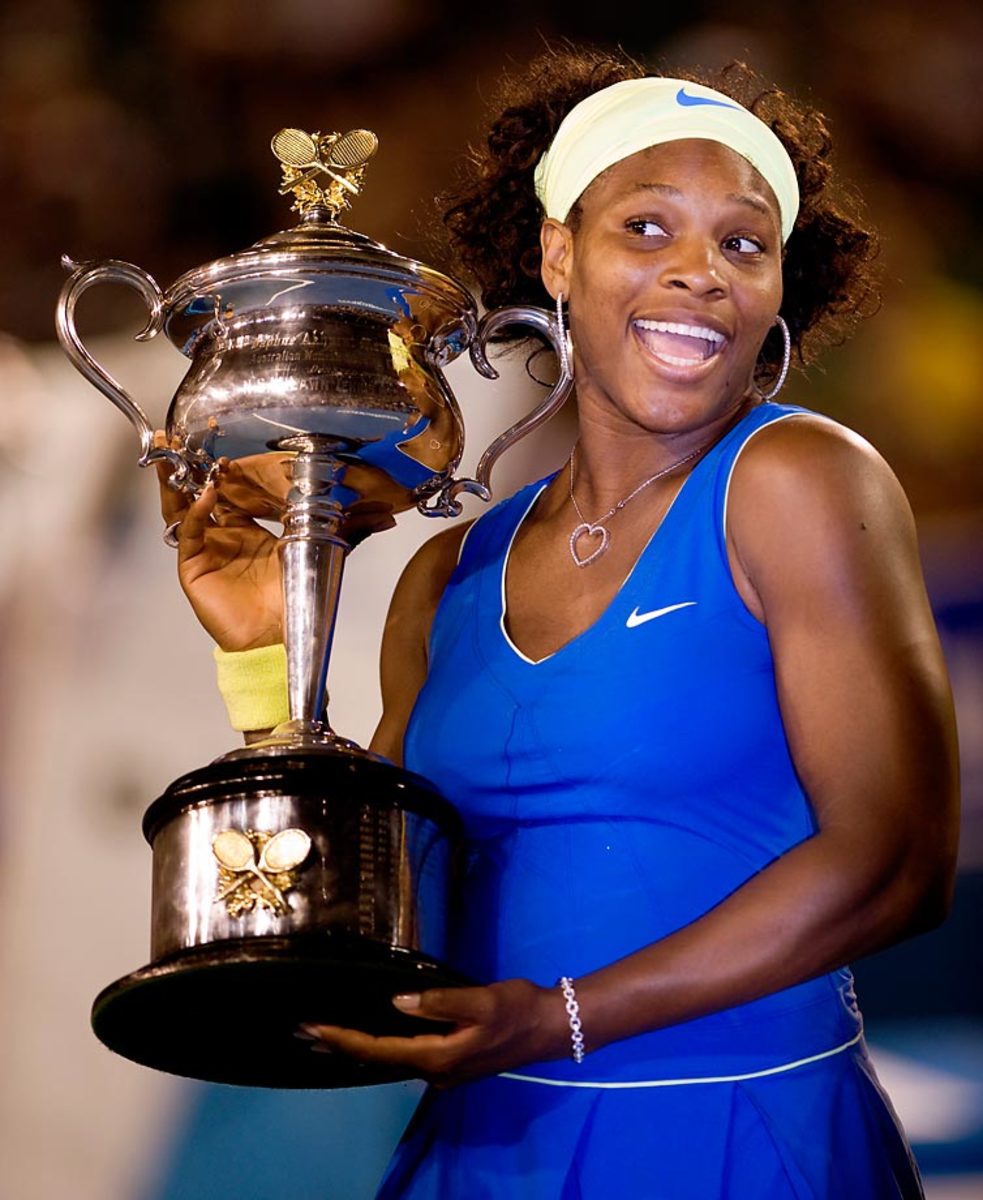
Serena kids around after winning a title in Melbourne.
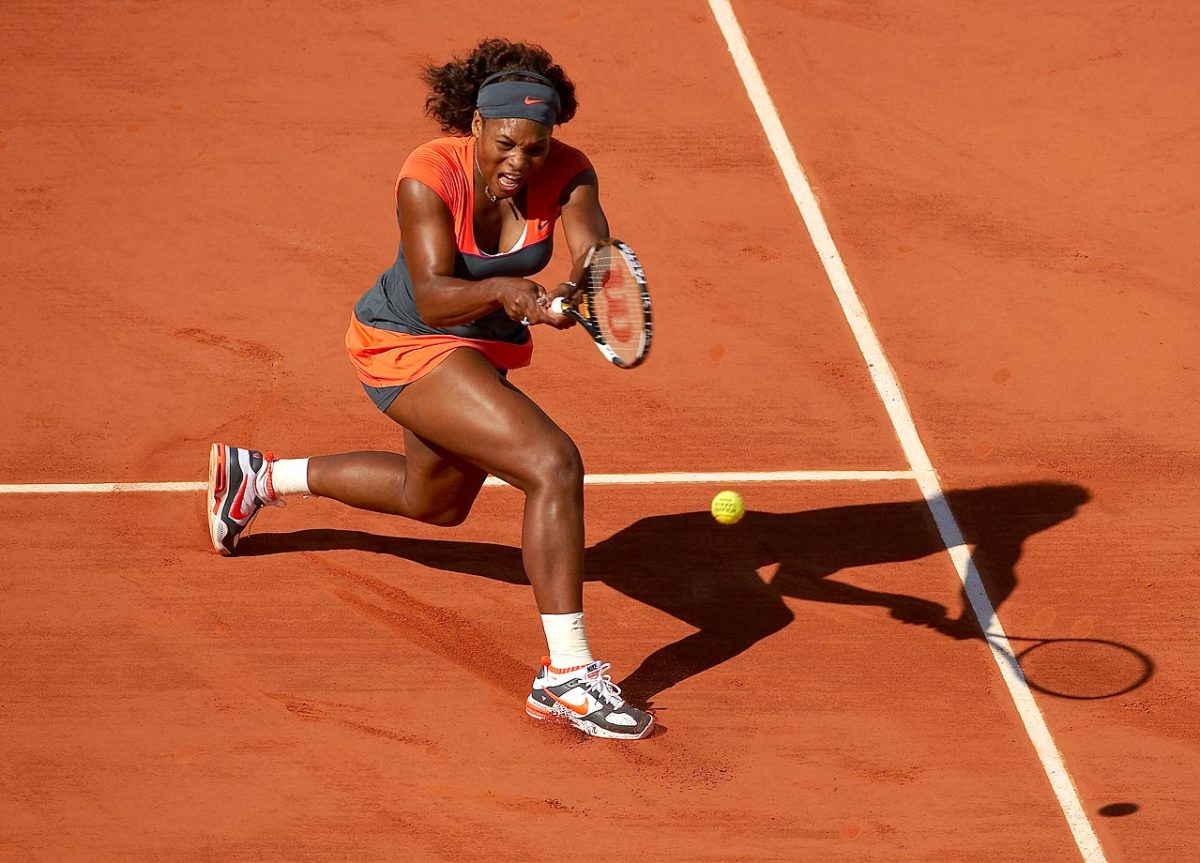
Serena had an 18-match Grand Slam tournament winning streak snapped at the 2009 French Open.
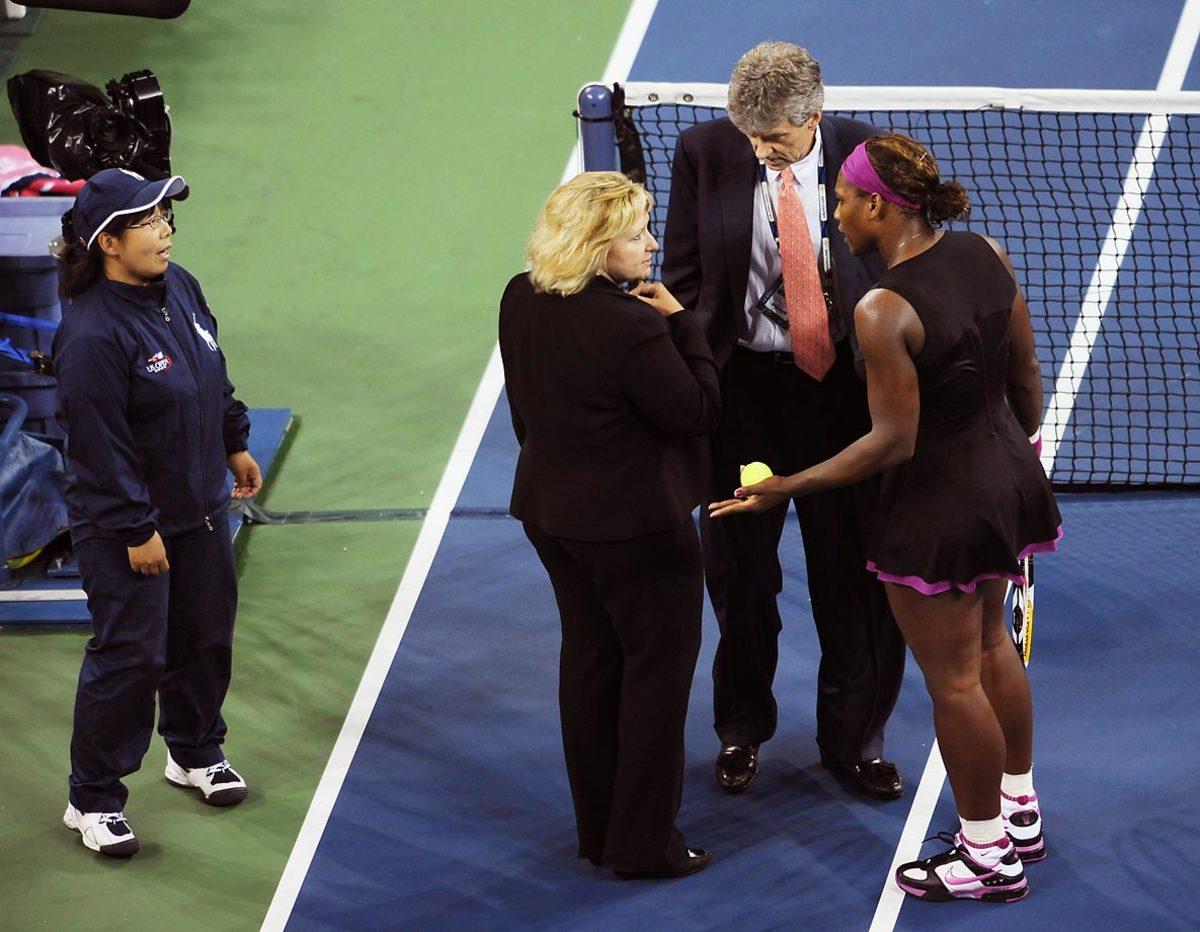
Serena famously lost her temper at the 2009 U.S. Open, berating the line judge for calling a foot fault. She was assessed a point penalty, which happened to be on match point in the semifinal, giving the victory to Clijsters, 6-4, 7-5.
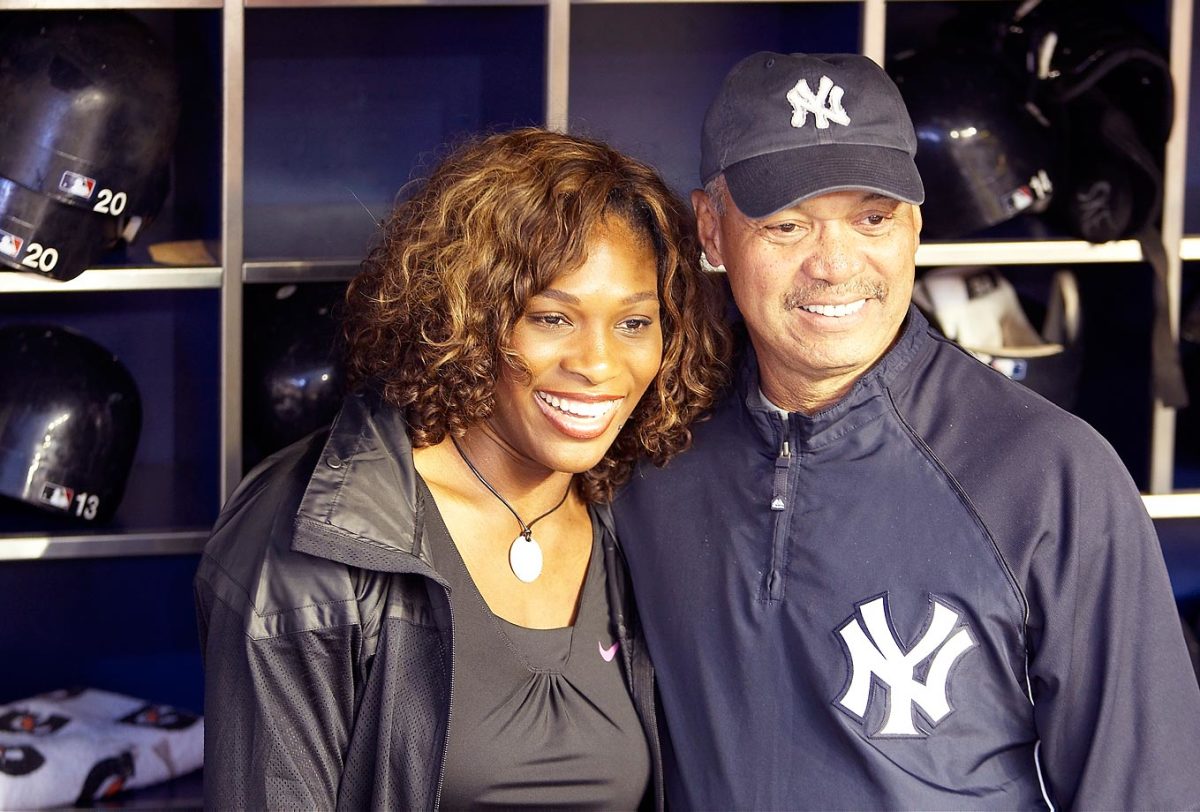
Serena is seen here enjoying a White Sox-Yankees game with former Bronx bomber Reggie Jackson.
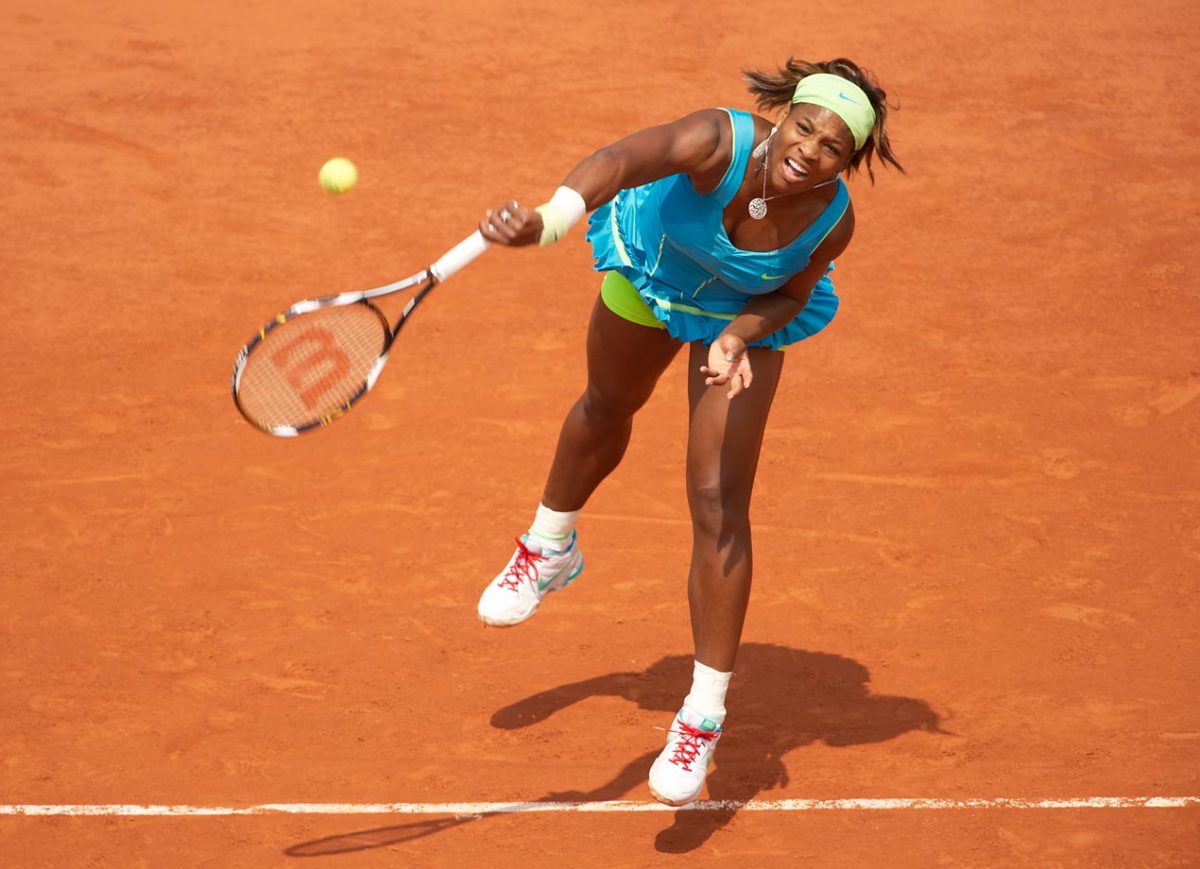
Other than her 2002 victory in the French Open, Serena had never made another final at Roland Garros. That is, until she won the 2013 edition.
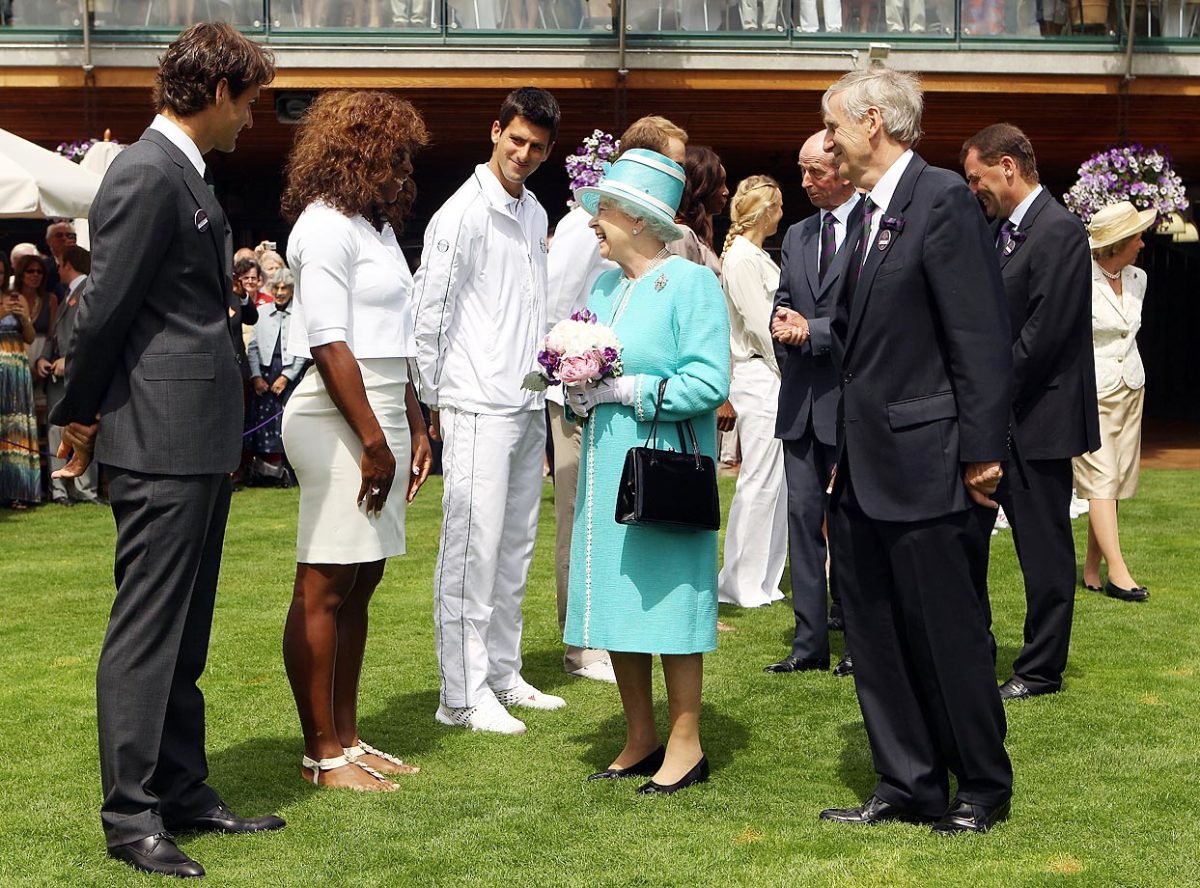
Queen Elizabeth II meets Roger Federer, Serena, Novak Djokovic and others on Day 4 at the All England Lawn Tennis and Croquet Club. It was the first visit by Queen Elizabeth II to the Championships in 33 years.
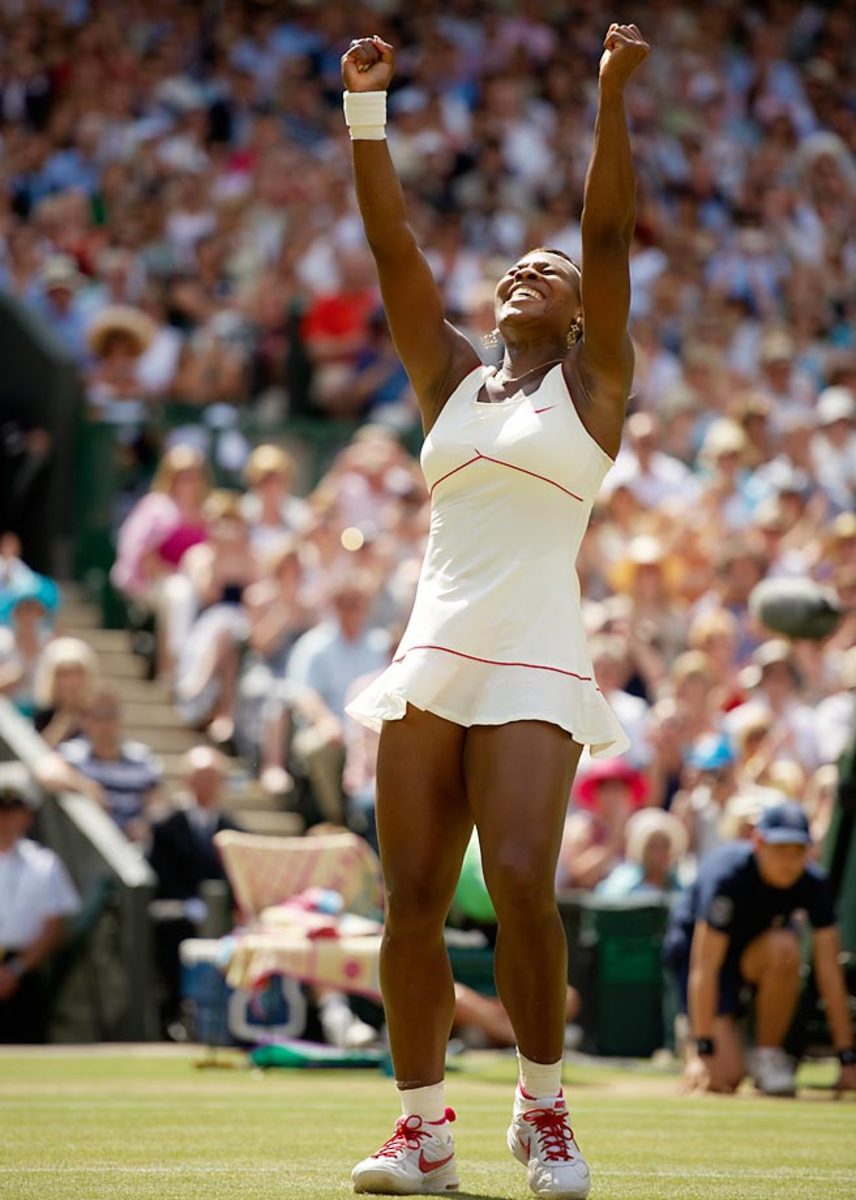
Serena didn't lose a set in winning Wimbledon in 2010.
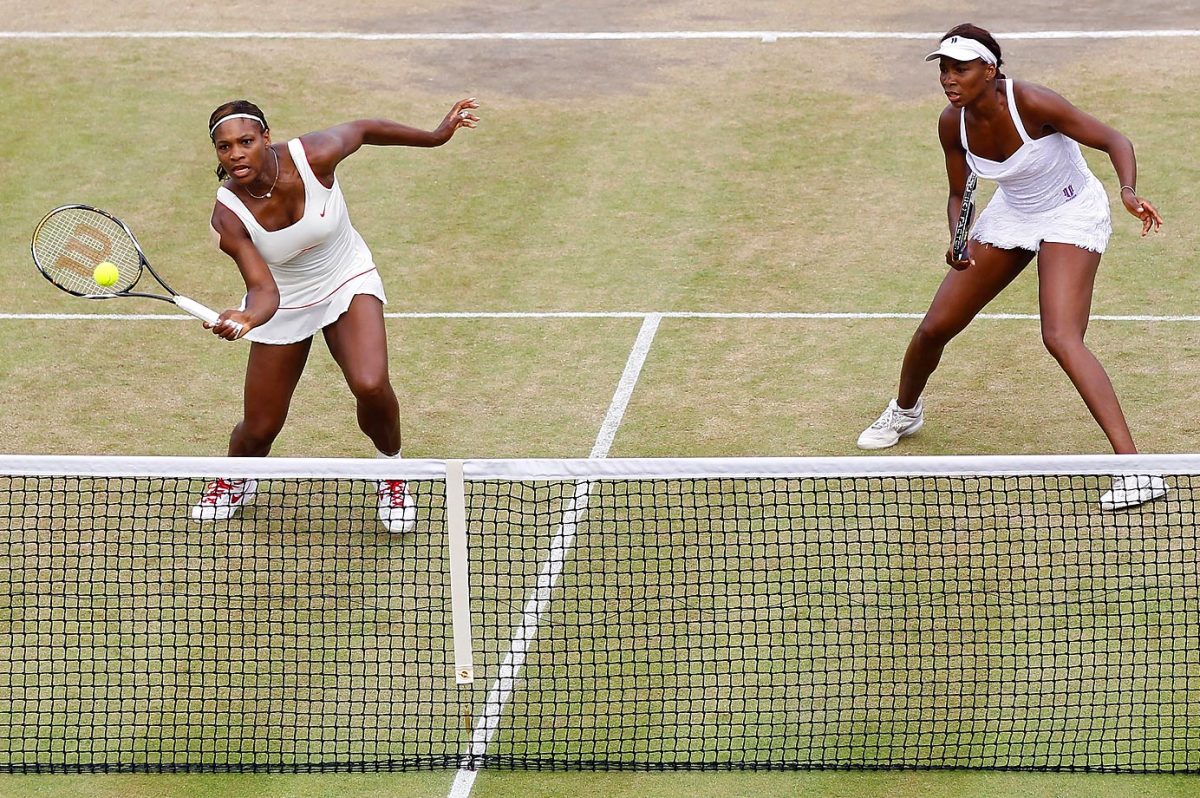
Serena and Venus, the two-time defending doubles champions at Wimbledon, lost in the quarterfinals in 2010. Serena cut her foot on a piece of glass a few days afterwards and missed the rest of the season.
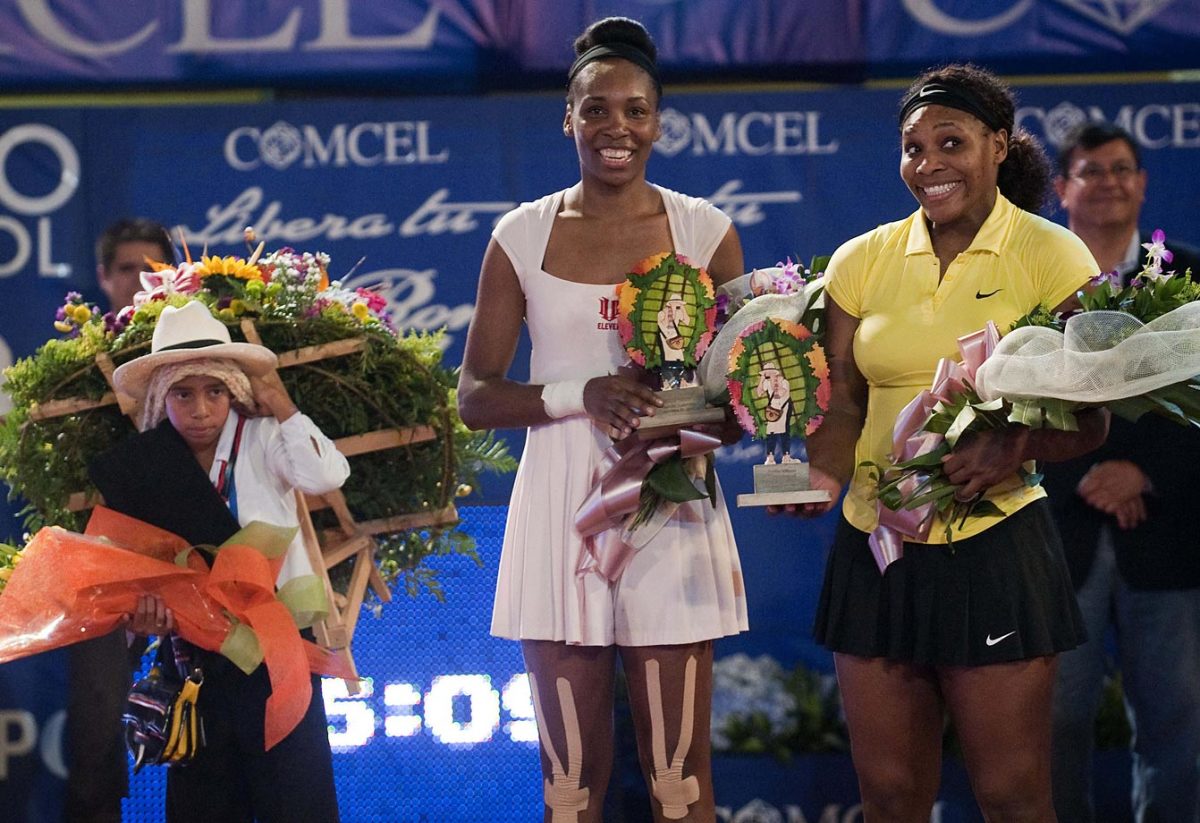
Serena and Venus at the end of their exhibition match at La Macarena bullring in Medellin.
Serena Williams

Serena along with Kim Kardashian and Sean "Diddy" Combs at a 2012 Pre-Grammy gala.
Serena Williams

Serena on the red carpet at the Vanity Fair Oscar party in West Hollywood. That same week she underwent emergency treatment for a blood clot in her lungs.
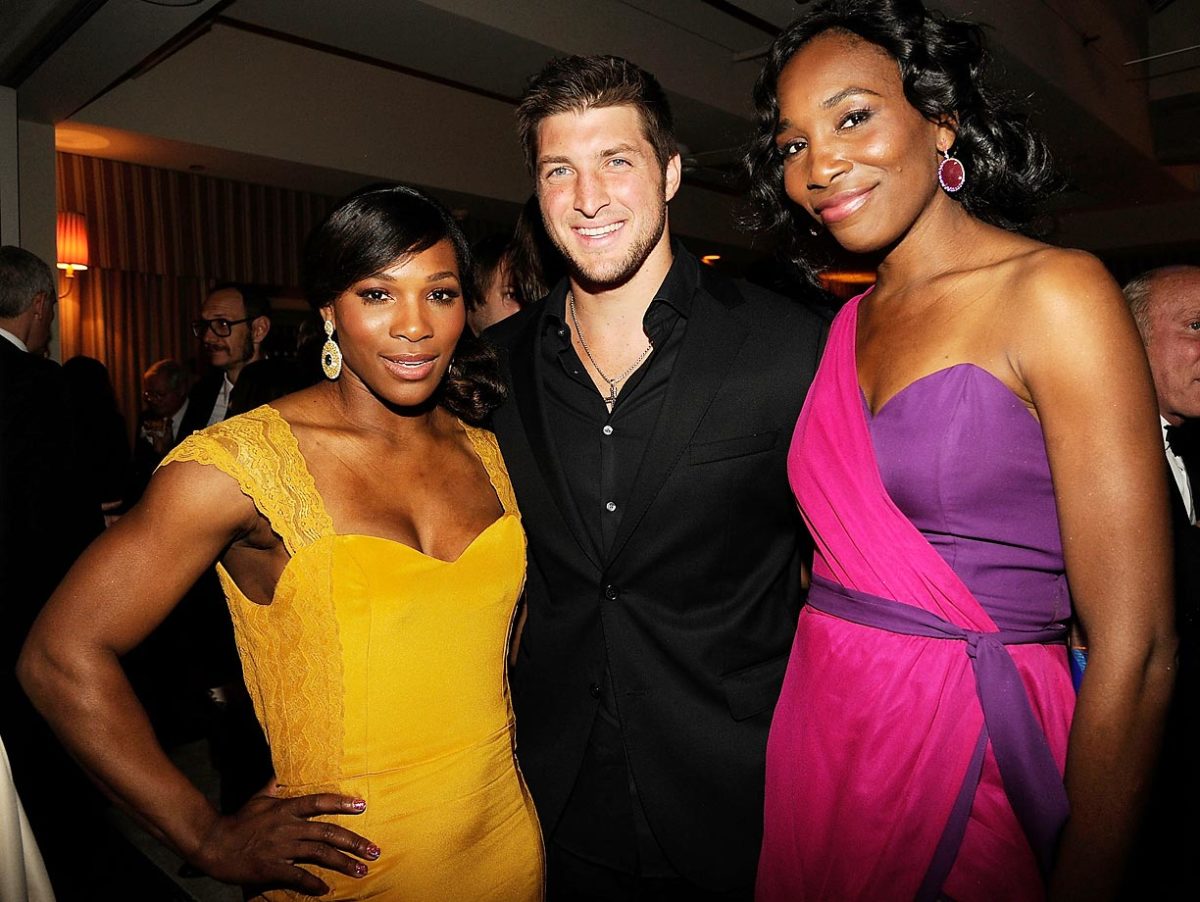
Serena, Tim Tebow and Venus at the 2012 Vanity Fair Oscar Party.
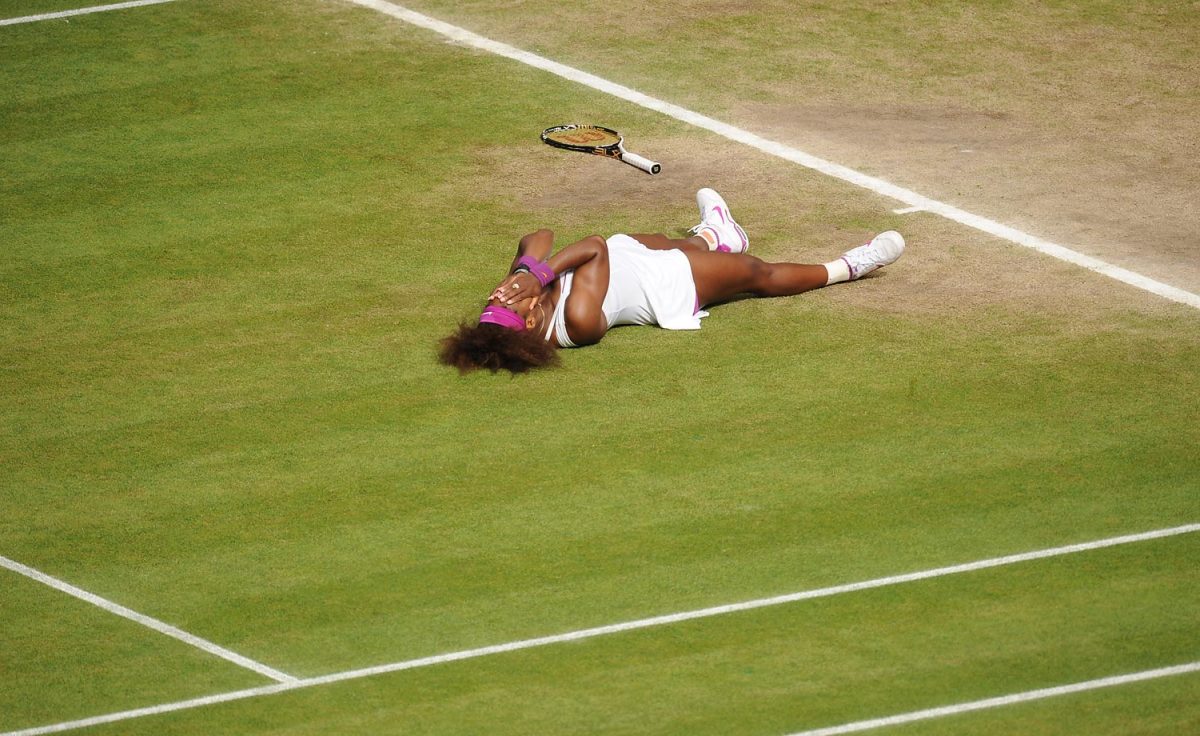
Serena was overcome by emotion after winning her fifth Wimbledon title. The victory came a little more than a year after she had been hospitalized with a pulmonary embolism. It was the first Wimbledon title by an over-30 woman since Martina Navratilova in 1990.
Serena Williams

Wimbledon singles champions Serena Williams and Roger Federer at the Wimbledon Championships 2012 Winners Ball. It marked her third Wimbledon title in four years.
Serena Williams

Venus and Richard Williams congratulate Serena after she won her first major title in two years.
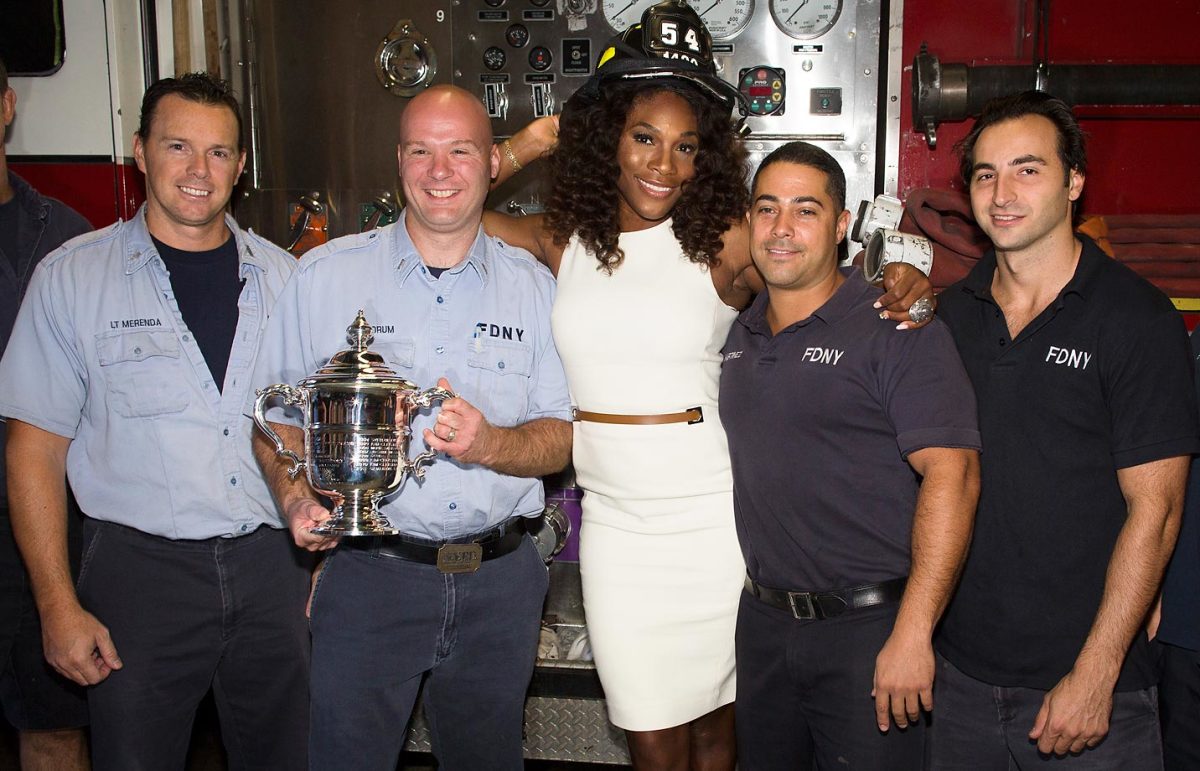
Serena poses with members of Engine 54 Ladder 4 Battalion 9 in New York the day after winning the U.S. Open.
Serena Williams

Serena won seven tournaments in 2012, including the WTA Championships in Istanbul.
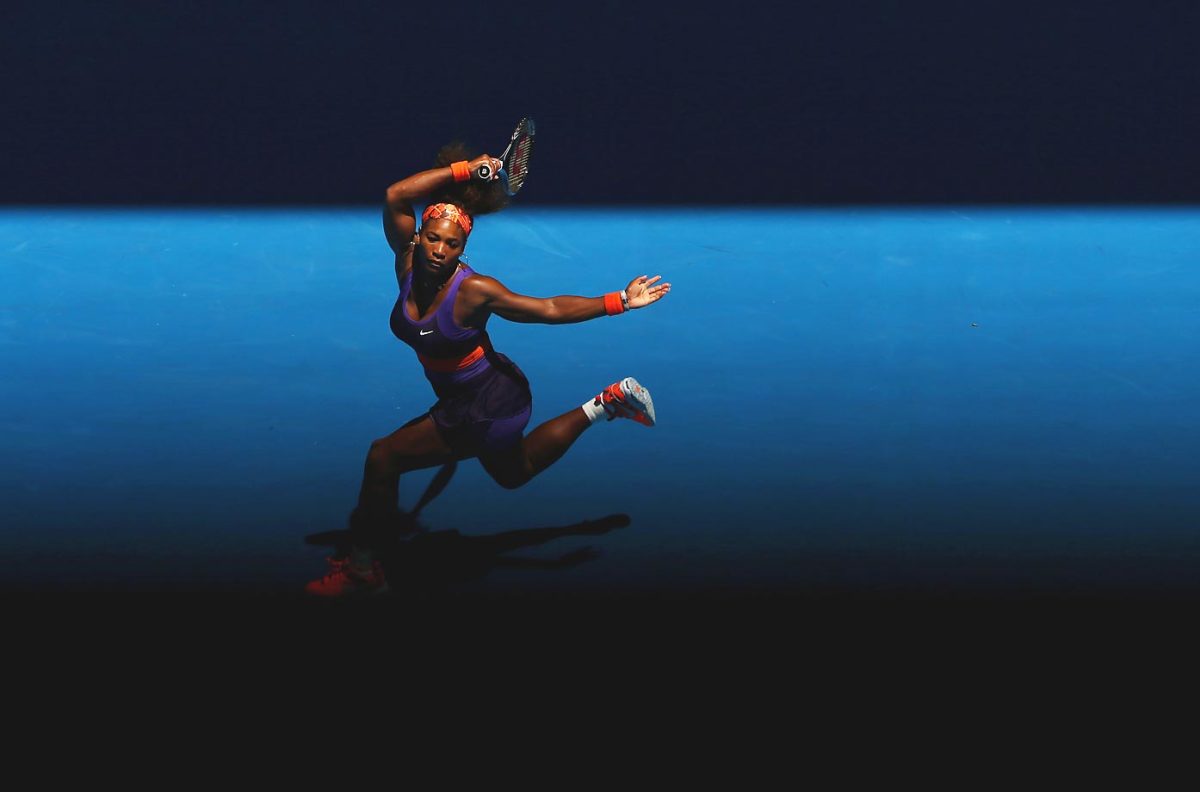
Serena plays a forehand during the 2013 Australian Open. She lost in the quarterfinals to Sloane Stephens, who later in the year said several critical remarks about Williams.
Serena Williams

Two points from defeat in the Open final, Serena regained her composure to come back and win the last four games, beating No. 1-ranked Victoria Azarenka 6-2, 2-6, 7-5 for her fourth U.S. Open title and 15th Grand Slam title overall.
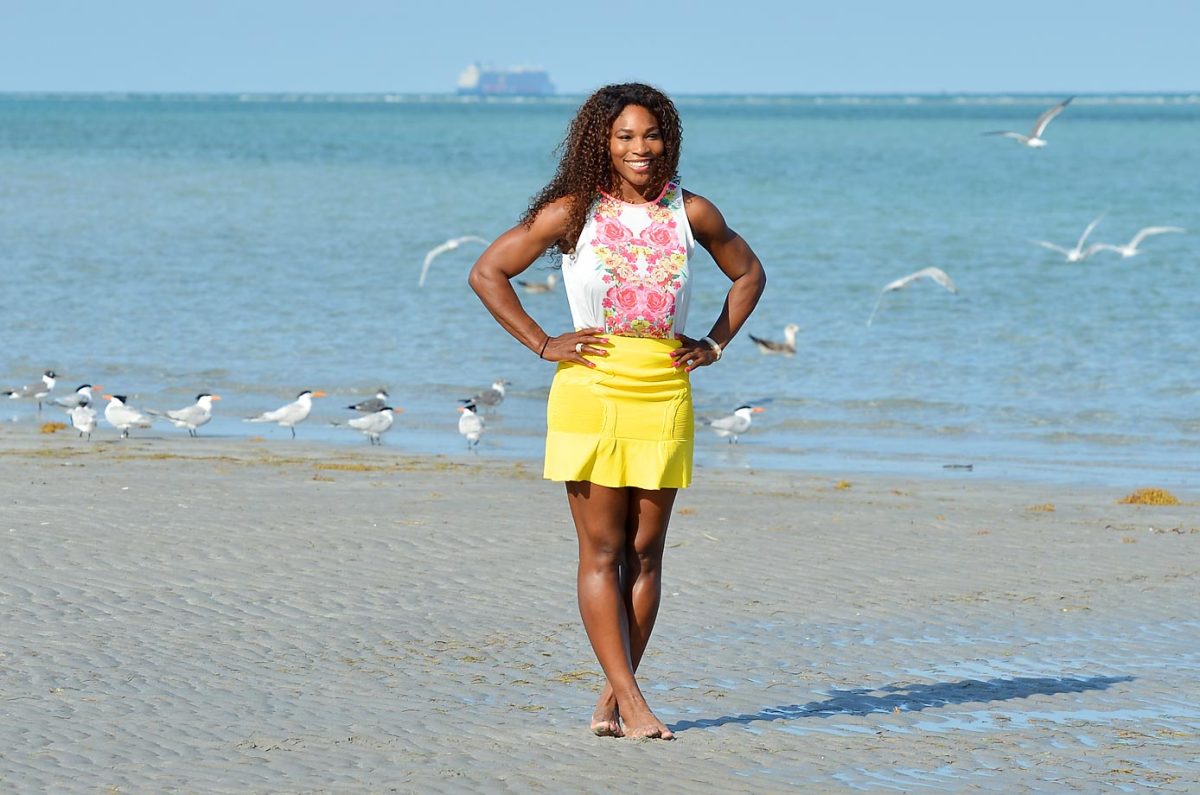
Serena poses after winning the Sony Tennis Open 2013 in Key Biscayne, Fla.
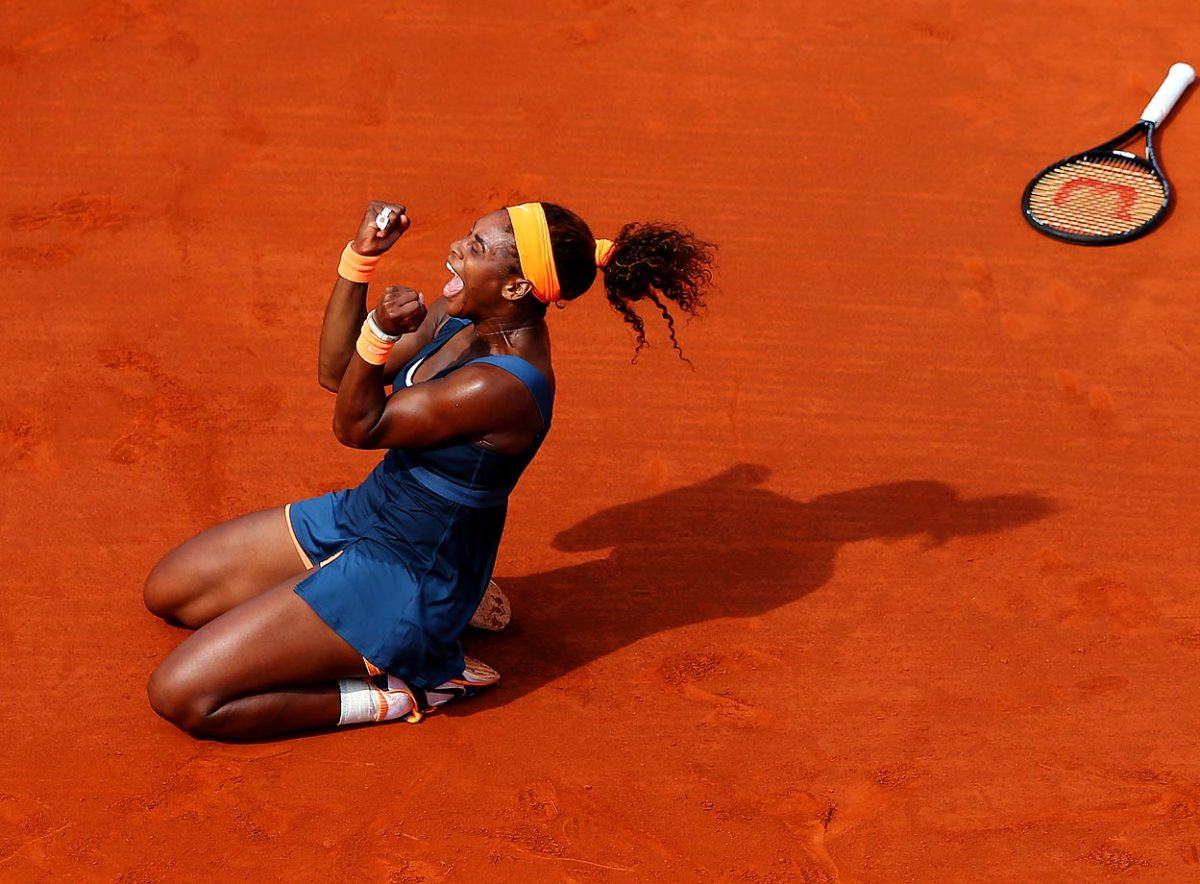
Serena finally cast off her Parisian demons—she hadn't been past the quarterfinals since 2004—to win her second French Open title 11 years after her first title in 2002.
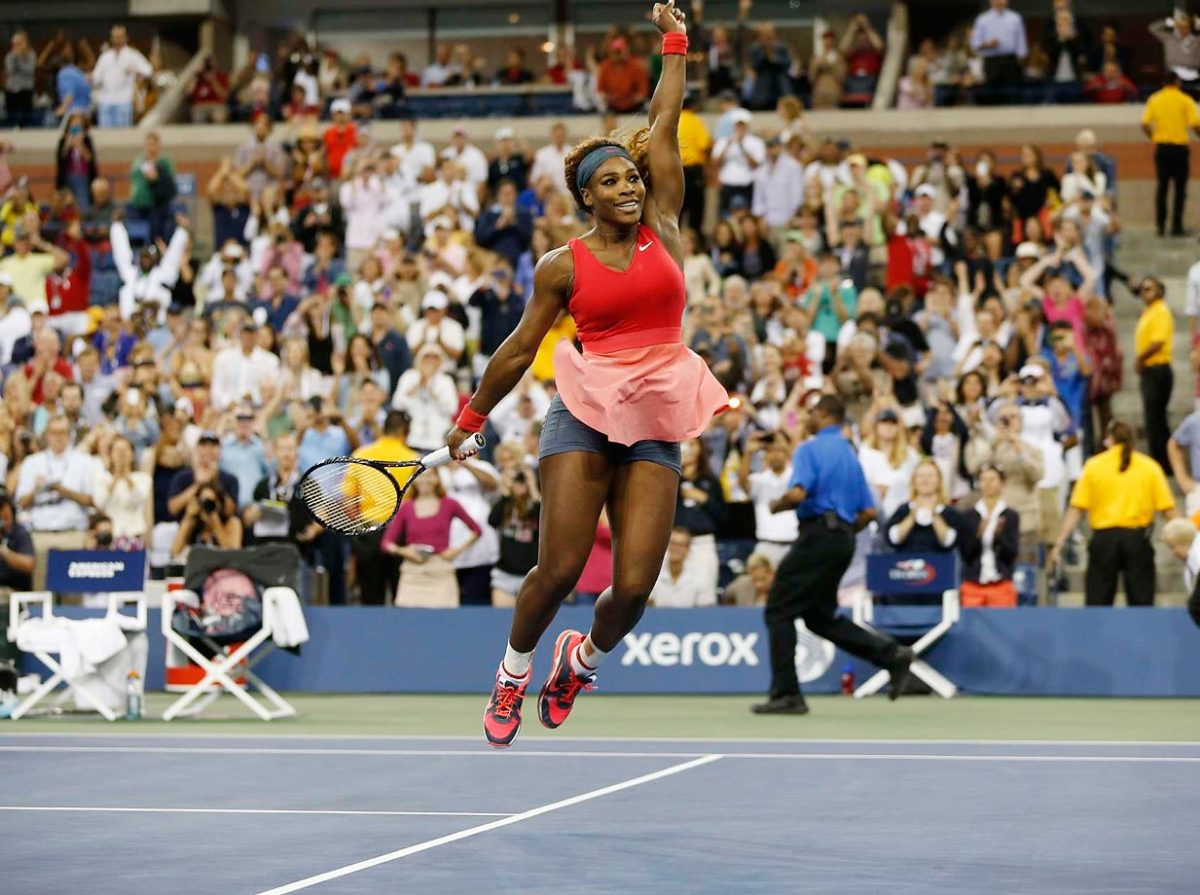
Serena wins the U.S. Open against Victoria Azarenka in 2013.
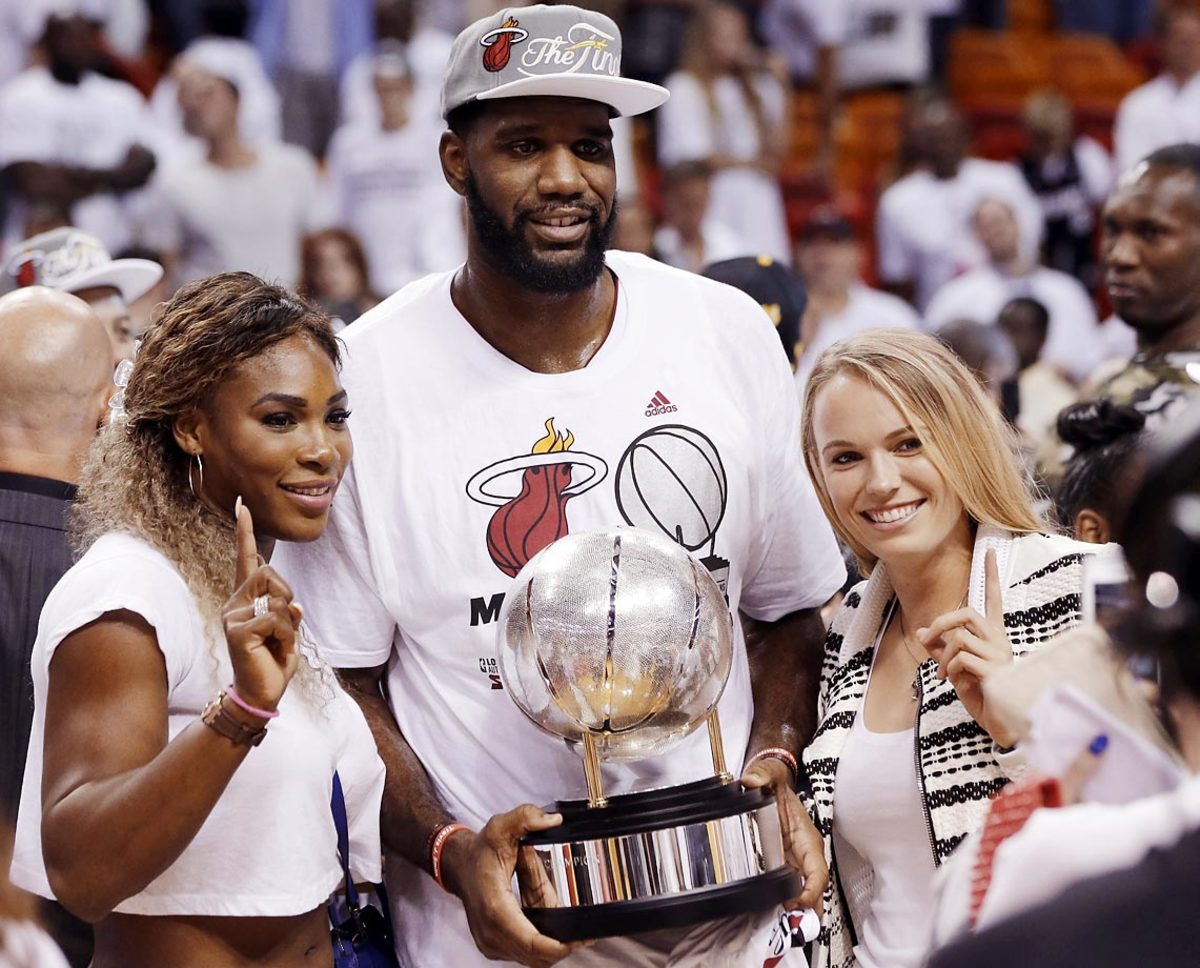
Serena Williams and Caroline Wozniacki pose with Miami Heat's Greg Oden and the NBA Eastern Conference championship trophy in 2014.

Serena Williams and Caroline Wozniacki pose together in the water on May 31, 2014, in Miami Beach.
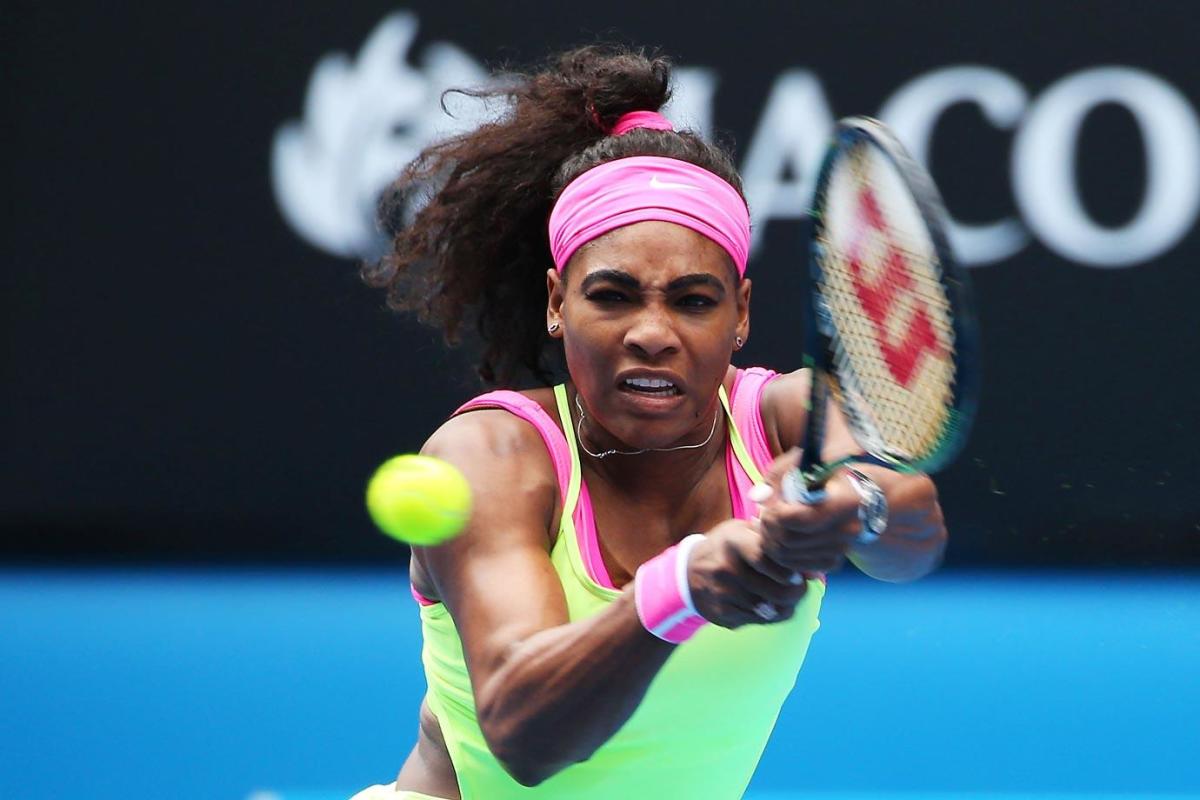
Serena Williams plays a backhand in her semifinal victory over Madison Keys in the 2015 Australian Open. Serena would go on to defeat Maria Sharapova in the final match for her 19th grand slam singles title.
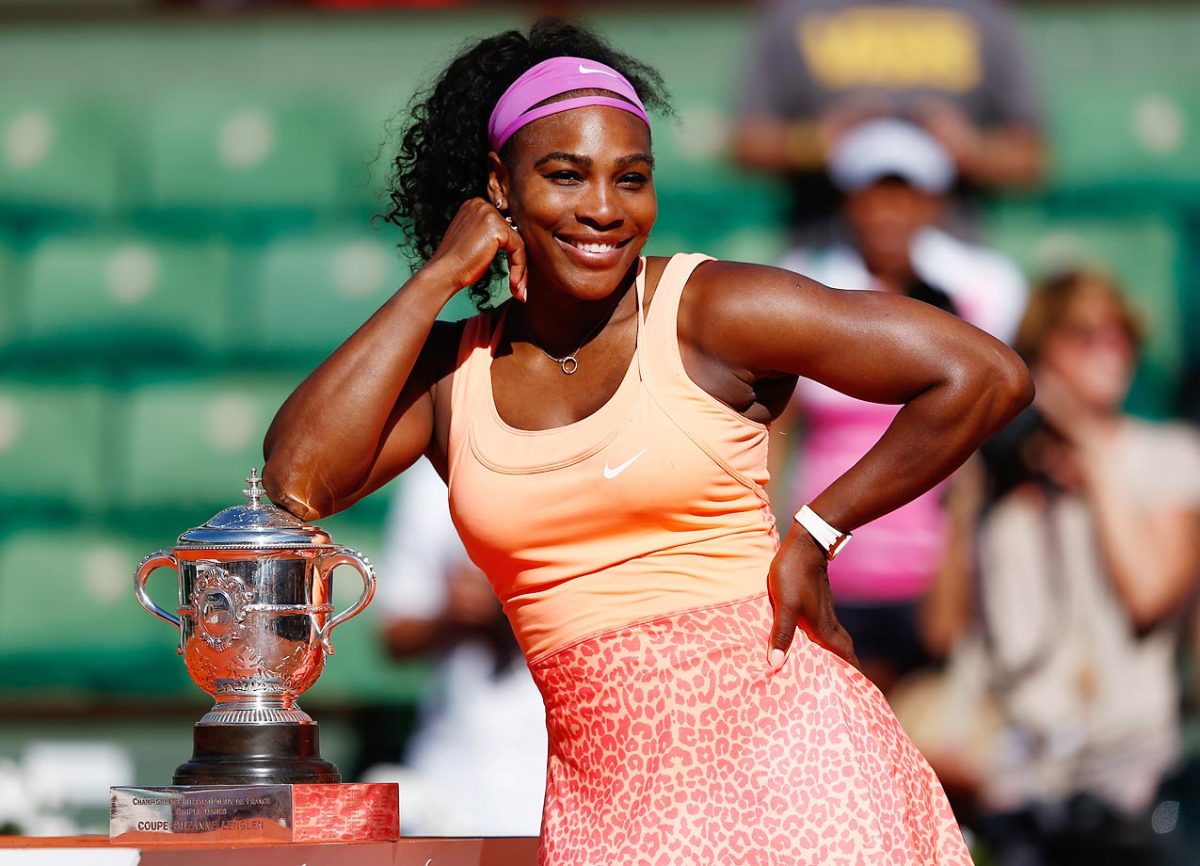
Serena Williams poses with the Coupe Suzanne Lenglen trophy after winning the singles final against Lucie Safarova at the 2015 French Open.
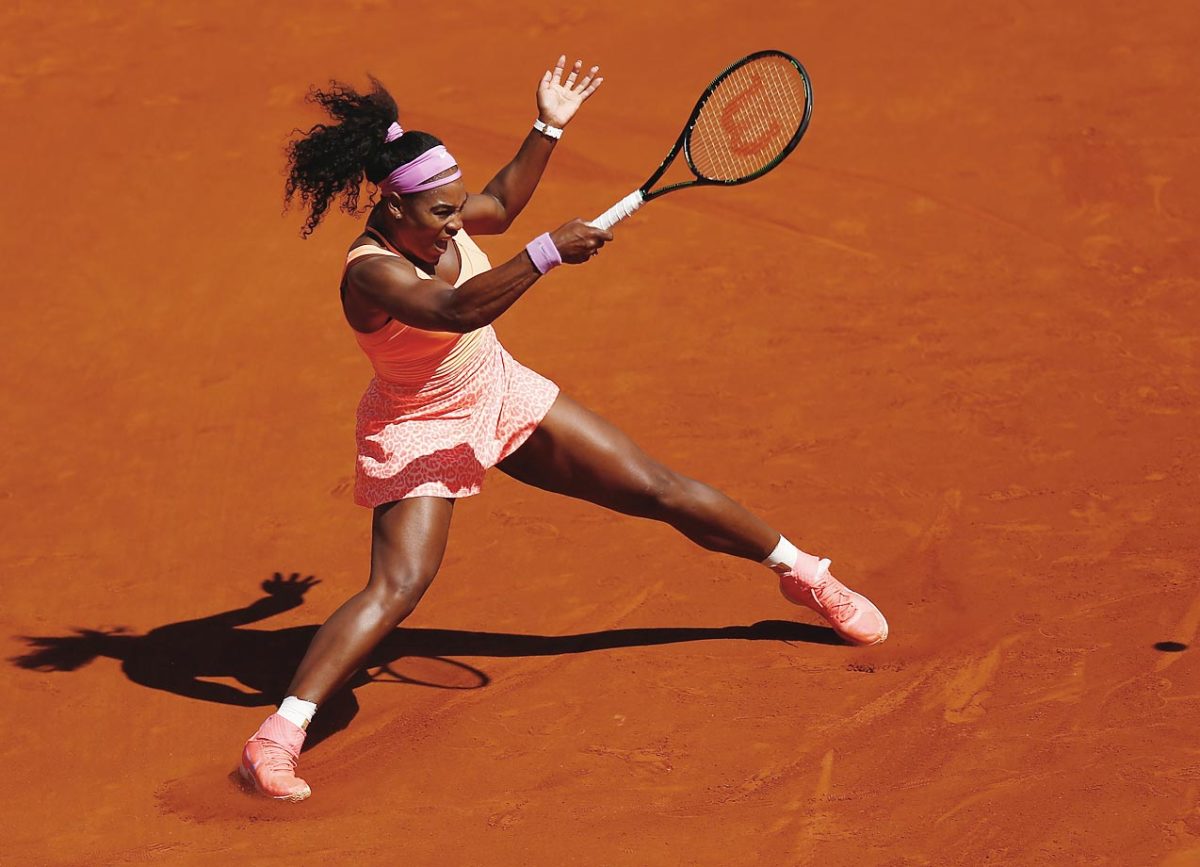
Serena Williams in action against Lucie Safarova in the Finals of the 2015 French Open.
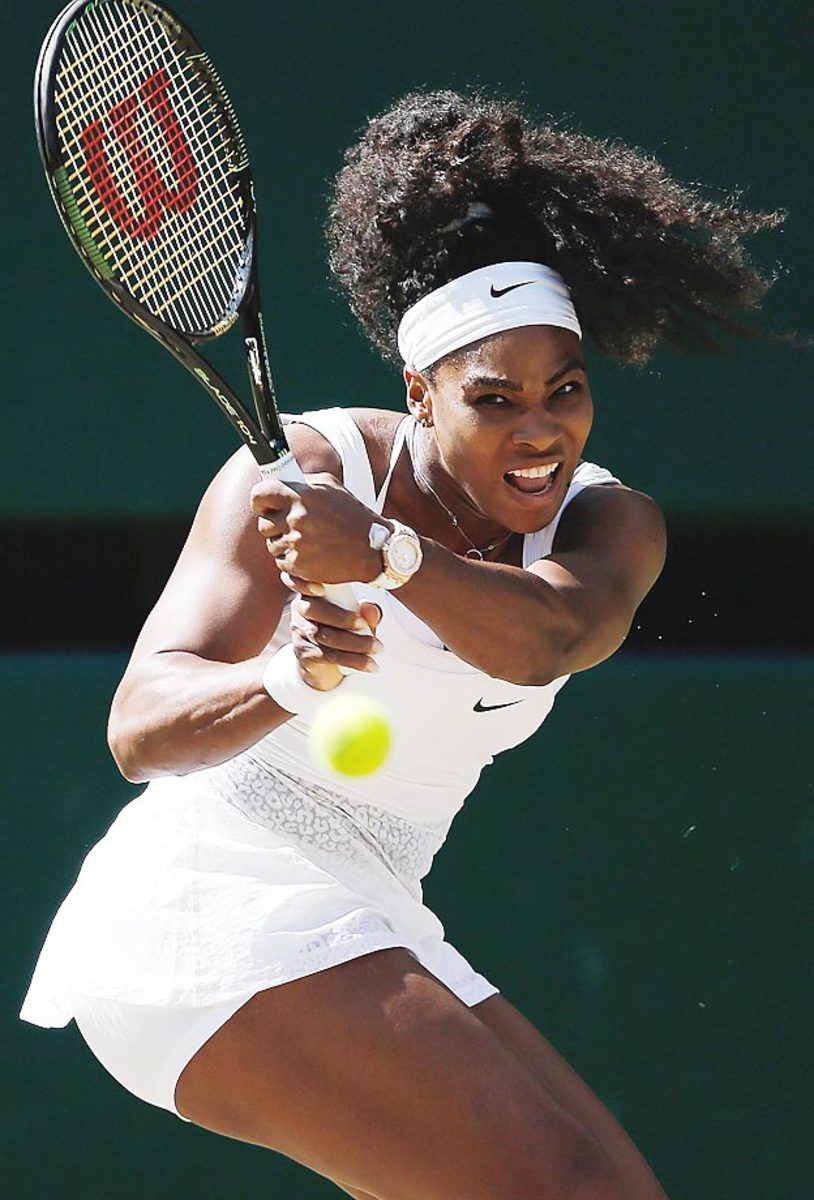
Serena Williams plays Maria Sharapova in a semifinal match at the 2015 Wimbledon Championships.
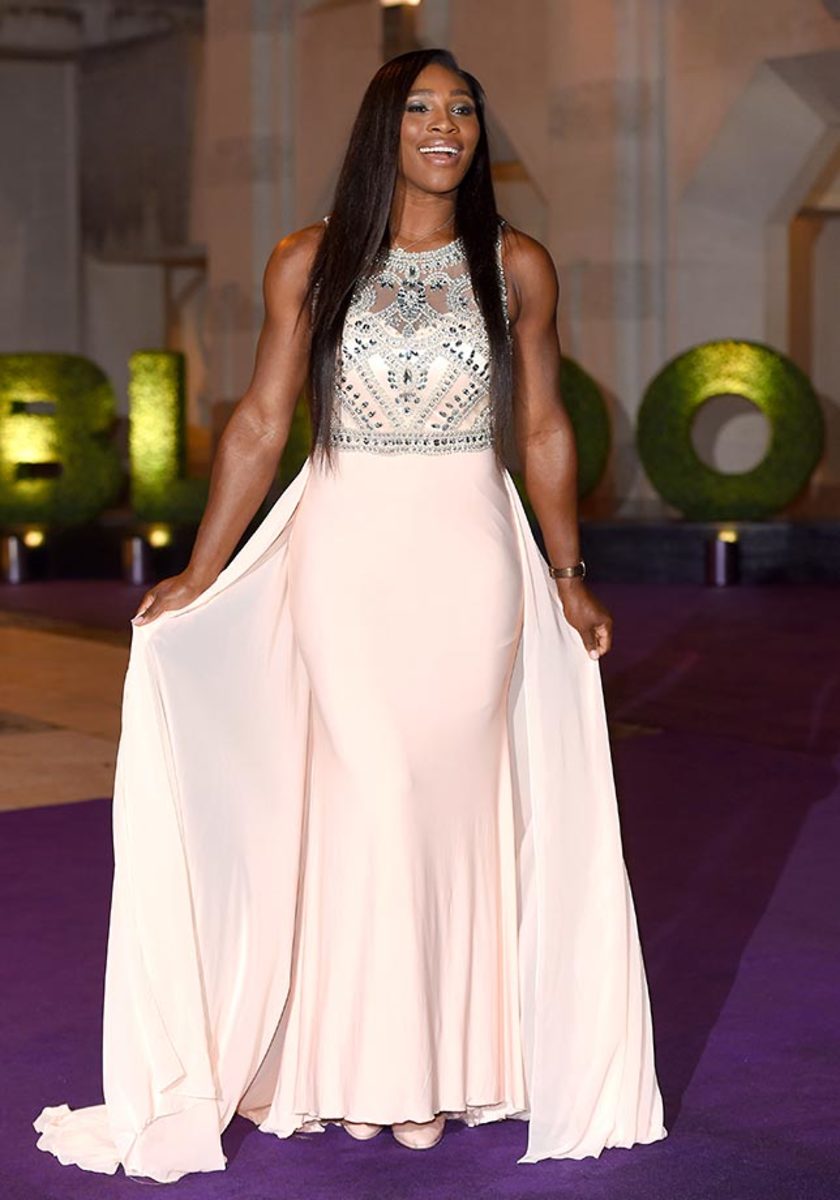
Serena Williams arrives at the 2015 Wimbledon Champions Dinner at The Guildhall in England.
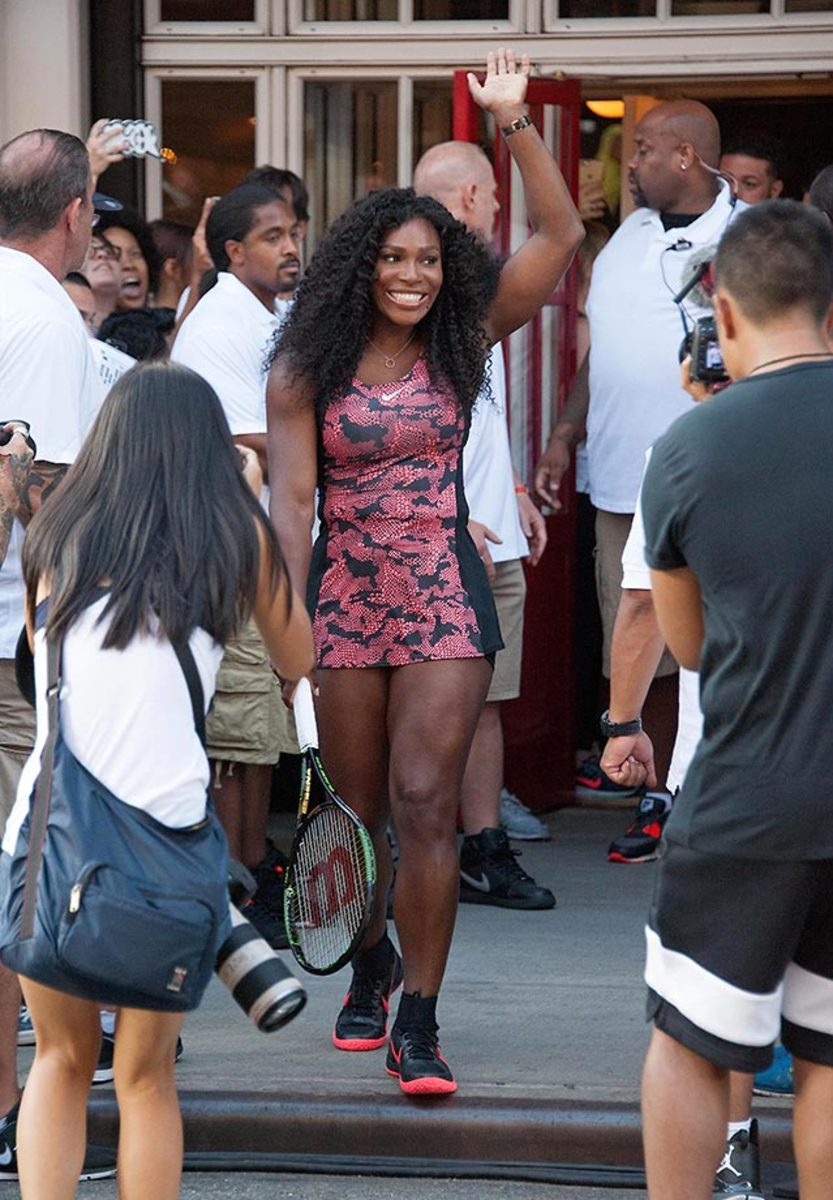
Serena Williams attends Nike's "NYC Street Tennis" event in August 2015.
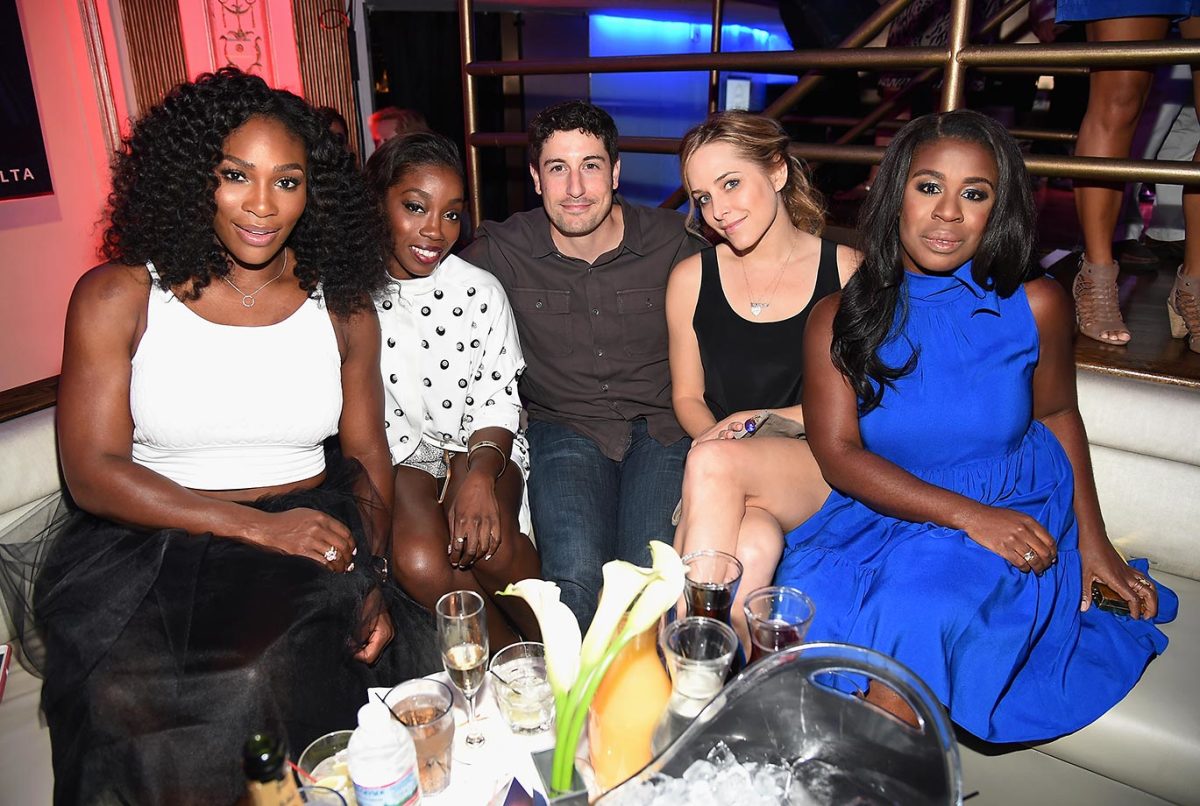
Serena, with Estelle, Jason Biggs, Jenny Mollen and Uzo Aduba at the 2nd Annual Delta Open Mic, a few days before the 2015 U.S. Open began.
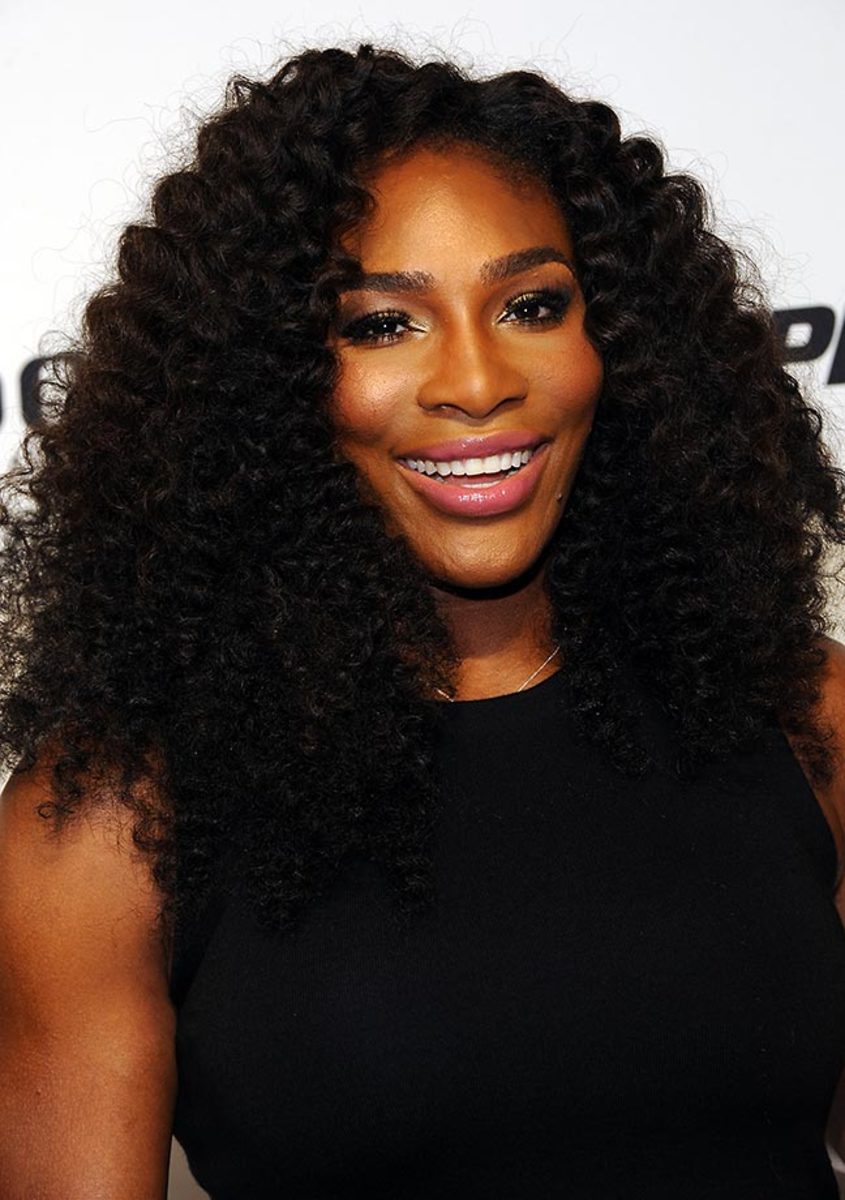
Serena Williams attends the 2015 Taste of Tennis New York at W New York Hotel while in town for the start of the U.S. Open.
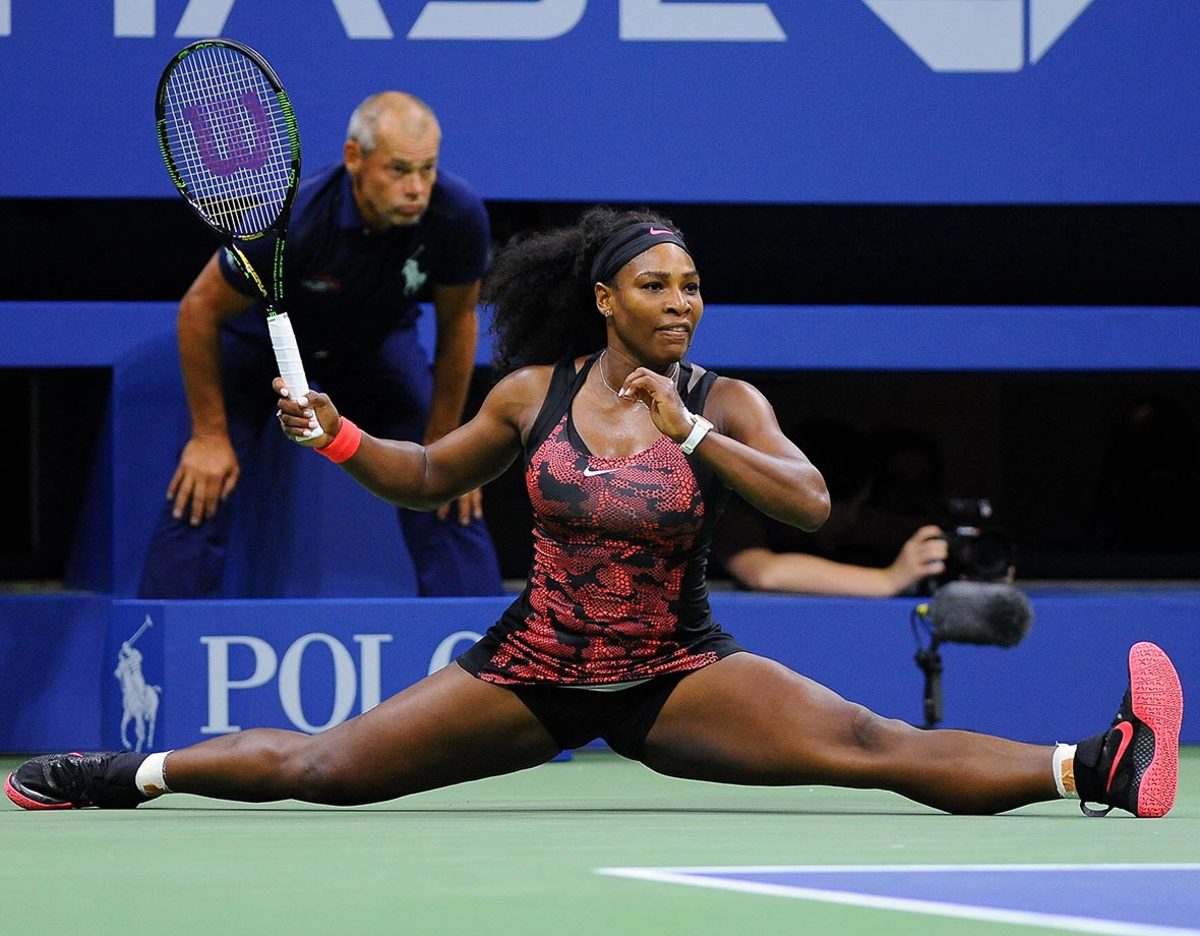
Serena Williams did an inpromtu split during her match against Bethanie Mattek-Sands at the 2015 U.S. Open.
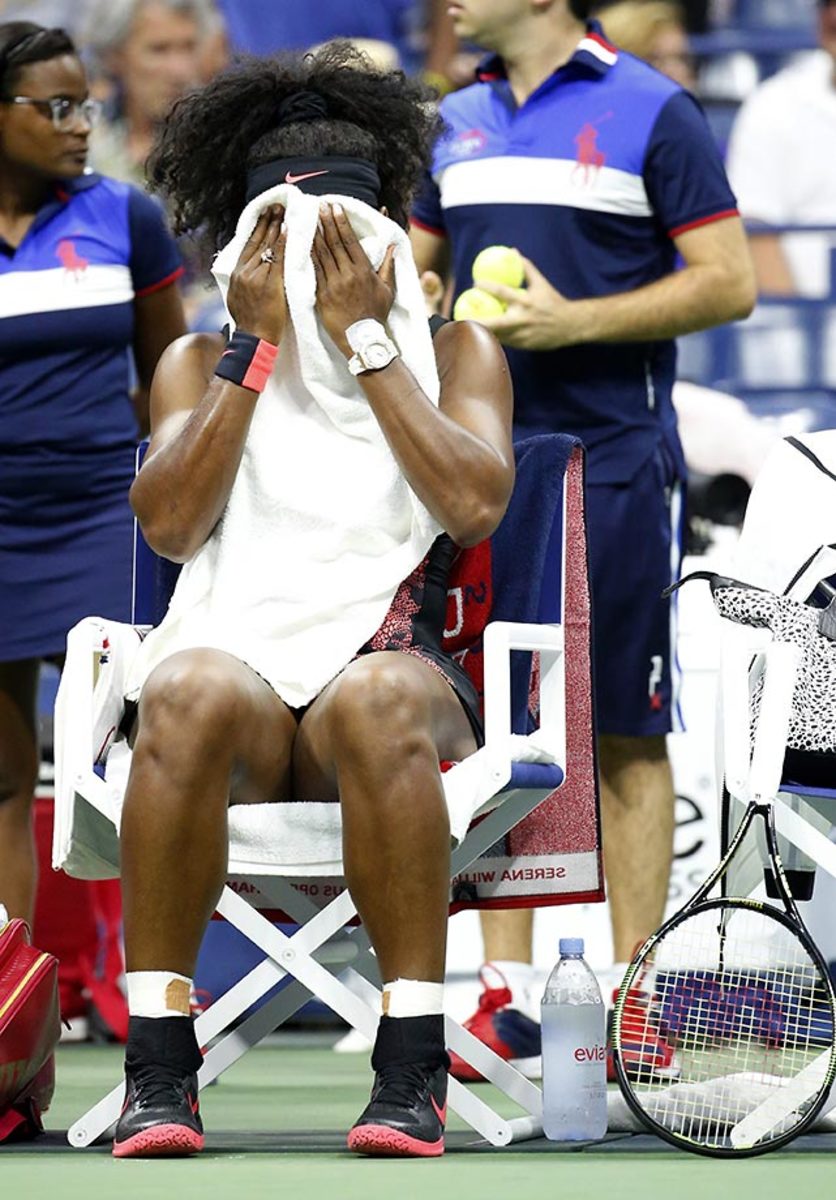
Serena Williams wipes sweat away after falling 3-0 in the first set to Bethanie Mattek-Sands at the U.S. Open.
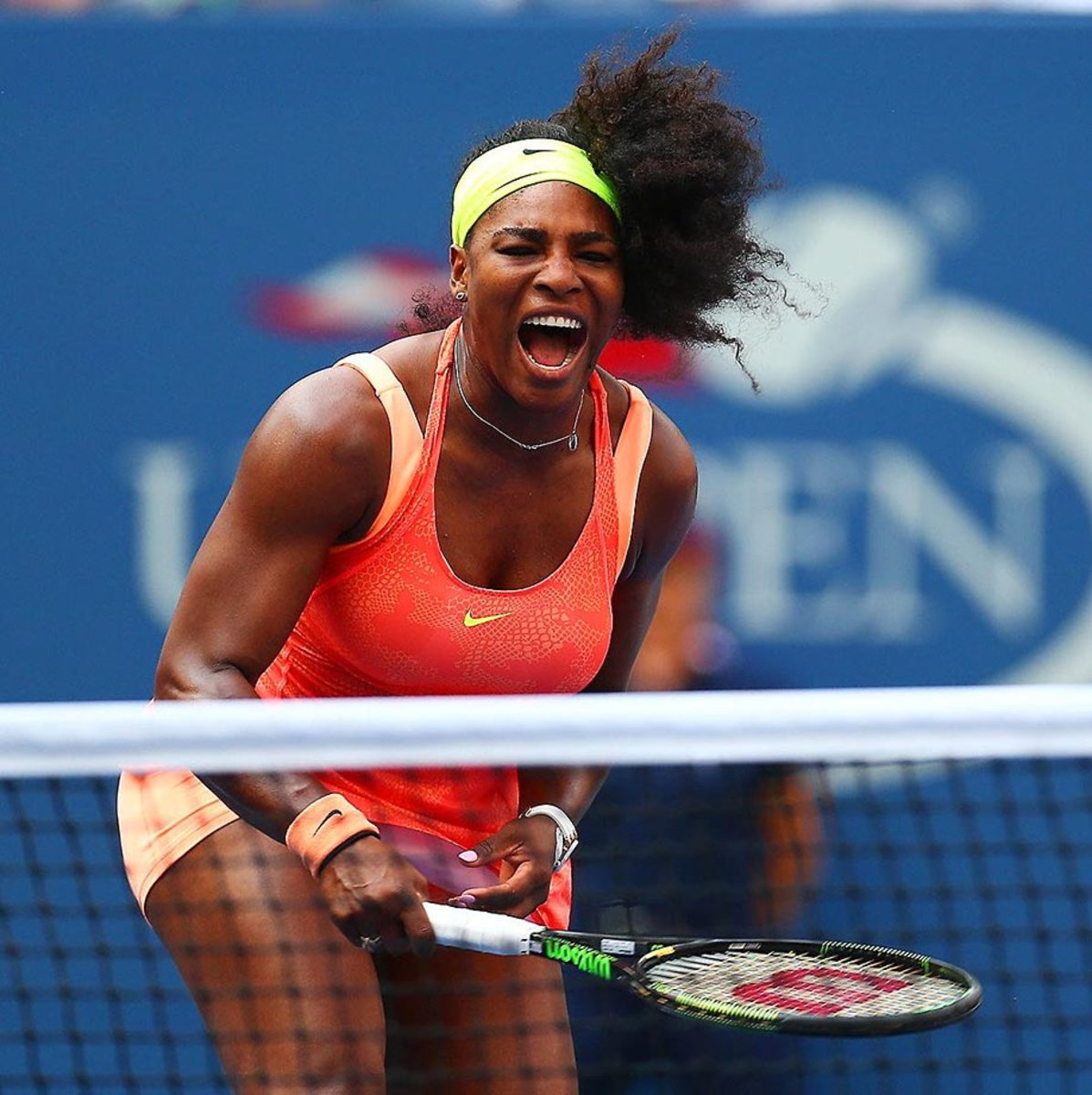
Serena Williams in action against Kiki Bertens at the 2015 U.S. Open.
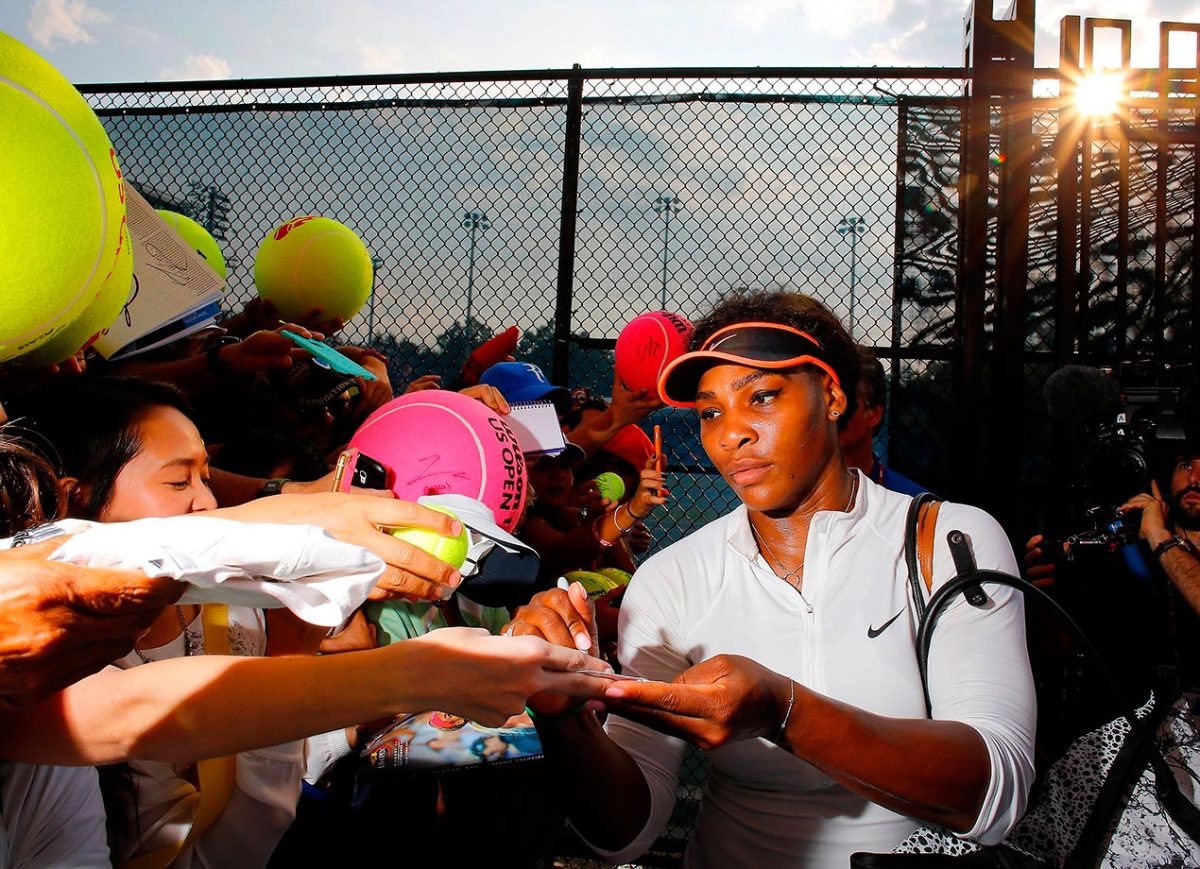
Serena signing autographs for fans at the 2015 U.S. Open.
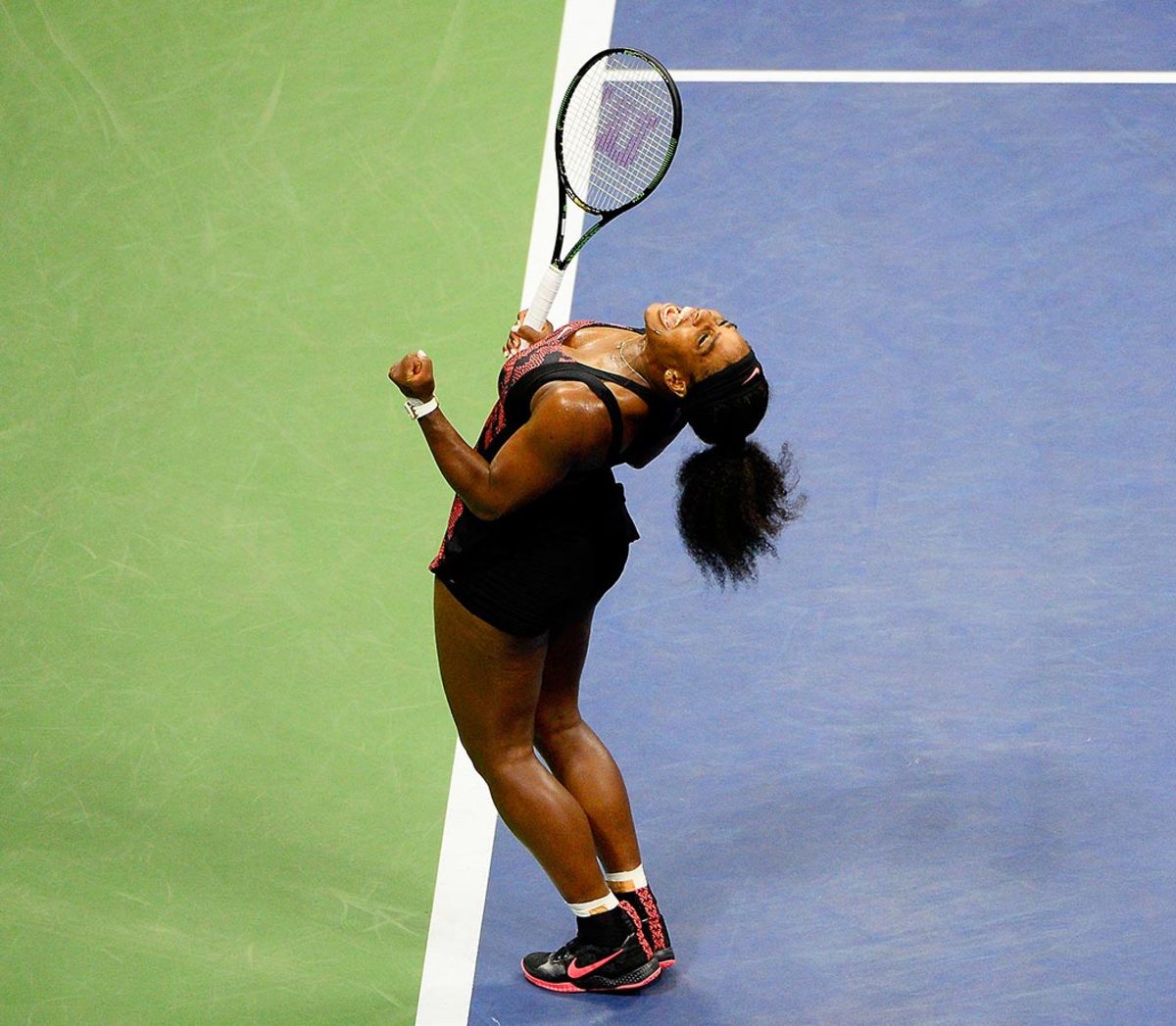
Serena Williams celebrates after defeating Venus in their quarterfinal match at the 2015 U.S. Open.
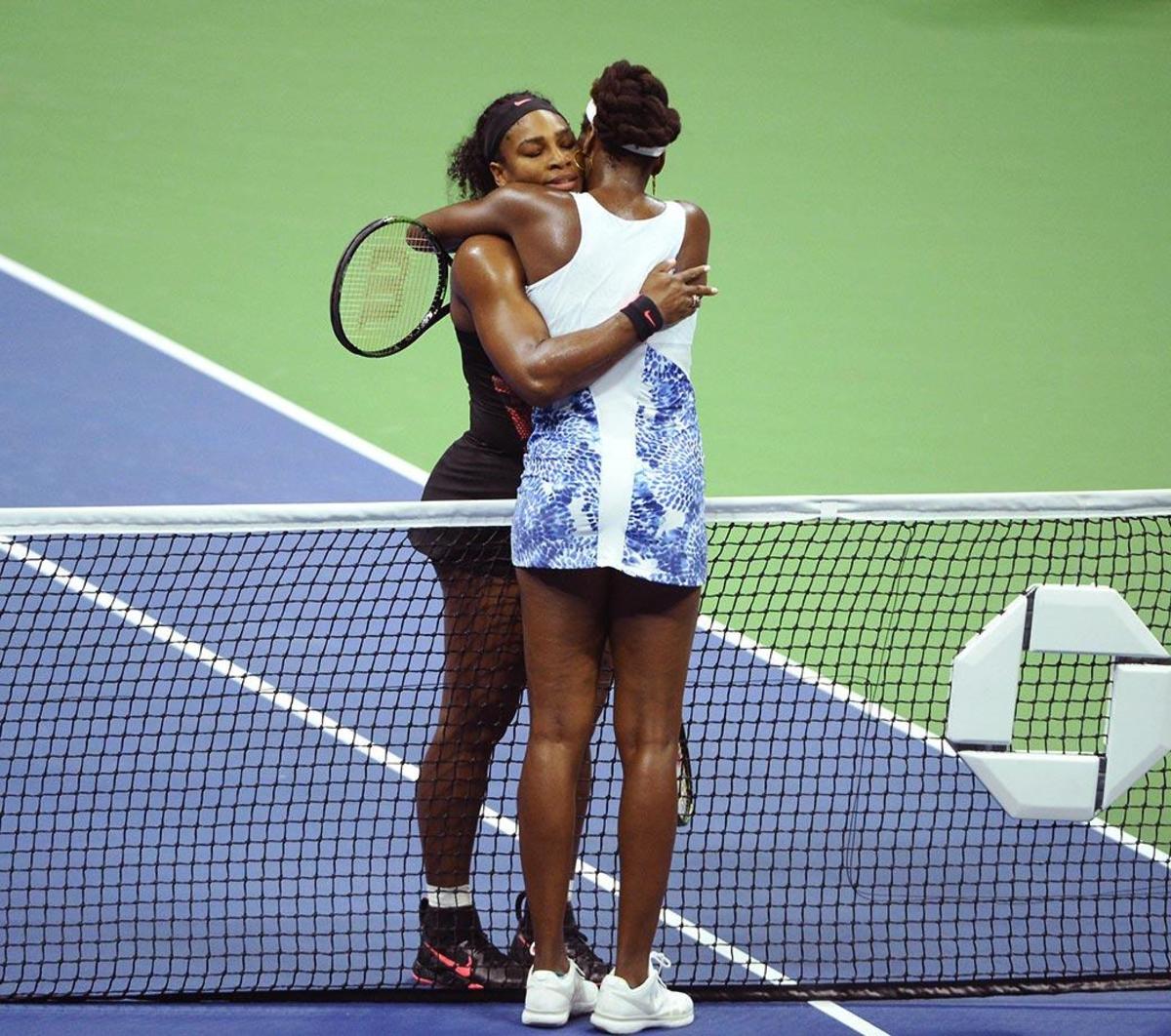
Serena and Venus hug after their quarterfinal match at the 2015 U.S. Open.
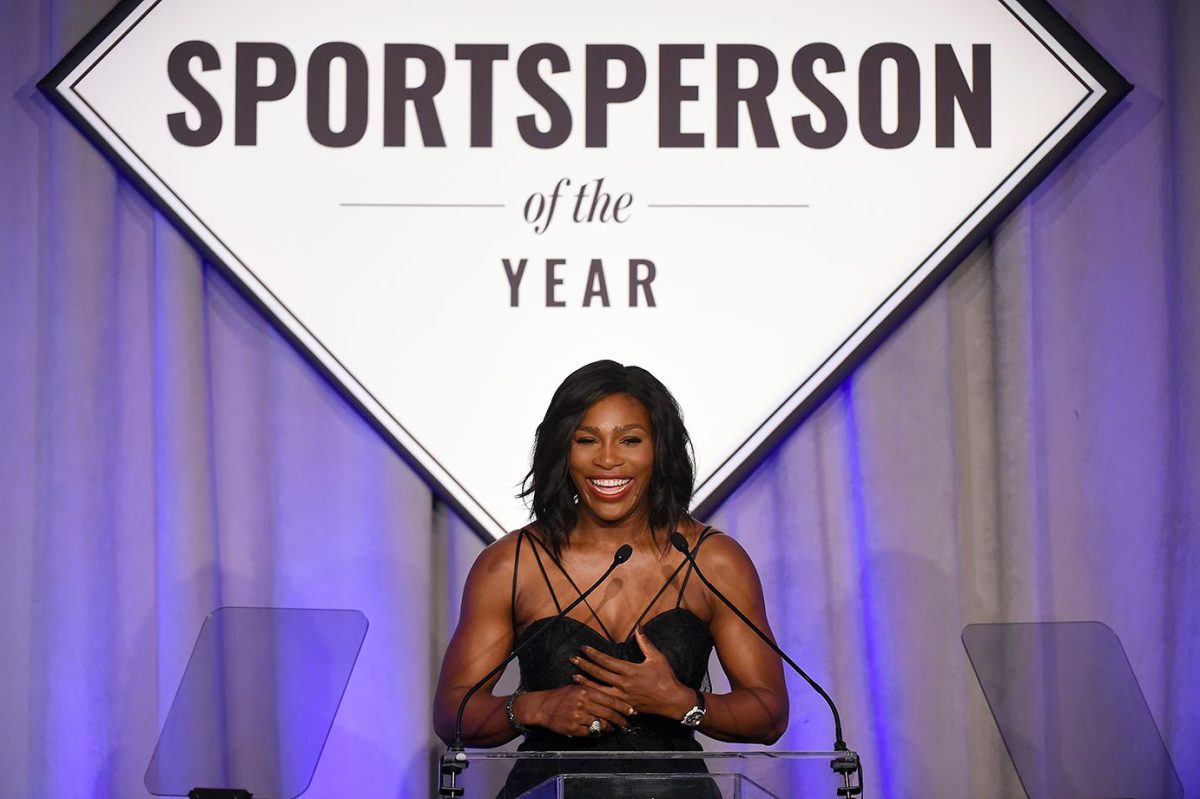
Serena Williams accepting the 2015 Sports Illustrated Sportsperson of the Year award.
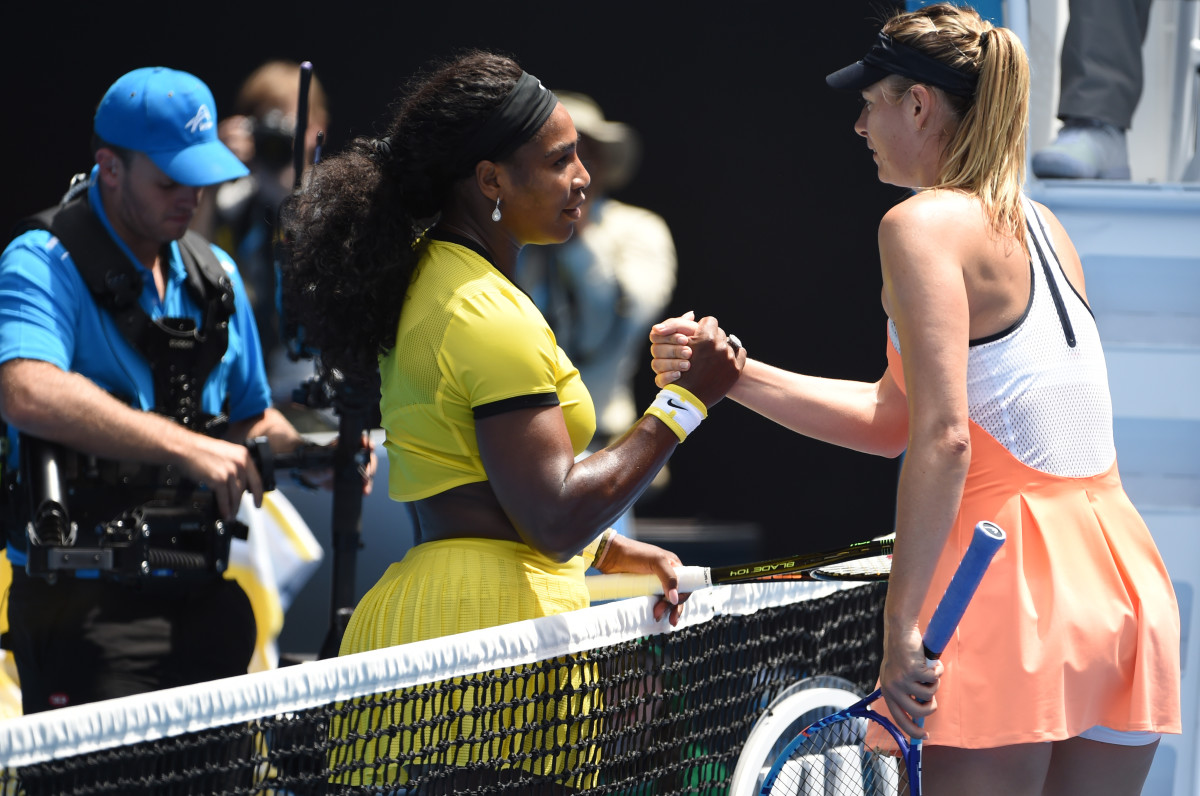
Serena Williams after a win over Maria Sharapova at the 2016 French Open.
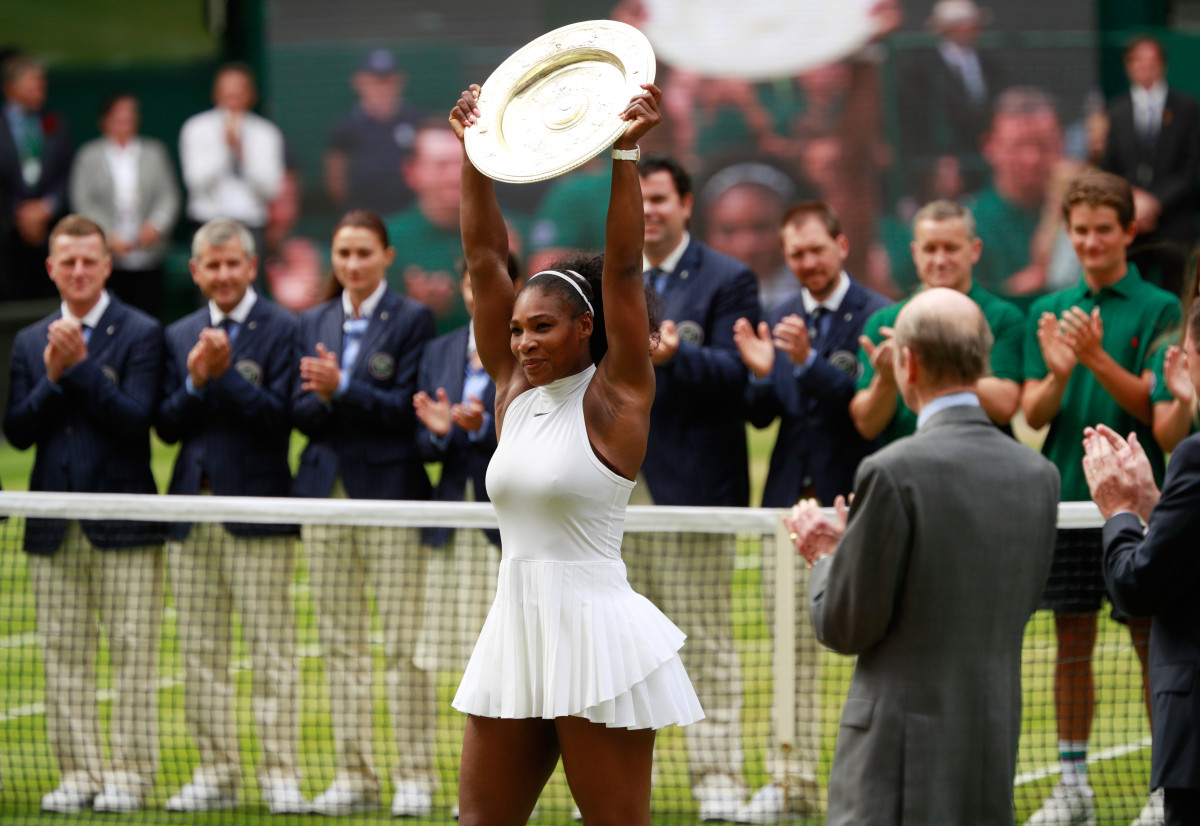
Serena Williams after winning the 2016 Wimbledon title, her 22nd Grand Slam crown, which tied Steffi Graf for the most in the open era.
True, communication out of the Williams camp -- often by design -- has never been a model of clarity. But the mixed messages these days feel oddly appropriate. On one hand Williams, 32, has won a tour-high five tournaments this year, just began her 79th straight week at No. 1 and will enter next season with few points to defend. On the other her seemingly unstoppable, late-career assault on history has hit a bewildering and dramatic pause.
After piecing together one of the sport’s most dominant seasons in 2013, Williams has yet to advance past the fourth round of a major this year. Worse, on July 1 her already dismal Wimbledon ended with a bizarre forfeit in the doubles competition when, in a second-round match with her sister Venus against Stefanie Voegele and Kristina Barrois, a dazed and disoriented Serena struggled to hold on to the ball, wept during an on-court medical exam and launched eight horrific serves before the match was called off three games into the first set.
A few hours later the WTA and Wimbledon issued a release (based, according to both, on the Wimbledon doctor’s diagnosis) describing Williams’s ailment as a “viral illness.” By then, though, two of the game’s prominent voices -- ESPN’s Chris Evert and Pam Shriver -- had preemptively questioned that by speculating on-air that some kind of drug use had caused Williams’s state. The next day another face on the game’s Mount Rushmore, Martina Navratilova, declared to ESPNW, “You don’t know what’s going on, but virus was not it: That much is clear.” None of the above hold medical degrees. Twitter all but melted. (Williams denies any drug use.)
“I see a player completely mentally exhausted, a player who is fighting severe off-court emotional battles,” says 2014 inductee -- and one-time Serena rival -- Lindsay Davenport. “Whatever those are, I have no idea. But she’s a player who plays well when things are going well. You can see when things aren’t right. I don’t think things’ve been right all year.”
“It’s not the Serena I know,” says fellow inductee Nick Bollettieri, one of Williams’s former coaches. “It’s sad. I would never want [the episode at Wimbledon] to be remembered as the end. It would be a shame.”
What happened after Wimbledon, of course, was almost too predictable. Williams came back, hard. At July’s hard-court tune-up at Stanford, she put a typically vague gloss on her behavior in London, saying that it was “weird” to watch replays and that she planned to get more medical tests at season’s end. Then she began piling up wins, took her third Stanford title, moved on to the tour’s next stop in Montreal. When, at her first press conference there, a reporter asked about the “frightening” scene at Wimbledon, Serena said, “We talked about that last week,” tugged off her microphone and bolted the room.
Previewing the U.S. Open: Storylines, predictions, dark horses and more
She then crushed rival Sam Stosur 6-0, 6-2 in her opening match, and scratched and scrambled her way into the Rogers Cup semifinals. Too many sets were tighter than usual, and the fact that Serena then lost to a resurgent Venus for the first time in five years signaled rust in both serve and nerve. But for the first time in months, she seemed fully engaged.
“I definitely didn’t see myself playing tennis at my age,” Serena said at her quarterfinal press conference in Montreal. “But it just so happens that I love to play, I love to compete. I’m having fun. I just really can’t let it go. ... I don’t want to let go. I won’t let go. That’s why I’m still here.”
She laughed then, as if “fun” is how you’d describe her summer, and everyone in the room, the world even, had moved blissfully along from Wimbledon too. Such willed amnesia is part of Williams’s greatness; on court no one flushes setbacks faster. It also proved key when faced with the tour’s early hostility, her parents’ divorce, her sister’s murder, withering criticism and life-threatening blood clots -- knee-buckling crises all, yet each time she came back roaring. “She’s always hungry,” says Serena’s coach, Patrick Mouratoglou. “She always wants more, so she’s constantly focusing on the next thing, never on the past.”
Problem is, even by Williams’s own oft-surreal standards, the Wimbledon spectacle was unforgettable. And for one whose career has prompted as many questions as it has brought titles, it threatened to become the biggest question of all. What, exactly, rendered sport’s strongest woman so helpless?
*****
The drug tester showed up first thing the next morning. “Bright and early, as always,” Serena recalls. She was already awake then, still ill, in the flat she was sharing with Venus in Wimbledon village. “At seven, as I was throwing up, she knocks on my door,” Williams said. “I’m like, C’mon. They always come at the worst times.”
She says this on a Monday afternoon, two days before Williams began grinding through the field at the Western & Southern Open in Mason, Ohio. She had been up since 8 a.m., doing interviews, sketching dress ideas for 2016 with a Nike designer; now she was digging into a Caesar salad with salmon. She seemed healthy, said she was taking no medication, felt no aftereffects of her Wimbledon episode.
Yes, she had seen or heard most every rumor: She was high, or had overdosed on a prescription medication, or mixed two or three and experienced a bad reaction. Or she was with child. Williams says all are untrue.
“I have nothing to hide,” she says. “No, I didn’t take anything. If you want to ask me if I took drugs, I didn’t take drugs. I’m not on drugs. I’ve heard it all. I’m not pregnant; I wasn’t pregnant. Although I think a baby would be great, but there’s a time and place for everything. But no, I don’t do drugs. Never did ’em. I’m scared of ’em. I’m not on that stuff.”
Word had gone around that some in the women’s locker room that day, watching her distress live on TV, were pantomiming Serena drinking. But, Williams says, she wasn’t drunk, either. “God, no,” she says, laughing. “I wish.”
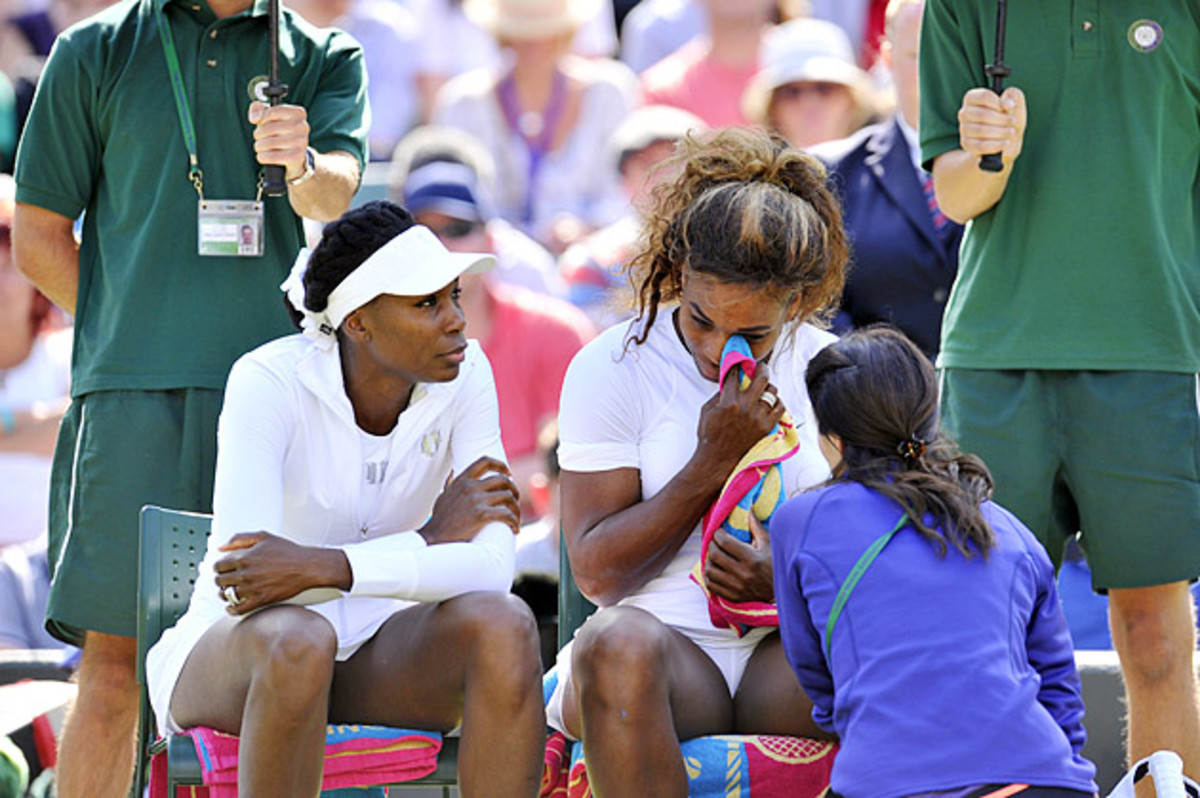
The executive director of the International Tennis Federation’s antidoping program, Stuart Miller, would not comment on the taking of Williams’s blood and urine samples. Typically, he said, his program receives testing results within a month of collection. A player is alerted to any possible violation soon after, but the result is not made public for another three months. Williams said last Friday, six weeks after her Wimbledon retirement, that she has received no such notification.
Her Wimbledon explanation: After losing meekly the previous Saturday in a third-round singles match to 25th seed Alizé Cornet, Williams took to her bed for the next three days, feeling dehydrated, dizzy and feverish, “just in my room, sweating like crazy.” She was not examined by a doctor. Venus urged her repeatedly to pull out of their Tuesday doubles match. “Begged me not to play,” Serena says.
Nothing may supplant the 1993 stabbing of Monica Seles in Hamburg as the most stunning moment to occur on a tennis court. But if you’re wondering where to rank Serena’s Wimbledon scene, consider this: The vision of one of the game’s greats in full dissolve was just barely the strangest thing on offer.
Yes, there was Serena, shuffling in behind Venus onto Wimbledon’s No. 1 Court, hair bedraggled and eyes dull under a stark English sun. She hadn’t warmed up at all, called for a tournament car only when she saw the previous match was ending. Mouratoglou, once her presumed boyfriend and the man credited with reviving her career, hadn’t seen her in two days. He knew she had been ill, but not to what extent -- and he was seated in the front seat of the car when she climbed in the back. They didn’t speak on the short drive to the All England Club.
Within 10 seconds of seeing Williams walk on court, Mouratoglou motioned from the stands to a WTA official on the court. “Send a doctor now,” he said. “Something is wrong. Don’t let the match start.”
Warmup balls bounced off Serena’s hands and racket like a plump new breed of butterfly, the crowd’s speculative murmur rising with each fumble. Then she sat passively courtside during a 14-minute delay, alternately teary or blank-eyed, while tournament doctor Jane Allen took her pulse and blood pressure, searching for measurable evidence of something wrong. When nothing was found, Williams insisted on starting play, managed to make contact with four balls, whiffed on another and then sent her serve -- any other day the best ever seen -- dribbling again and again into the net. Why not pull out?
WATCH: A game of double faults from Serena & she & sister Venus retire from their doubles match. #Wimbledon http://t.co/nL6o6h2fE7
— Wimbledon (@Wimbledon) July 1, 2014
“I hate to let people down,” Serena says. “I felt like, I don’t want anyone to be upset thinking I pulled out because I lost [in singles]. I’m no quitter. I should have just taken that moment and said, What the heck are you doing? Just stay in bed today.”
Oddest of all, though, was the way that Venus let it all play out. Though the sisters’ cheery opacity has made them, even after two decades, more famous than known, no one doubts their mutual devotion. Yet as Serena sat in distress, Venus stared unhurriedly into space. When Serena’s strokes began fluttering about, she just blinked and played on.
Observers, of course, had no way of knowing that beneath her poker face, Venus had repeatedly told her sister during warmups to walk off the court. “I wanted her to put the racket away, but I tried not to be bossy,” Venus said in her first statement on the matter, at last month’s tournament at Stanford. “She kept saying, ‘I want to try.’ She tricked me into letting her try.”
*****
That it took Venus 29 days to speak came as no surprise: Silence in the face of fevered speculation is a Williams family trait. We’ll never know if this stems more from self-protection or plain lack of interest in what the world says or thinks— -- Serena’s spin control, post-Wimbledon, consisted of tweets and bikini shots from Croatia -- but there’s another reason the term “viral illness” was met with widespread skepticism. A career’s worth of mixed messages had finally caught up with her.
Serena’s most mind-bending two-step, of course, came at the 2009 U.S. Open: Two days after shaking her racket and threatening to shove “this f------ ball down” a lineswoman’s “f------ throat” during the semis, Williams followed up a tepid first apology by declaring she wanted to give the terrified official “a big old hug.” So jarring a flip may capture what Mouratoglou calls her “extreme” nature, but the visuals couldn’t have felt less real.
Such moments, media catnip, have a way of obscuring everything else in the Serena conversation -- her unassailable legacy as a racial pioneer, that historic 2001 U.S. Open final against Venus, the Serena Slam and the mesmerizing, controversy-riddled battles against Justine Henin and Jennifer Capriati, her considerable personal charm. Serena dabbles in acting. With her Wimbledon symptoms hardly hewing to the popular image of a virus, it was easy, again, to wonder the worst.
Ranking Serena's Grand Slam Titles
2003 Australian Open
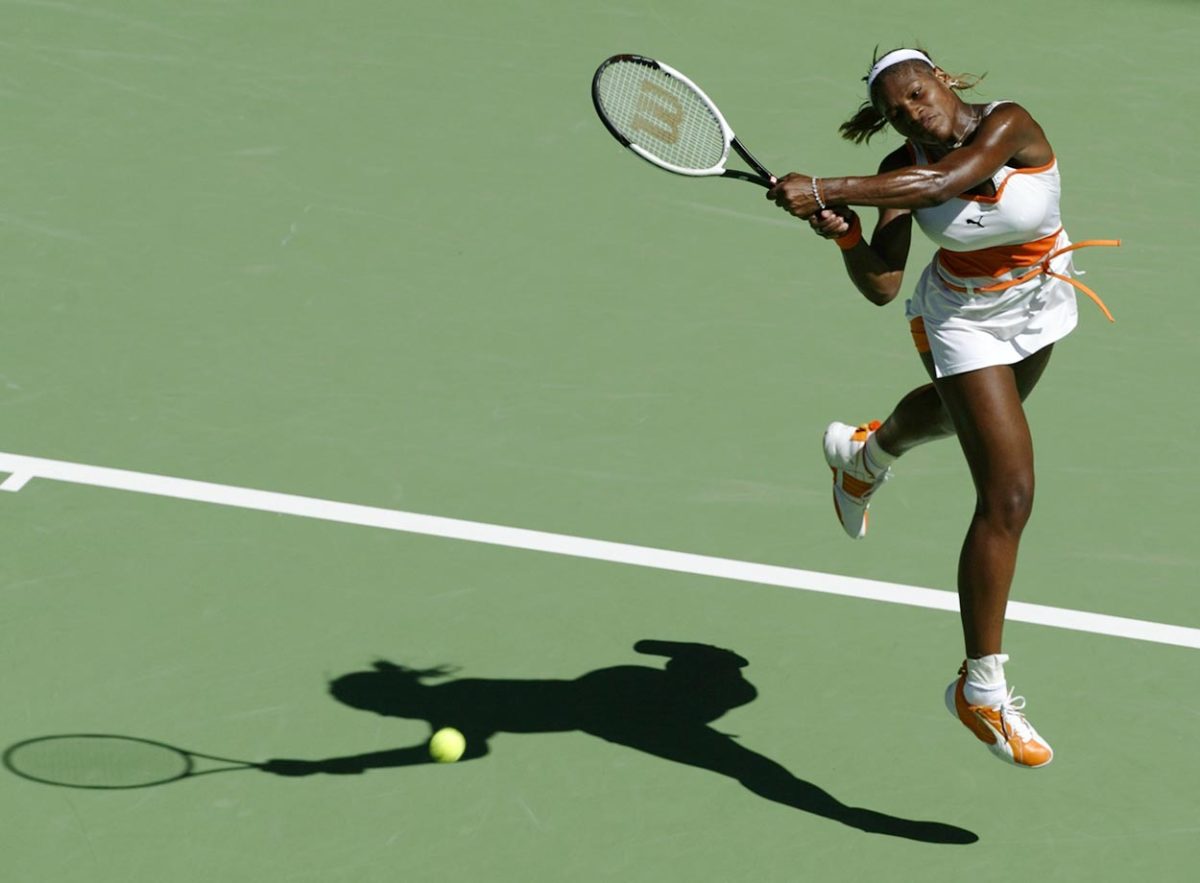
In the fourth consecutive Williams-Williams Grand Slam final, Serena became the fifth woman in history to hold all four Grand Slam titles at the same time, joining Margaret Court, Maureen Connolly, Martina Navratilova and Steffi Graf.
1999 U.S. Open
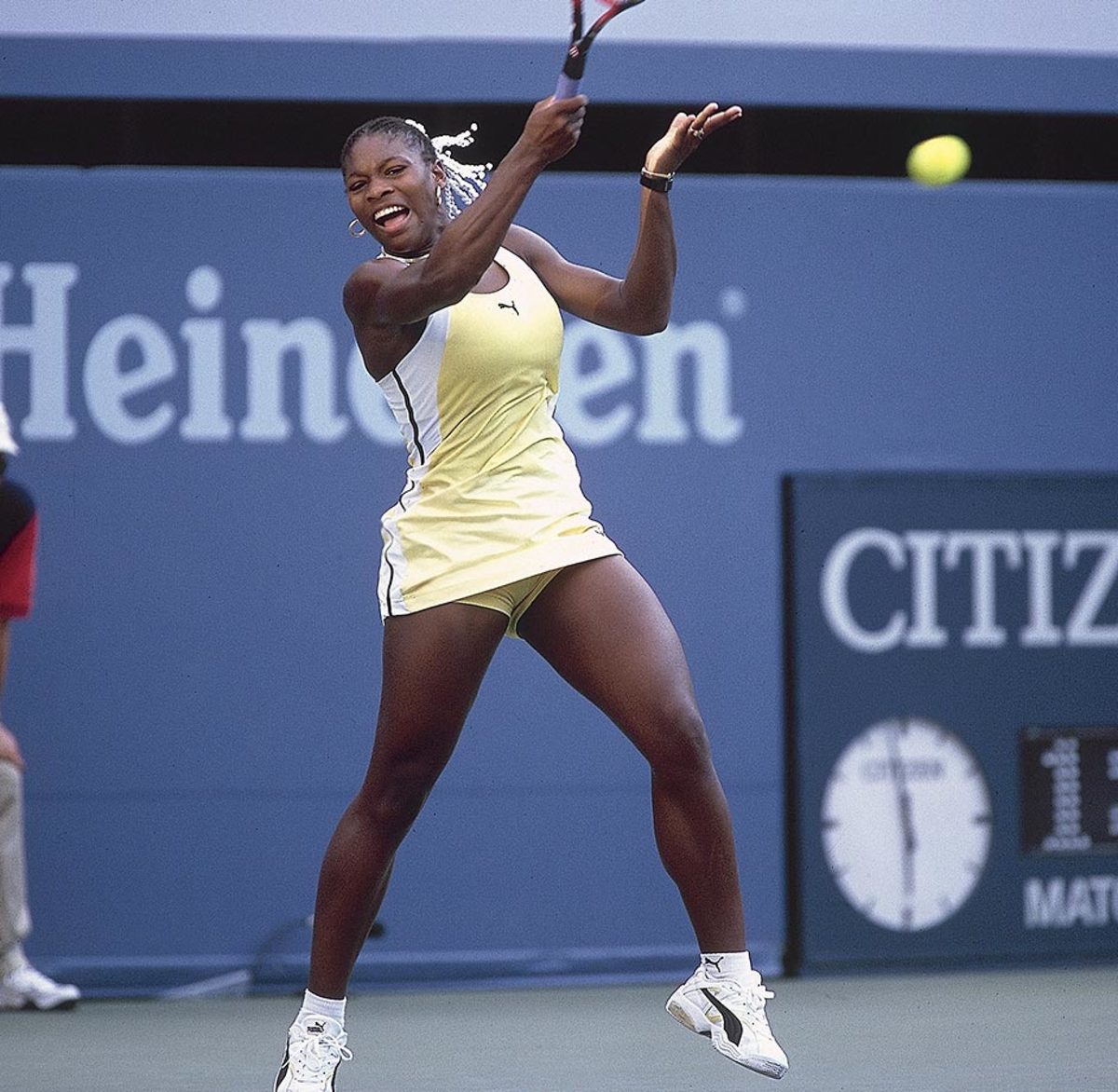
At 17 and in only her second professional season, Williams defeated 18-year-old Hingis, the world's top ranked player, to become the first black woman to win a Grand Slam title since Althea Gibson in 1958. In capturing the title, Williams beat three of the top four women in the world --Hingis, Lindsay Davenport (2) and Monica Seles (4).
2012 Wimbledon
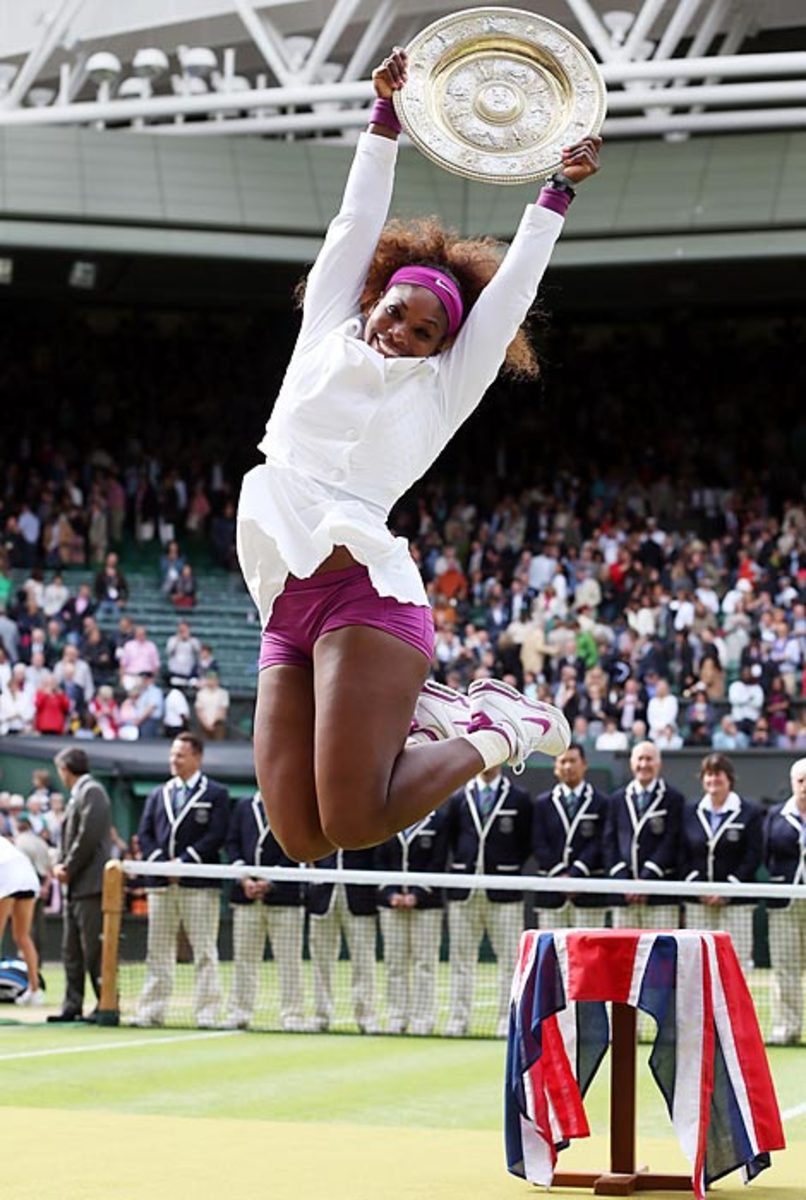
Just six weeks earlier she suffered her first loss in the opening round of a Slam at the French Open. But after being sidelined for almost a year with a foot injury and being rushed to the hospital for a pulmonary embolism, Serena won her first major in two years by defeating Agnieszka Radwanksa 6-1, 5-7, 6-2. At 30, she became the oldest woman to win Wimbledon since Martina Navratilova in 1990. And she smacked a tournament record 102 aces, to boot.
2007 Australian
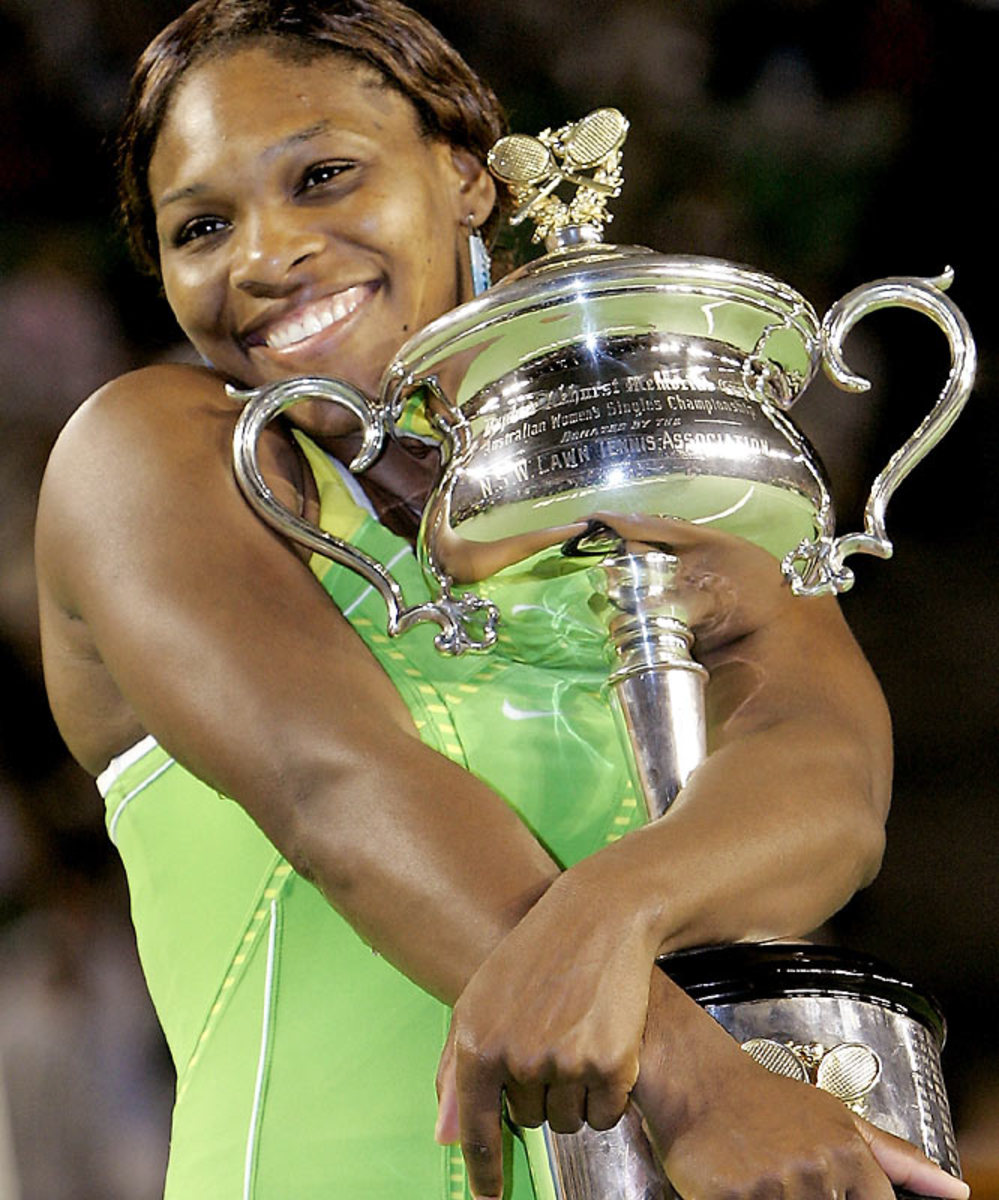
Serena came into the tournament unseeded, and capped an amazing fortnight by dismantling the top-seeded Maria Sharapova in the final.
2015 Wimbledon
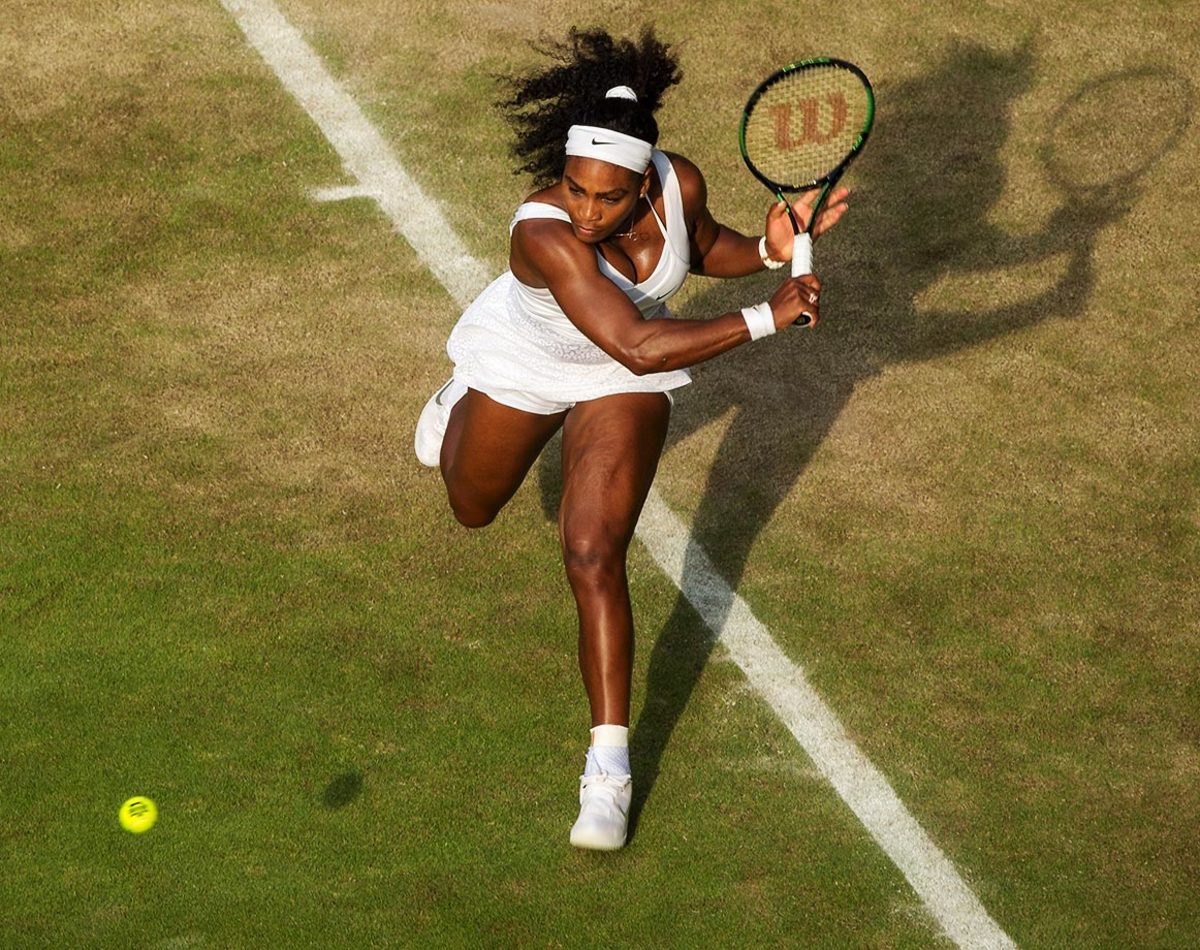
Serena defeated Heather Watson, her sister Venus, Victoria Azarenka, Maria Sharapova and finally Garbine Muguruza en route to her 21st Grand Slam title at Wimbledon in 2015. She also completed the "Serena Slam" for the second time in her career and moved one step closer to completing the calendar Grand Slam.
2005 Australian Open
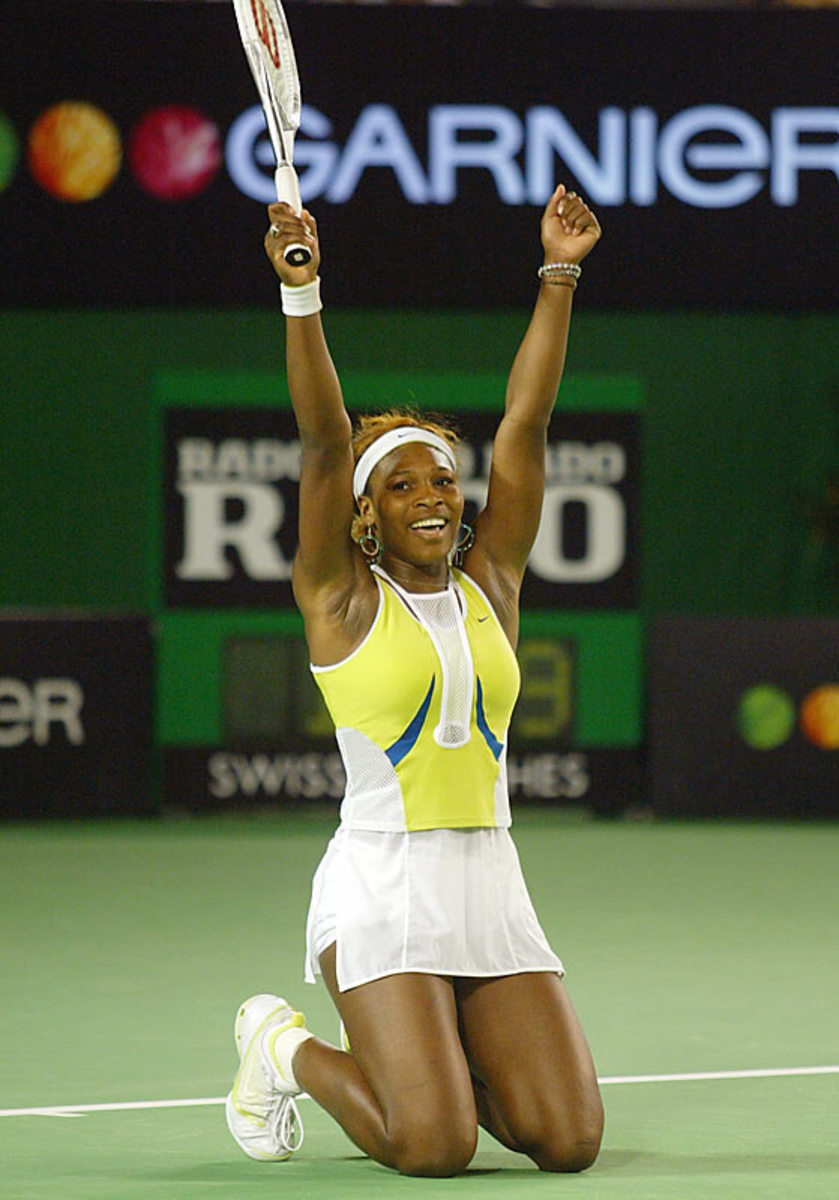
Plagued by a rib injury that forced her to leave the court and get treatment after five games, Serena fought back and eventually wore down Davenport. To reach the final, Serena had staved off two match points by Maria Sharapova in winning a semifinal 2-6, 7-5, 8-6.
2013 French Open
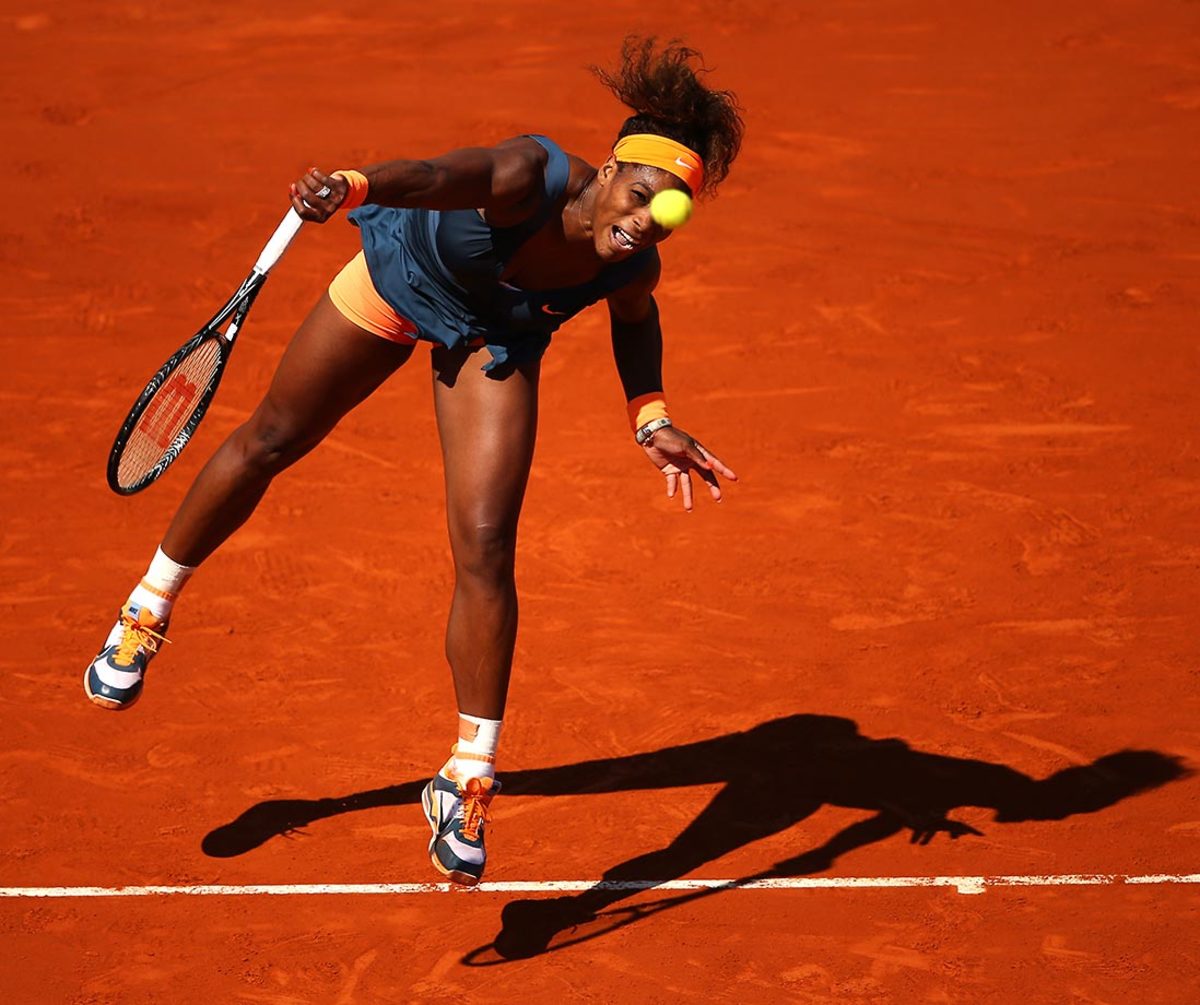
A year earlier Serena lost in the first round to 111th-ranked French wildcard Virginie Razzano 4-6, 7-6 (5), 6-3, her first opening round loss at a Slam in her career. She finally cast off her Parisian demons -- she hadn't been past the quarterfinals since 2004 -- to win her second French Open title 11 years after her first title in 2002.
2002 U.S. Open
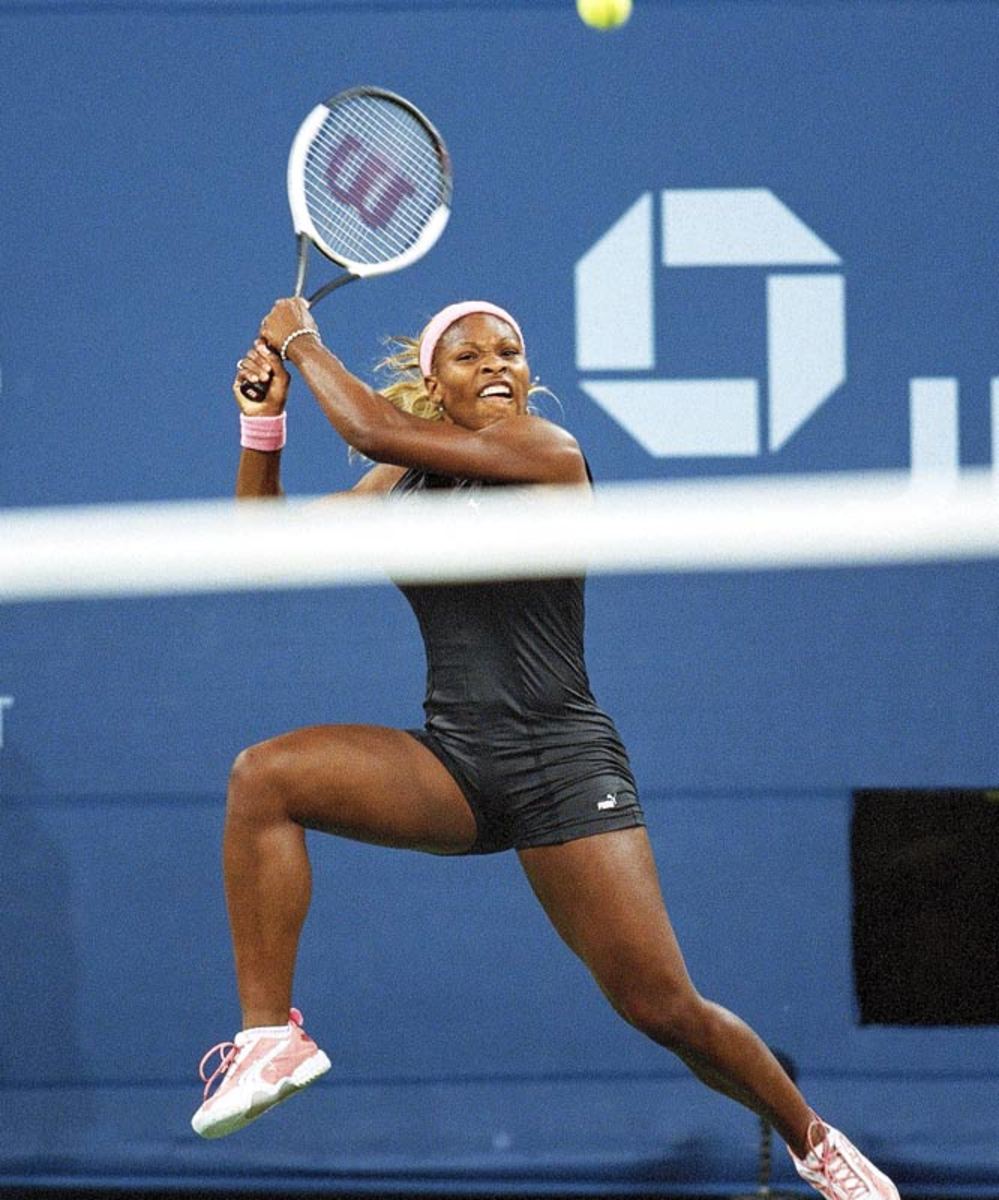
In an awesome display of power, Serena didn't lose a set over the two weeks and was never even taken to a tie-break in her third straight Grand Slam final win of the season.
2014 U.S. Open
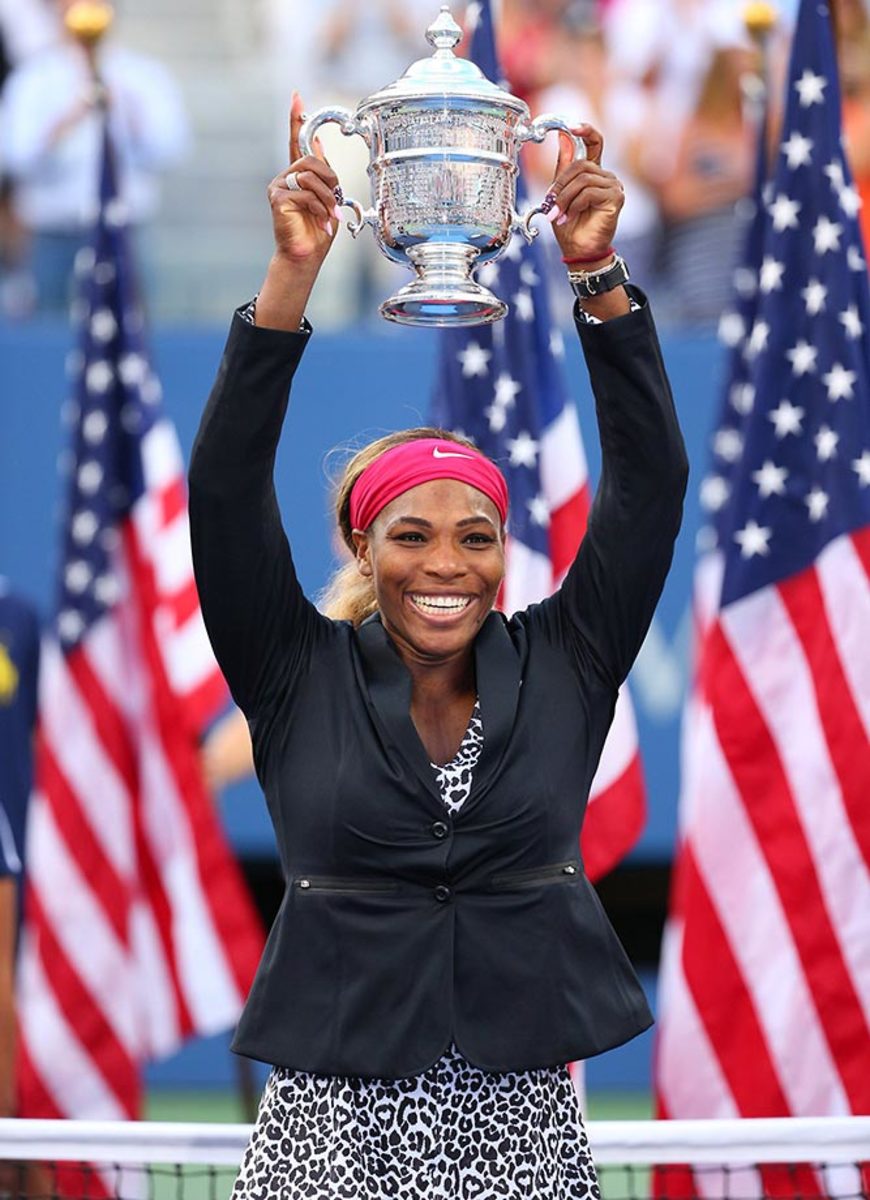
The pressure of winning No. 18 weighed on Serena all season, as she suffered early losses in the first three Slams of the year. But she rebounded to roll to the title in New York. She didn't lose a set all tournament and routed Caroline Wozniacki 6-3, 6-3 to join Chris Evert and Martina Navratilova with 18 career majors, putting her in a three-way tie for second place in the Open Era behind Steffi Graf.
2002 Wimbledon
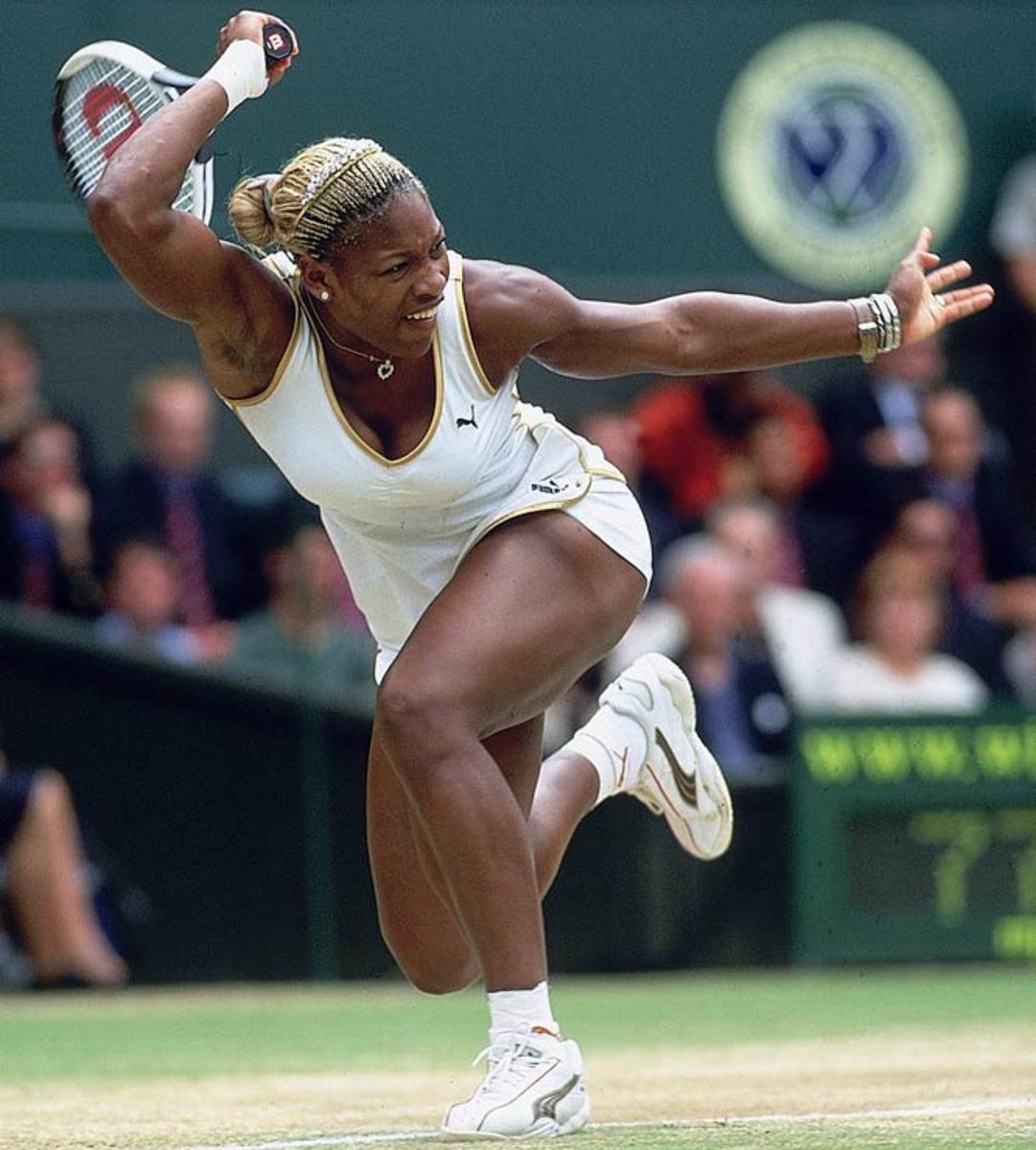
Ranked No. 2 in the world, just behind her sister at the time, Serena denied Venus a third-straight Wimbledon title while winning her first Wimbledon crown.
2009 Wimbledon
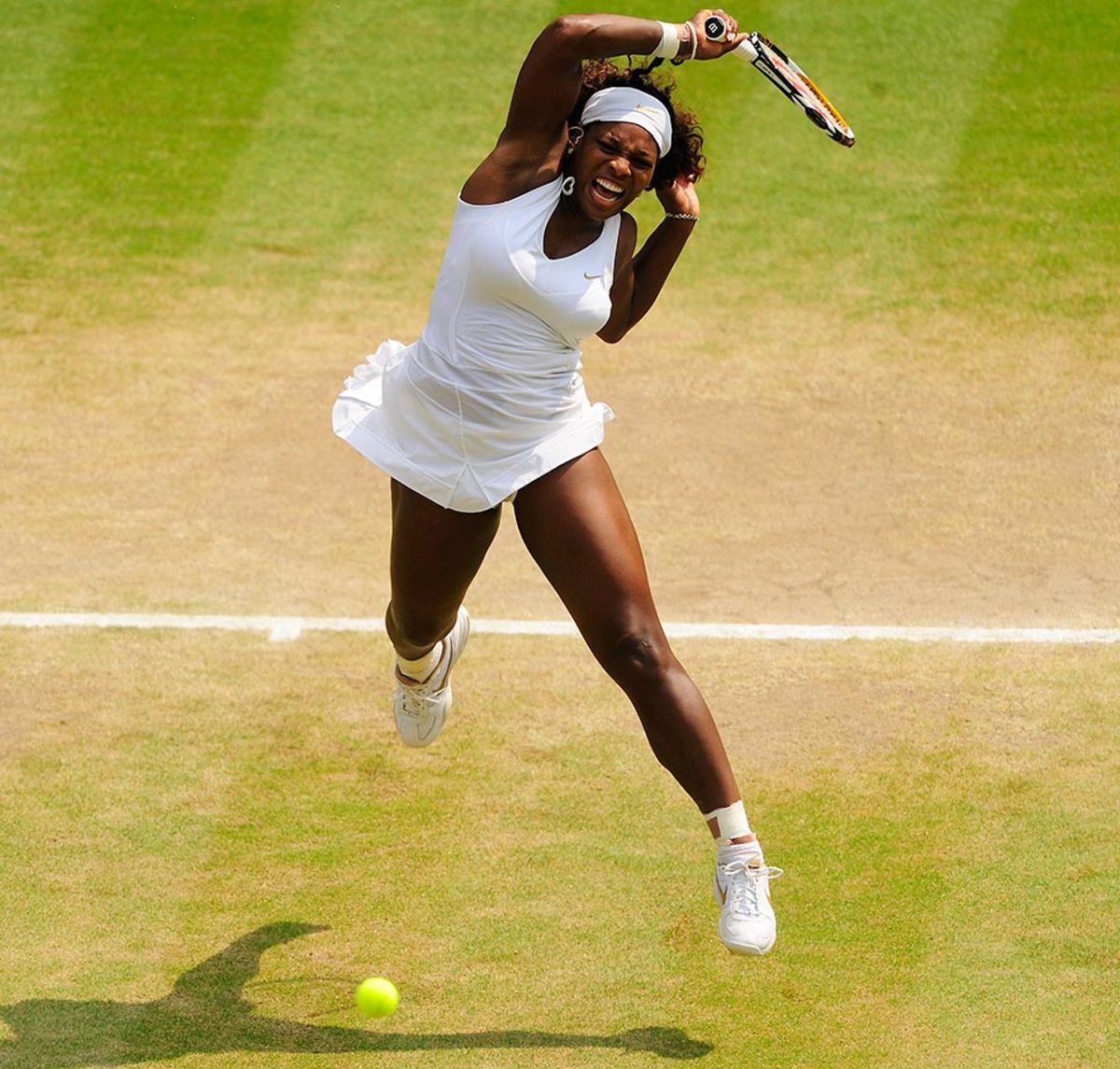
In one of the best women's matches of the decade, Serena saved match point against Elena Dementieva in the semifinals to win 6-7(4), 7-5, 8-6. She then went on to beat Venus in the final 7-6, 6-2.
2012 U.S. Open
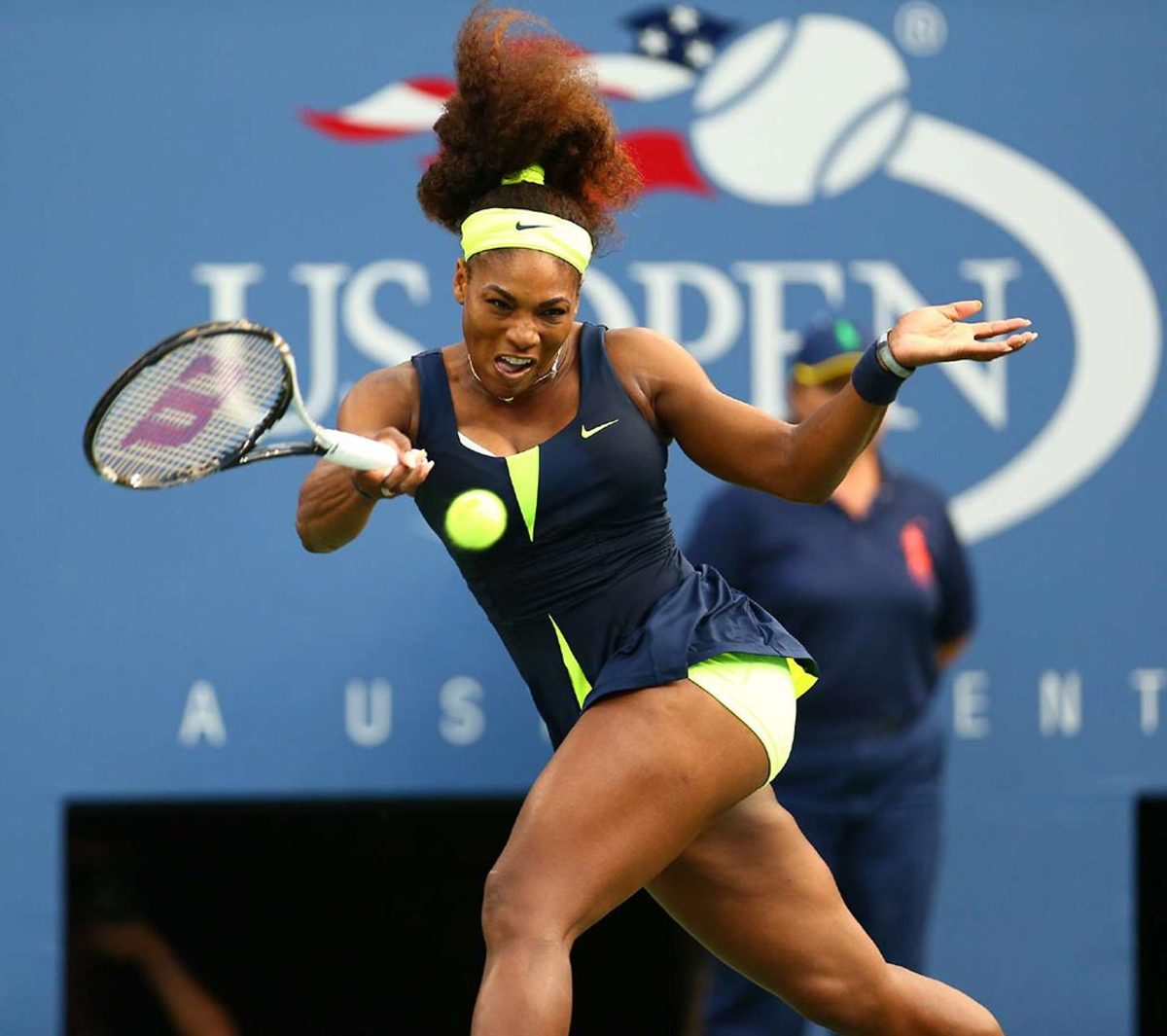
Serena capped off a near undefeated second half of the season by winning her second straight Slam title, 15th overall, beating top-ranked Victoria Azarenka 6-2, 2-6, 7-5 in the final.
2015 Australian Open
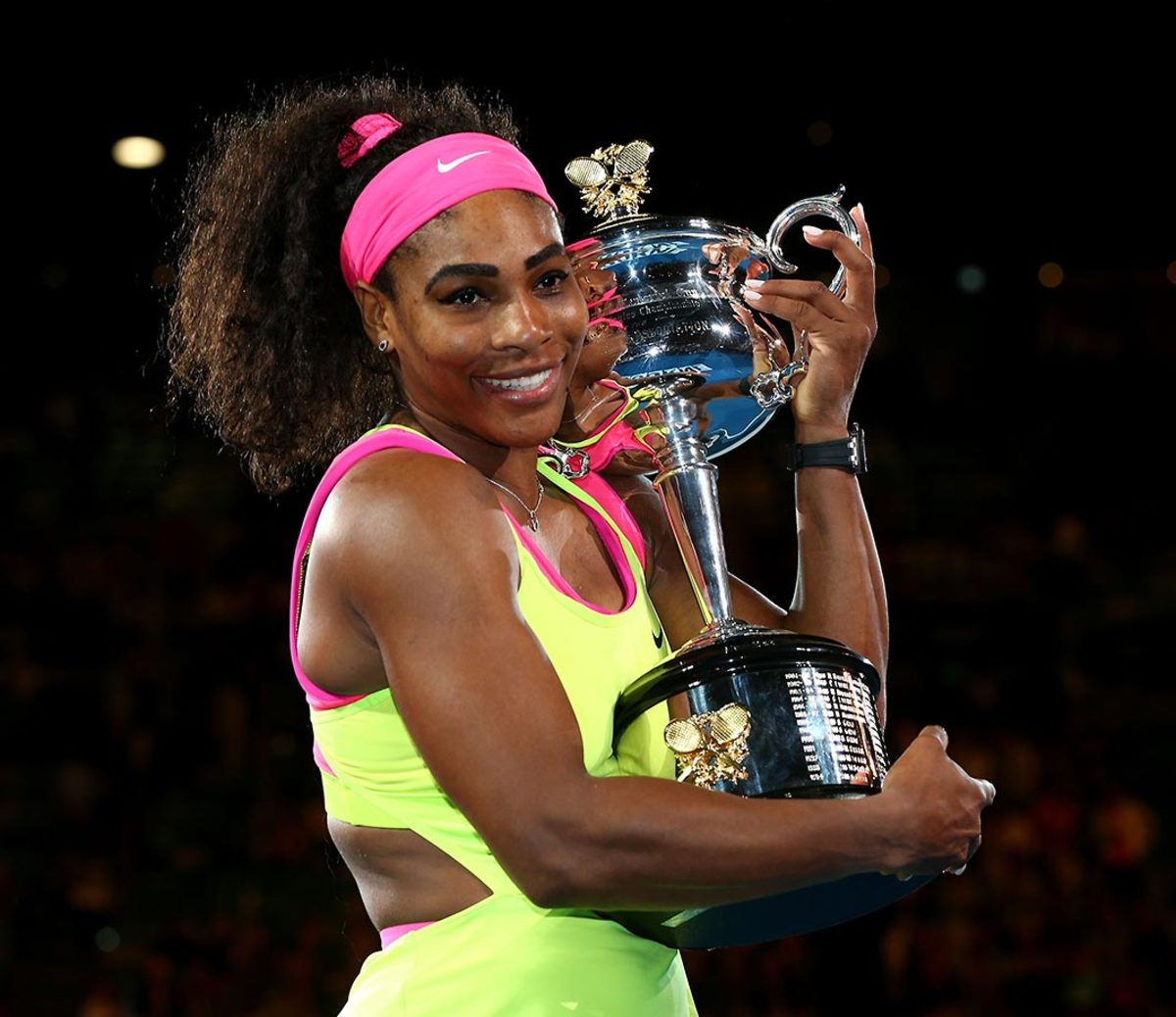
It wasn't an easy two weeks for Serena. She had to battle through a cold and was taken to three sets by two young stars in Garbine Muguruza and Elina Svitolina in the first week. But she rolled through No. 2 Maria Sharapova for the 16th consecutive time, 6-3, 7-6 (5), to capture her 19th major title and set up a real possibility she could catch Graf's Open Era record of 22 Slams.
2015 French Open
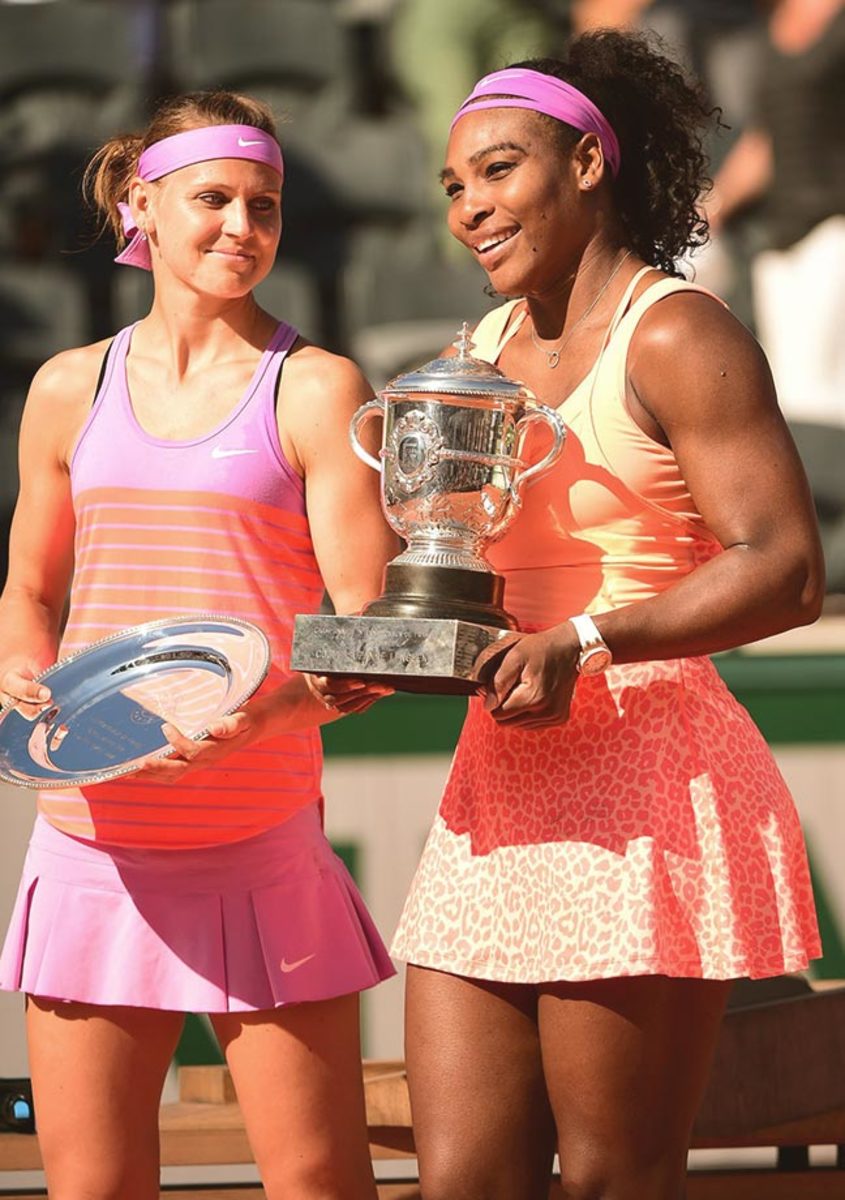
Battling illness throughout the fortnight, Serena dropped the first set in four of her six matches ahead of the final. The No. 1 seed defeated Victoria Azarenka, Sloane Stephens, Sara Errani and Timea Bacsinszky before meeting Lucie Safarova in the finals. In the title match, Serena rallied from 0-2 down the in third set to win, keeping the hopes of both a Serena Slam and calendar Grand Slam alive.
2002 French Open
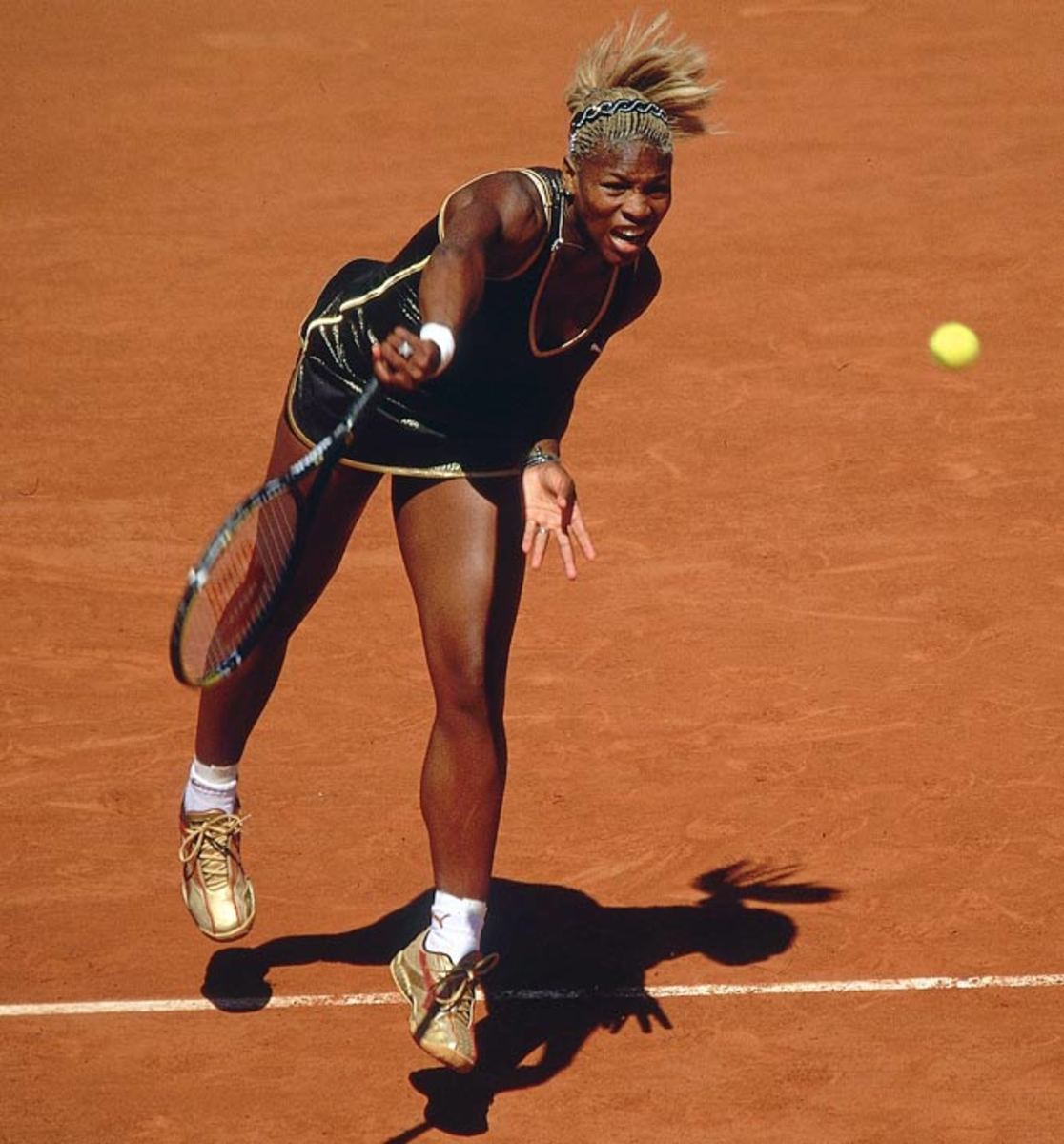
Facing her older sister Venus in a Grand Slam singles final for just the second time in her career, Serena avenged a 6-2, 6-4 loss in the 2001 U.S. Open. The sloppy championship match in Paris featured a combined 101 unforced errors.
2013 U.S. Open
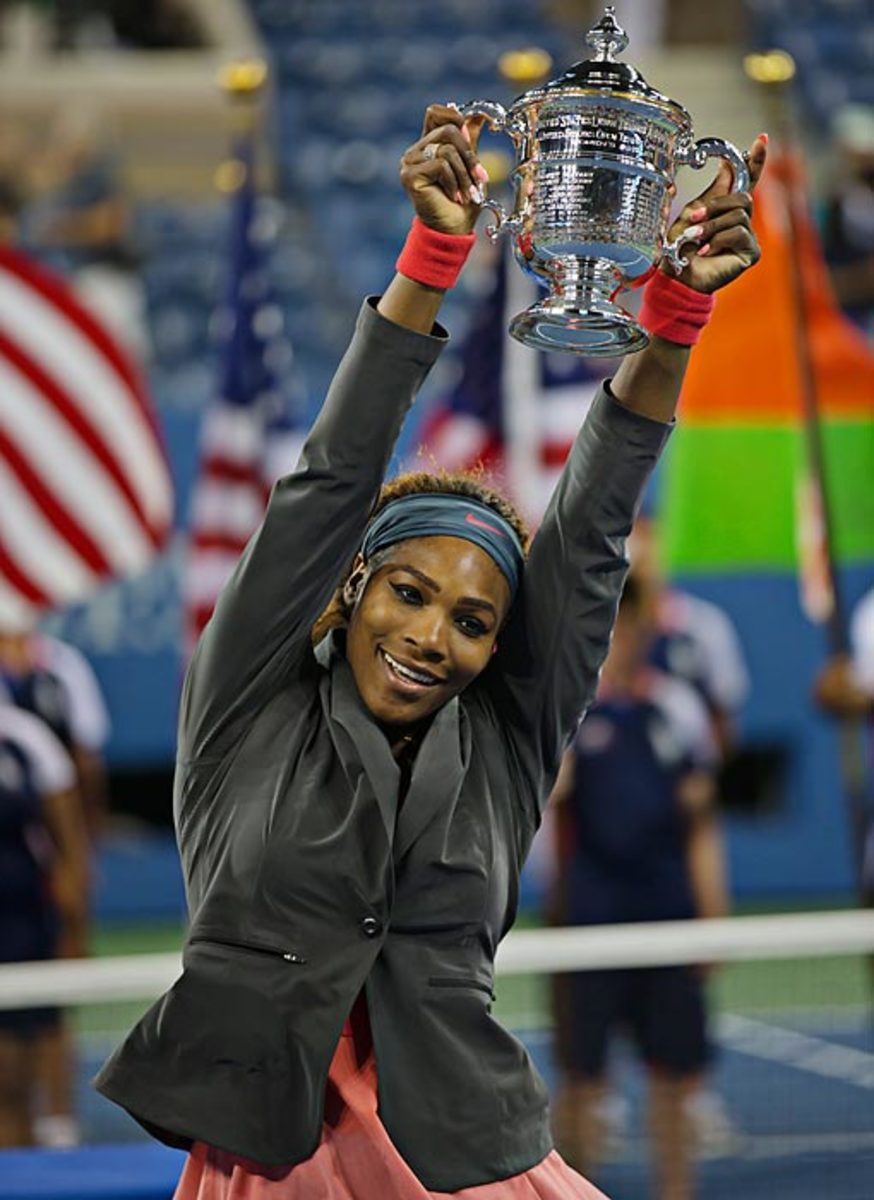
In a tournament in which she dominated, throwing down five bagel sets in seven matches, Serena got her revenge on No. 2 Victoria Azarenka, who had beaten her in all their hard court matches this season. With her 10th title of 2013, Serena became the first woman to ever break $10 million in prize money in a single season.
2008 U.S. Open
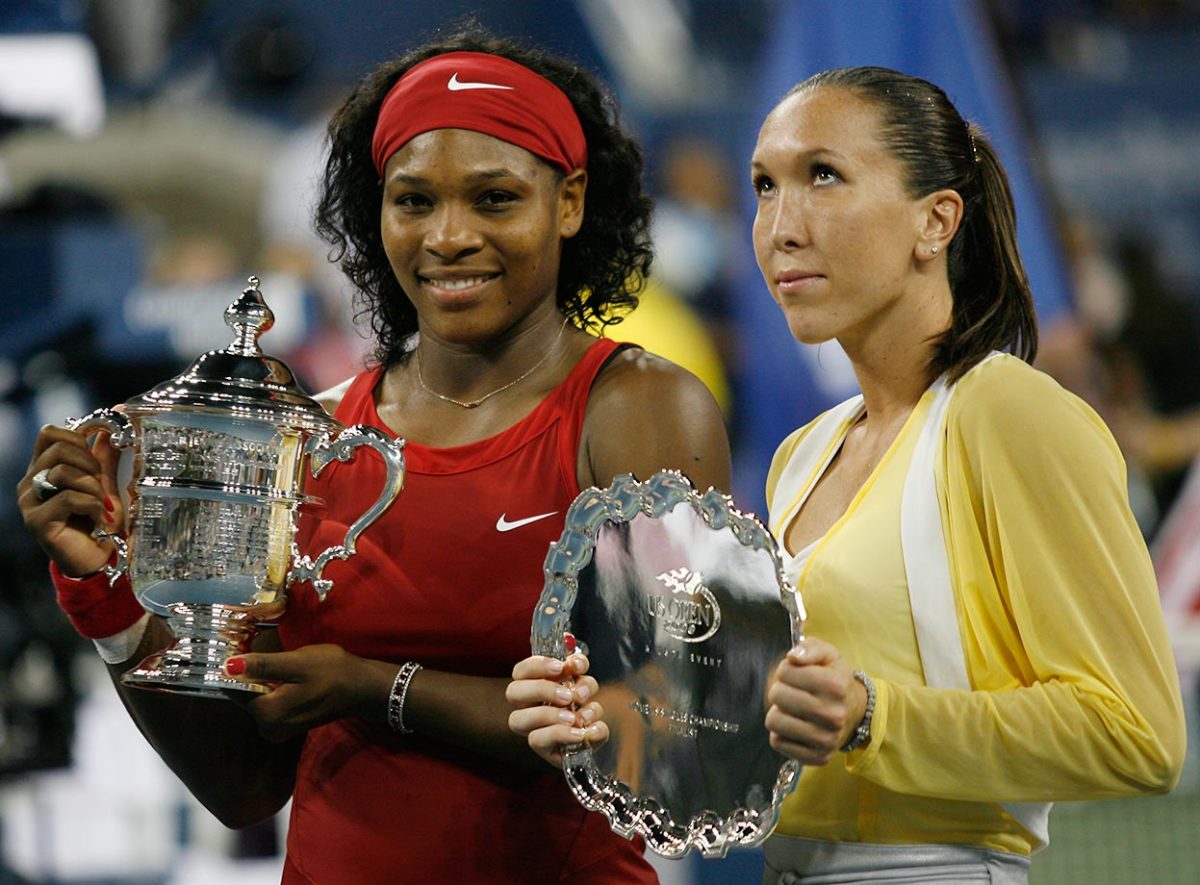
In a tournament in which she beat older sister Venus in two tiebreakers to advance to the semifinals, Serena didn't lose a set the entire tournament and regained the world's No. 1 ranking in the process.
2010 Australian Open
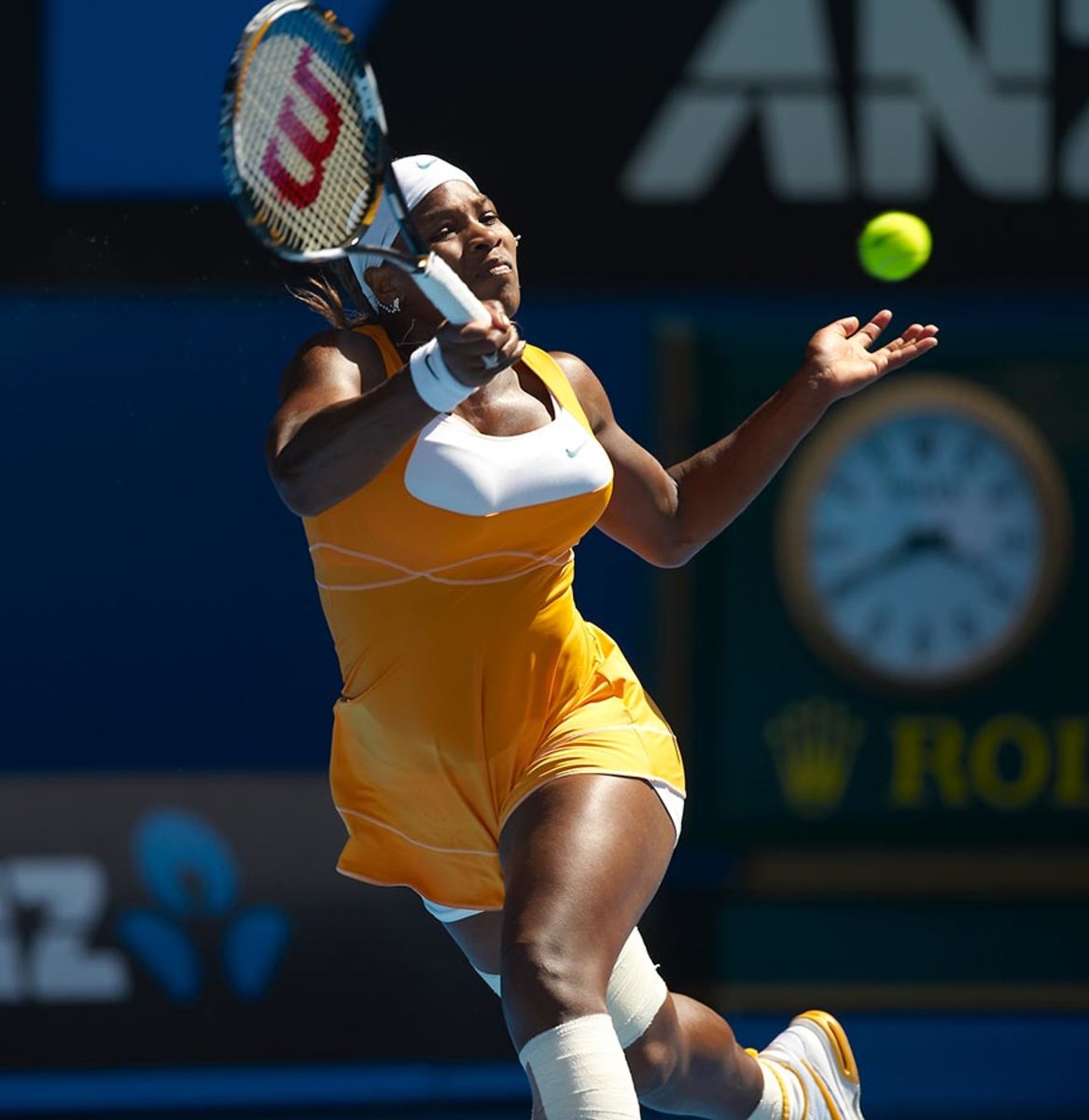
With her 12th title, Serena tied Billie Jean King on the all-time list and continued her mastery of Melbourne by defeating Justine Henin 6-4, 3-6, 6-2. It was her fifth title Down Under.
2003 Wimbeldon
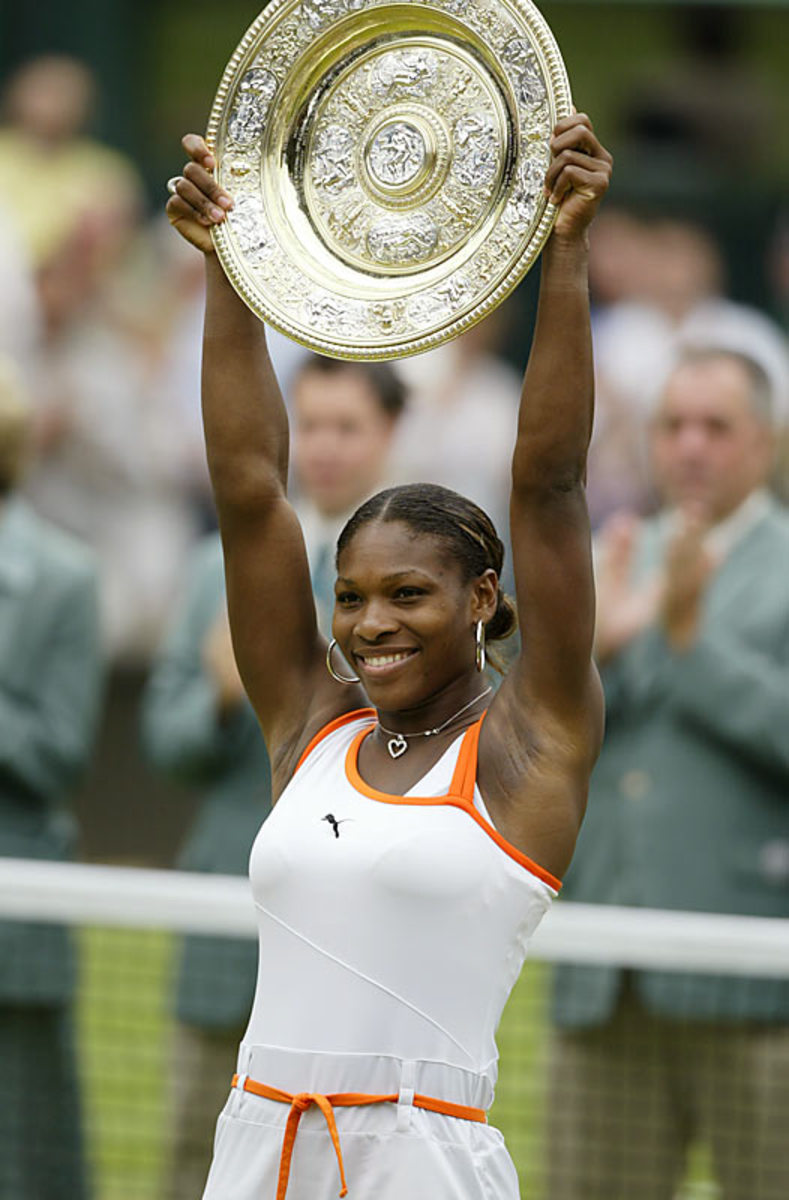
With her big sister slowed by a strained abdominal muscle and a sore left thigh, Serena won for the fifth time in the last six Grand Slams. She had lost to Justine Henin-Hardenne in the semifinals of the 2003 French Open.
2009 Australian Open
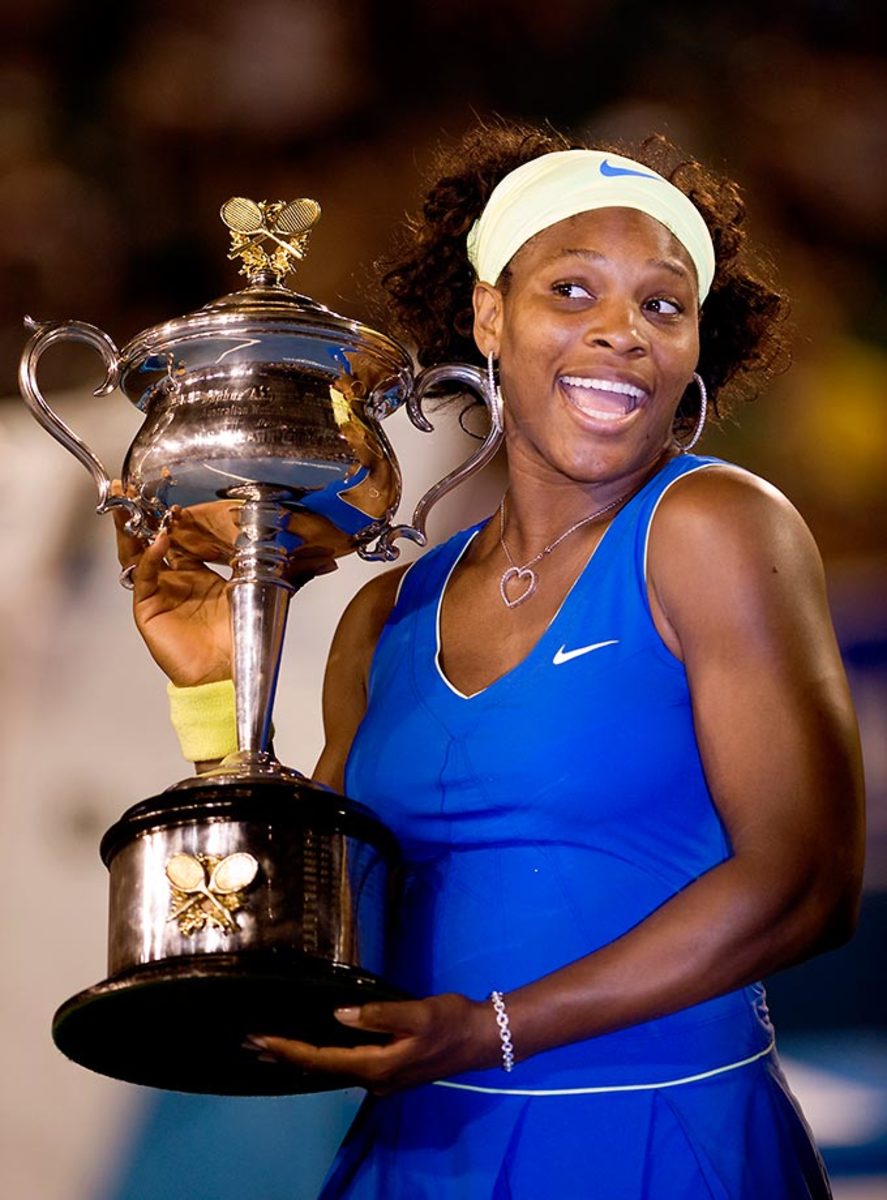
Serena retook the No. 1 ranking in destructive fashion, beating third-ranked Dinara Safina 6-0, 6-3 in 59 minutes. Said the embarrassed Safina, "I was just a ballboy on the court today."
2010 Wimbledon
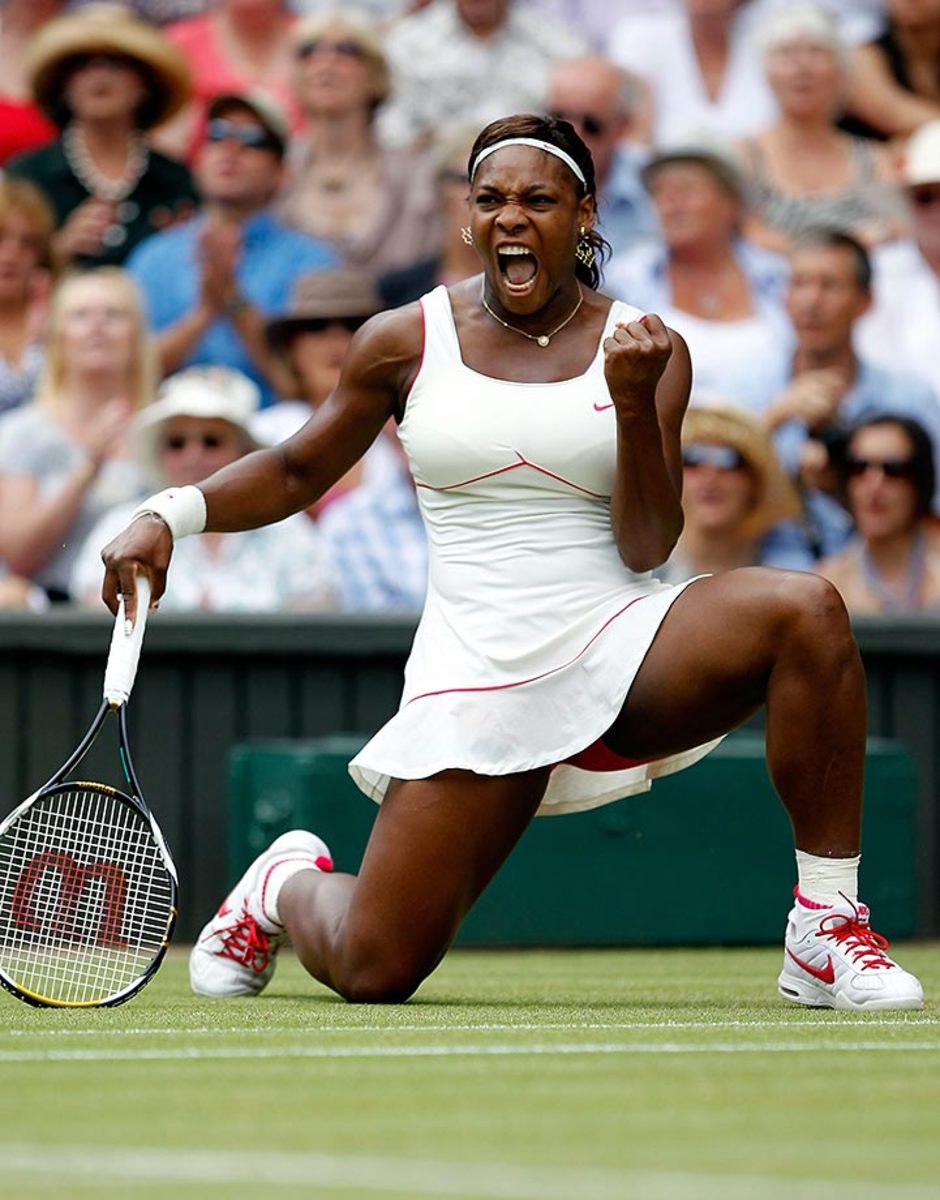
Without dropping a set all tournament, Serena beat Vera Zvonareva 6-3, 6-2 in the final to pass Billie Jean King on the all-time list. During the trophy ceremony she spotted King in the stands. "Hey Billie, I got you!" she joked. She also hit a then-tournament record 89 aces during the fortnight, a mark she would shatter two years later.
Her medical issues have always been cause for confusion. No event, save the murder of her sister Yetunde in 2003, had a more profound impact on Serena’s life than the moment she cut her feet on broken glass in a Munich restaurant on July 7, 2010. “The weirdest thing that ever happened to me,” Serena says. “I didn’t even know I was bleeding.”
She had just won her fourth Wimbledon. She and her hitting partner, Sascha Bajin, and Williams’s 16-year-old nephew were walking out a back exit when she felt a surge of pain. The group stopped, and “by then I look down and there’s a massive puddle of blood on the ground,” Williams says. “And meanwhile there’s blood footsteps because I almost hit an artery; like massive bloody steps. I’m, like, ‘O.K., guys.’ By then I’m getting really woozy. ...”
The lacerations on the bottom of her left foot and on the side and top of her right required 18 stitches and later surgery to repair a right-toe tendon. They also touched off a yearlong absence from the game and a two-year Grand Slam drought, and they may have contributed to her potentially fatal pulmonary embolism and subsequent hospitalization for a bulbous hematoma on her stomach. Yet the restaurant was never named or sued, and the story of how she sustained the injuries was widely described as both a glass dropped and a glass stepped upon. The following day Williams played an exhibition match against Kim Clijsters in Belgium before the largest tennis crowd in history, and within the week she wore high heels -- with visible Band-Aid strips -- to Carmelo Anthony’s wedding and her own pre-ESPYs house party, and bounced on a trampoline for the cameras.
The point isn’t that the feet weren’t injured. Clijsters saw the vicious wounds up close. Serena, who says she only wears heels for show on red carpets, was still wearing a walking boot and wheeling herself about on a knee scooter six months later. But the conflicting accounts and images in the aftermath only compounded the lack of confirmed fact. Then, on March 2, 2011, the same morning that Williams released a statement from Los Angeles saying that she’d had emergency surgery for the hematoma and was “at home now and working with my doctors to keep everything under control,” she showed up in Las Vegas for an appearance at an Autodesk sales conference.
By the time Serena began reeling about at Wimbledon, all the groundwork for guesswork had been laid. “Nothing is clear,” Shriver says. “And if you think about the mystery of the cut foot, the pattern in the past is that you’re never sure of anything. That will probably continue. There will be mysteries.
“Whether more will be revealed? I don’t know. But what we saw was an alltime great champion unable to strike a tennis ball.”
U.S. Open women's preview: Serena isn't only Williams who can contend
After umpire Kader Nouni announced the end of the Wimbledon doubles match, Venus -- looking to the public like Venus again -- gently took her sister’s hand and guided her back toward her chair. The women are 34 and 32, respectively, but for those three short steps it was as if 25 years had dropped away and they were wandering across some baked street in Compton. “I remember there were times when she’d walk me home, she’d give me her lunch money, she would always protect me, she’d always take care of me,” Serena says. “Like I am almost her baby. She would die for me.”
It bears repeating, still: The Williams sisters may be the greatest sports story ever. Separately they’ve won five Wimbledons apiece; together their 24 Grand Slam singles titles equal the alltime haul of Margaret Court. They can seem blasé about this at times, especially Serena, but don’t worry. She’s amazed.
“Love is, I think, one of the strongest things that you can have,” Serena says. “I have a sister, and she knows exactly what I’m going through. She knows everything about me. She is the only person I can really talk to after I lose, because only she knows how I feel. Nobody else. They can feel, they can try, but they’re just not on that level. Only she understands it.”
There’s a remarkable scene in the 2013 documentary Venus and Serena. Serena is walking on a treadmill at the 2011 U.S. Open, furiously ripping into Bajin for a “patty-cake” hitting session before that day’s win, demanding that he raise his game to help raise hers. Rarely, if ever, has there been so revealing a glimpse -- even as she uses the n-word in her rant -- of both her professionalism and paranoia. “I go out there playing girls that want to beat the f------ hell out of me,” she says. “They don’t play patty-cake against me. They hate me.”
Much has happened since. Serena, a practicing Jehovah’s Witness who studies Biblical texts “about love and bonds not just for your sister but your fellow man,” has spent the last three years watching Venus manage a body sapped by the fatiguing effects of Sjögren’s syndrome. All Serena’s fiercest rivals have moved on, and her warm relations with younger pros like “bestie” Caroline Wozniacki have made for a sweeter, if far less interesting, tour.
But nothing’s changed. She can like someone in the locker room, but between the lines Serena insists that she despises her opponents -- and remains certain that the feeling is mutual. “You’ve got to have that hate,” Serena says. No exceptions. “I hate Venus when I’m playing her,” she says.
Serena excited to face the 'future of American tennis' at U.S. Open
This was two days after their semifinal match in Montreal, where for the first time in five years after five straight losses, Venus came back to beat Serena in three sets. More than any other, it was the moment that showed Venus could indeed compete again at a high level. What Serena said simply didn’t seem possible. Everyone knows: It must be conflicting to play your sister, your closest friend. You can’t hate her. ...
“I hate -- and I did,” Serena says of the Montreal match. “I was so mad every time she hits those winners and she gets those balls. It’s like, Oh, I can’t stand her right now. I think it can be easier to hate a sister actually, right? Because you can get so mad at your sister and still ... in 10 years, who cares? Who is going to remember this? They’re going to remember the win, and you’re going to remember the important moments. You’re not going to remember, Should I be nice? Should I not hit this shot? No, you’re not going to think about that. You’re going to think about the big things. That’s where my mind goes when I play Venus or anyone I get along with.”
****
Maybe all she needed was a good crisis. Maybe controversy, doubts, any kind of friction, is what makes her great. It’s as good an explanation as any. When Williams arrived at her final Open tune-up in Mason on Aug. 10, she was still trying to reclaim the high-octane game that she’d been missing all year. “Yeah, it’s a difficult moment,” Mouratoglou said before her first match. “We’re here to face it and find solutions. I don’t know if it’s going to pay off now or in six months, but it’s going to work.”
He’s seen it before. Fresh off her breakup with her boyfriend, the rapper Common, and a first-round loss in the 2012 French Open, Serena hunkered down at her Paris apartment and asked the 44-year-old Frenchman if she could train at his nearby academy. The first day, the man who calls himself the Mastermind watched her hit: She was 30, hadn’t won a major in two years; her footwork was shot. After 30 minutes Williams stopped and said, “Talk to me.”
Mouratoglou had been watching her closely for years, but more so since he stumbled upon her notebook in a tournament car at Wimbledon in 2010 and found himself entranced: page after page of meticulous notes on strategy, practice habits, tennis at large. He has coached Marcos Baghdatis, Aravane Rezai, Jeremy Chardy, Grigor Dimitrov. “I’ve never seen a player who has a notebook where he or she would write during practice what she needs to think about, when she serves, what she needs to focus on,” he says. “She doesn’t want chance to be part of the result. This is a very professional approach that I’ve not seen many times. Players don’t write.”
Mouratoglou had always defended Williams’s father, Richard, when other coaches and the French media dismissed him as a lucky amateur; the man, he’d argue, produced two alltime champions! Now one of them was declaring that she’d do whatever it took to win again.
Mouratoglou told Williams things she’d heard before -- your balance is off, you’re not coming forward, no one can beat you -- but now packaged in his own coruscating ambition and thick reports on opponents. A month later she won Wimbledon.
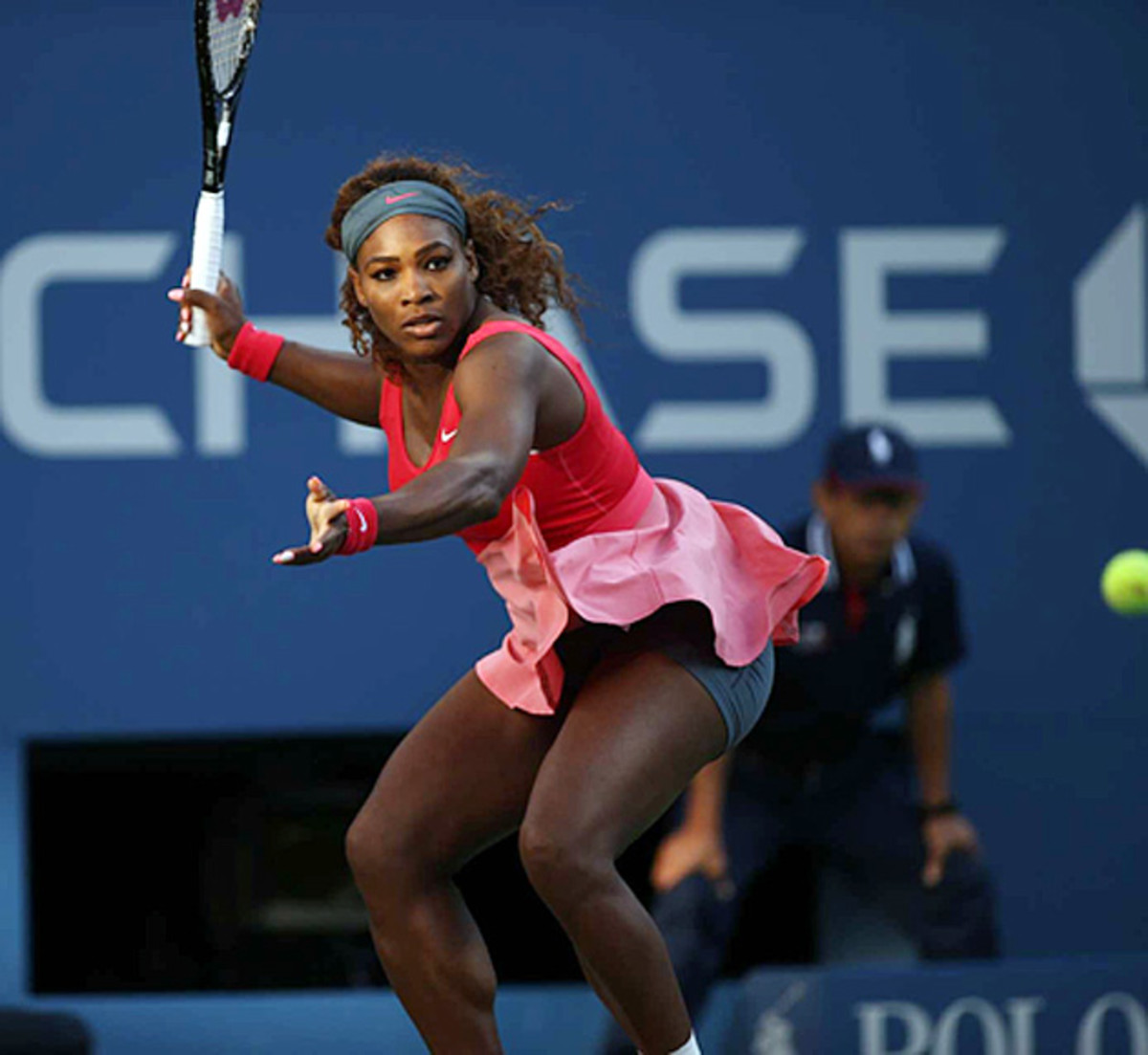
Mouratoglou split with Dimitrov, perhaps the most gifted young male on tour, soon after; Serena wanted him full-time. “She’s not like any other,” Mouratoglou says. Then came their tear, 102 wins, five losses: Serena winning Olympic gold, the 2012 U.S. Open, Roland Garros for the first time in a decade, another U.S. Open, a career-high 11 titles in ’13. Her tennis was smarter, more patient. “She became a student of the game,” Evert said. “She had a second life.”
Williams insisted on displaying her major trophies not at home in Florida or California, but in a showcase at Mouratoglou’s academy. “I feel like I found a diamond,” Serena said last week. “Patrick has brought a lot to me. He’s definitely brought peace and calm and a lot more. He’s everything I’ve ever needed and more. I’m very grateful for that.”
He was also married with three children. Soon photos appeared of player and coach canoodling, arm in arm, about Paris. Maria Sharapova called them out at a pre-Wimbledon press conference in 2013 -- “Maybe she should talk about her relationship and her boyfriend that was married and is getting a divorce and has kids” -- but Williams didn’t seem to mind. She looked, and played, as if ecstatic.
Word around tennis is that for at least the last few months, the partnership has been strictly professional. As always, Mouratoglou declined to comment, but he is now divorced. Asked last week if they are -- or were -- a couple, Serena said, “It’s just coach and student. Absolutely, we’re not together at all.”
Roger Federer on historic career: 'I never thought it would be like this'
Whatever the situation -- and however long it can last -- their dynamic seems to be humming again. “I never thought she would’ve hung in for this long,” Roger Federer said last week. “It didn’t look good for a few moments in her career; you thought she was going to say, I’ve had it, and walk away. But she’s kept herself in great shape and has been playing well. I’m really happy for her.”
In Ohio, Williams’s serve came and went, but the verve resurfaced when needed. Down 3–1 to Ana Ivanovic in the first set and facing three break points, she unleashed Taquanda or Psycho to crack some sizzling forehands and bullet serves and one clever ace to hold, then stalked to her chair screaming, “Come on, Serena: Fight. ... B----!” From there, the 6-4, 6-1 win, her first Western & Southern title, was never in doubt. Williams heads into the Open on a 12-1 hard-court roll, her best stretch all year. The one blot was that loss to Venus in Canada, but Mouratoglou blames himself. Usually he provides Serena with detailed breakdowns of opponents’ flaws. For her sister, he couldn’t bring himself to point out even one.
“Because I thought it was very special, I didn’t want to go too far,” Mouratoglou said. “Serena had beaten her every time for so many years, so I didn’t feel like I had to do more -- and I respect their relationship. But looking back, she lost. So it was bad.”
Still, Williams is right. In a decade such a small loss won’t be remembered. Who knows? Maybe what happened at Wimbledon, too, will be seen as a mere blip, the setback that set up one more dramatic climb. Maybe she’ll have moved past even Steffi Graf’s mark of 22 majors, and everyone will dwell only on big things.
“She cares. Serena wants to make history. She likes being famous,” says Billie Jean King. “Up to now I would’ve said Graf: Best singles player, and Martina: Best singles, doubles and mixed. But I think Serena is probably our best athlete ever. She’s the best ever, but she’s still got to earn the titles. She’s got to win and she knows it.”
Lord knows, the New York crowd will be with her now. Being the host nation’s best hope and the oldest No. 1, ever, confers privileges, not least of which is a slobbery forgiveness -- see Agassi, Andre and canonization -- of every old quirk and ugly incident. Who can beat her? No. 3 Li Na is out, Victoria Azarenka is hobbled, Sharapova hasn’t beaten Serena in a decade. Venus presents a unique problem, but Mouratoglou vows that he is through being kind.
“Next time it’s going to be different,” he said. “I don’t think she’s going to lose against her again.”
